

What is leisure tourism, and what examples?
- March 2, 2023
Leisure tourism, a popular form of travel, refers to the act of taking a trip for the purpose of relaxation, recreation, or enjoyment. It involves participating in activities typically done during one’s free time, such as sightseeing, shopping, dining out, and engaging in cultural events. While leisure tourism can take many forms, it is often associated with vacations and getaways, allowing individuals to escape the stress of everyday life and explore new places.
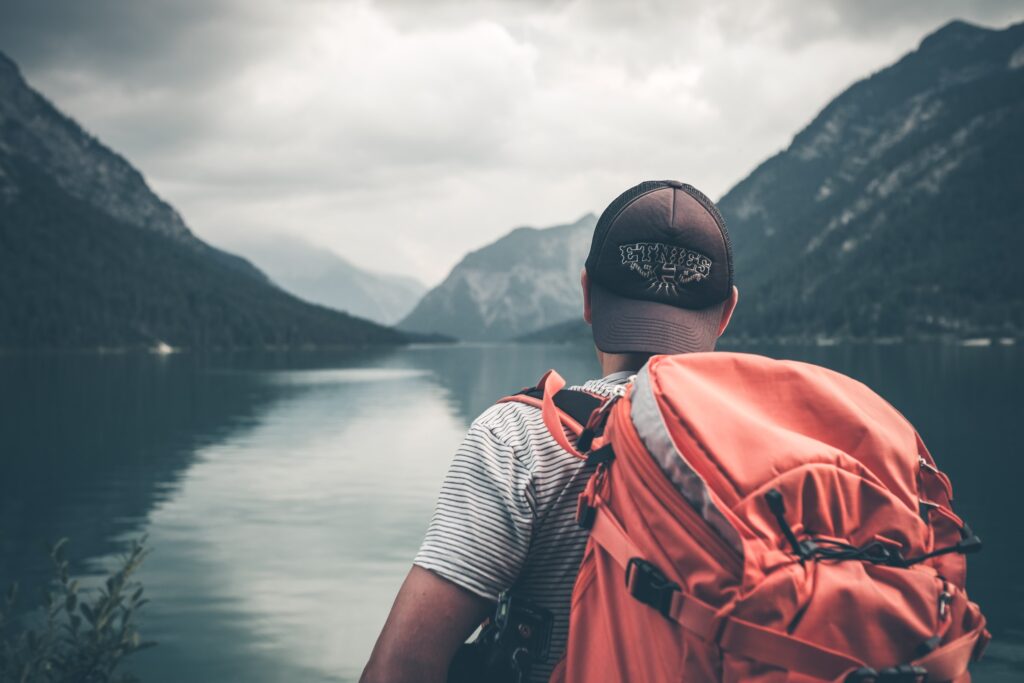
Despite the COVID-19 pandemic’s impact on travel, leisure tourism remains a popular choice for individuals looking to recharge and explore the world. From exploring famous landmarks in Paris to sunbathing on the beaches of Bali, there are countless examples of leisure tourism destinations and activities available worldwide. In this article, we will explore the concept of leisure tourism and provide several examples of popular destinations and activities you can add to your travel bucket list.
What is leisure travel?
Leisure travel refers to traveling for pleasure rather than business or work-related purposes. It is a type of travel that involves exploring new destinations, engaging in recreational activities, and relaxing and unwinding. Whether traveling alone or with friends and family, leisure travel provides a much-needed break from the daily routine and allows individuals to experience new cultures, environments, and experiences.
For the person traveling, leisure travel can provide a wide range of benefits, including learning about different cultures, making new friends, and creating lasting memories. It can also provide a sense of adventure, challenge, and excitement that can be hard to find in everyday life. Additionally, leisure travel can help reduce stress levels and improve mental health by providing a break from the daily routine.
As a tourist, leisure travel can also significantly impact the environment and local communities. Responsible tourism practices, such as supporting local businesses, using eco-friendly transportation, and being mindful of waste, can help minimize negative impacts and promote sustainable tourism.
Of course, finances are an essential consideration for leisure travel. Depending on the destination, activities, and accommodations chosen, leisure travel can be a costly endeavor. However, with careful planning, budgeting, and research, it is possible to enjoy leisure travel without breaking the bank. Many travel websites and apps offer discounts and deals on flights, hotels, and activities, making planning an affordable and enjoyable leisure travel experience easier than ever.
Types of leisure tourism
Adventure tourism.
One of the most popular types of adventure tourism is extreme sports. From bungee jumping to skydiving, there’s no shortage of heart-pumping activities to get your adrenaline flowing. These experiences are not for the faint of heart, but they offer a rush like no other and can be incredibly rewarding for those who take the plunge.
For those who prefer a slower pace, there are plenty of other adventure tourism options. Hiking, camping, and backpacking are all popular choices that allow you to explore the great outdoors and connect with nature. Whether traversing rugged mountain trails or pitching a tent in a remote wilderness area, these activities offer a chance to escape the hustle and bustle of everyday life and immerse yourself in the beauty of the natural world.
Of course, adventure tourism is only for some. Some people prefer to stick to more traditional types of leisure tourism, such as beach vacations or city breaks. However, you love a challenge and aren’t afraid to step outside your comfort zone. In that case, adventure tourism can be an incredibly rewarding and life-changing experience.
So, whether you’re looking to bungee jump off a bridge, hike through the wilderness, or explore a new city on foot, there’s an adventure tourism experience that’s perfect for you. So why not take the leap and try something new? You never know what amazing experiences and memories you might create!
Cultural tourism
One of the most exciting things about cultural tourism is that it can take you to places you never imagined. Whether exploring ancient ruins in Greece, visiting museums in Paris, or attending festivals in Japan, there are countless opportunities to learn and grow through cultural tourism.
Of course, cultural tourism doesn’t have to take you to far-flung destinations. There are plenty of opportunities to explore different cultures closer to home, whether visiting museums and art galleries, attending cultural events in your city, or trying new foods at ethnic restaurants.
For those who love to travel, cultural tourism offers a chance to see the world differently. Rather than just ticking off tourist attractions, cultural tourism allows you to connect with locals, learn about their way of life, and gain a deeper appreciation for the rich diversity of our planet.
So whether you’re a history buff, an art lover, or simply someone who wants to experience something new, cultural tourism has something for everyone. So why not step out of your usual environment and immerse yourself in the rich tapestry of cultures that make our world so fascinating? Who knows what incredible experiences and memories await you along the way!
Suppose you’re someone who cares deeply about the environment and wants to make a positive impact on the world. In that case, ecotourism might be the perfect choice for your next leisure tourism adventure. This tourism category is all about traveling responsibly and sustainably, focusing on preserving natural habitats and supporting local communities.
One of the main things to consider when it comes to ecotourism is your travel’s impact on the environment. This means choosing eco-friendly accommodations and activities, such as staying in lodges that use renewable energy, participating in wildlife conservation efforts, and using low-impact transportation methods like hiking or cycling.
Another important factor to consider is your travel’s impact on the local community. Ecotourism aims to support local economies and promote cultural exchange, so it’s important to choose tours and activities led by local guides and support local businesses.
Of course, ecotourism is not just about being responsible and sustainable – it’s also about having fun and experiencing the beauty of nature. Whether you’re exploring pristine forests, snorkeling in coral reefs, or observing wildlife in their natural habitats, there’s no shortage of amazing experiences to be had in ecotourism.
Suppose you’re passionate about the environment and want to positively impact the world while having fun and exploring new places. In that case, ecotourism might be the perfect fit for you. And as the tourism industry continues to grow and evolve, there are plenty of opportunities for jobs and careers in eco-tourism, making it a great choice for those who want to make a difference while pursuing their passions.
Beach tourism
Beach tourism is leisure tourism that revolves around visiting coastal destinations and enjoying the beach environment. This type of tourism is popular among people of all ages, from families with young children to solo travelers seeking relaxation and recreation.
Beach tourism destinations vary widely, from crowded beaches in popular tourist hotspots to secluded and pristine shorelines in remote locations. Some of the most popular beach tourism destinations include the Caribbean, Hawaii, the Maldives, and the Mediterranean.
Activities commonly associated with beach tourism include swimming, sunbathing, beach volleyball, surfing, and water sports such as jet skiing, parasailing, and snorkeling. Many beach tourism destinations also offer a range of amenities, such as beachfront restaurants, bars, cafes, and hotels and resorts catering to beachgoers.
Beach tourism can be a great way to escape the stresses of everyday life and enjoy some time in the sun and sand. It offers many experiences, from relaxing and soaking up the sun to more active pursuits such as water sports and beach games. For those who love the ocean and the beach environment, beach tourism is a must-try type of leisure tourism.
Health and wellness tourism
Health and wellness tourism is a type of leisure tourism that focuses on improving physical, mental, and emotional well-being through various activities and services. It involves traveling to destinations that offer specialized programs and services to help visitors achieve their health and wellness goals.
Some of the most common health and wellness tourism activities include spa treatments, yoga and meditation classes, fitness activities, healthy eating, and alternative medicine practices such as acupuncture and herbal remedies. Health and wellness tourism destinations can range from specialized wellness centers and retreats to traditional vacation spots that offer a variety of wellness-focused activities and services.
Health and wellness tourism has become increasingly popular in recent years as more people seek to prioritize their health and well-being. This type of tourism offers a range of benefits, including stress relief, improved physical health, and a renewed sense of energy and vitality.
In addition to the benefits for individual travelers, health and wellness tourism can also positively impact local communities. It can create job opportunities in the wellness industry and stimulate local economies through increased tourism.
Overall, health and wellness tourism is a great option for those seeking to prioritize their health and well-being while enjoying leisure travel’s benefits. With a wide range of activities and services available, there is something for everyone in the world of health and wellness tourism.
Can business travelers have leisure time on a business trip?
Yes, business travelers can have leisure time on a business trip, depending on their schedule and the purpose of their trip. Many business travelers often have free time during their trip, either before or after their work obligations are completed. During this time, they may choose to engage in leisure activities and explore the destination they are visiting.
Business travelers may also extend their trip for a few days or a weekend to have more time to explore the destination and engage in leisure activities. This is often called “bleisure” travel, a combination of business and leisure travel.
However, it is important to note that the amount of leisure time a business traveler can have may depend on the nature of their business trip and the expectations of their employer. Sometimes, the schedule may be tightly packed with meetings, and there may be little free time for leisure activities. Additionally, some employers may have policies restricting the amount of leisure time a business traveler can have or the type of activities they can engage in during their free time.
Ultimately, it is up to the individual business traveler to determine how much leisure time they can have on a business trip and to balance their work obligations with their desire to explore and engage in leisure activities.
What are the examples of leisure tourism?
There are many examples of leisure tourism, as it encompasses many activities and destinations. Some examples of leisure tourism include:
- Beach tourism – visiting coastal destinations for sun, sand, and water activities.
- Adventure tourism – engaging in activities such as hiking, skiing, and whitewater rafting in natural environments.
- Cultural tourism – visiting destinations to learn about the local culture, history, and customs.
- Health and wellness tourism – traveling to destinations that offer specialized programs and services to improve physical, mental, and emotional well-being.
- Ecotourism – visiting natural environments to observe and learn about the local flora and fauna while minimizing environmental impact.
- Rural tourism – visiting rural destinations to experience rural life and engage in farming, fishing, and hunting activities.
- Wine tourism is visiting destinations known for their wine production and touring vineyards and wineries.
- Sports tourism – traveling to participate in or observe events such as marathons, golf tournaments, and soccer matches.
- Food tourism – traveling to destinations to experience local cuisine and food traditions.
- Educational tourism is traveling to destinations to learn about specific subjects, such as art, history, or language.
These are just a few examples of leisure tourism, and many other types of tourism can fall under this category. Ultimately, leisure tourism is about enjoying the free time and engaging in activities that provide relaxation, entertainment, and personal enrichment.
In conclusion, leisure tourism encompasses various activities and destinations, from beaches to educational tourism. The purpose of leisure tourism is to provide individuals with opportunities for relaxation, entertainment, and personal enrichment. People engage in leisure tourism to escape from their usual environment, explore new destinations, and engage in activities that they enjoy or that interest them.
While there are many types of leisure tourism, all of them share a common goal of providing individuals with a break from their daily routines and an opportunity to have fun and create memorable experiences. As the tourism industry continues to grow and evolve, we can expect to see new types of leisure tourism emerge, and existing types become more popular.
Ultimately, leisure tourism plays an important role in the tourism industry and the lives of individuals who engage in it. It provides opportunities for personal growth, cultural exchange, and economic development. Whether it’s a relaxing beach vacation, an adventurous trek through the wilderness, or an educational trip to a historic site, leisure tourism has something to offer everyone.
David Stokes
Related posts.

8 Hacks to Never pay for Luggage
- March 24, 2023
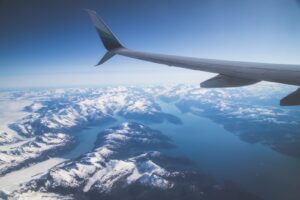
Smart Hacks to Book Cheap Flights in 2023
- March 22, 2023
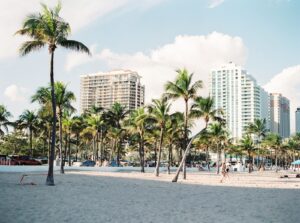
8 Famous Cities in the USA You Must Visit
- March 3, 2023
Trending now


The 17 different types of travel
Disclaimer: Some posts on Tourism Teacher may contain affiliate links. If you appreciate this content, you can show your support by making a purchase through these links or by buying me a coffee . Thank you for your support!
Travel and tourism is a diverse industry and there are many different types of travel. The type of travel will determine the methods of business, the types of customer that it attracts and the the destination type that is facilitating tourism. In this article I will tell you all about the main types of travel and give you some examples of each.
The different types of travel
Short breaks, city breaks, countryside breaks, stag and hen parties, special events, mice tourism, short-term work contracts, types of specialist travel, vfr: migrants and expats, types of day trips, to conclude: types of travel, further reading.
Separating the different types of travel into clear segments or categories isn’t always an easy task.
Some types of travel may span more than one category- for example a person can go on a short break that is also corporate travel.
And others may be somewhat subjective- what is a short break? Is it two days? Is it four days? This is not clear-cut.
However, whilst accurately segregating types of travel into distinct categories may not be an easy task, it can be useful to have general classifications.
Categorising holidays into different types of travel helps us to better understand and assess the market segment in question. It also enables better tourism management and planning .
So what are the different types of travel? If video is your thing, watch the short video below, which covers all of the different types of travel, if not, read on…
Leisure travel
Leisure travel generally refers to travel that is undertaken for the purpose of pleasure, enjoyment, relaxation or special interests.
Leisure travel is an important component of tourism , and makes up a significant part of the tourism industry .
There are different ways that someone can undertake leisure travel. I have outlined these below.
Short breaks have become increasingly popular since the advent of the low cost airline .
Cheaper fares and regular flights have meant that people have been able to jet off for a weekend break that may not have previously been possible. In fact, [pre COVID] trends have shown that many people are now choosing to take 2-3 short breaks each year rather than a singular, more traditional summer holiday.
Short breaks are especially popular in areas that are well-connected. In Europe, for instance, it is easy to go on a short break from London to Paris. However, if you lived in Australia , the vast distances between destinations may mean that short breaks are less feasible.
City breaks are a popular type of travel.
Cities have lots to offer such as entertainment options (eating out, shows, events etc), as well as a range of tourist attractions and business tourism opportunities.
Cities are usually well connected by transport, making them easily reachable for tourists.
Rural tourism is very popular since the COVID pandemic. Countryside breaks enable people to enjoy the fresh air and to be socially distant from others.
There are many things to do on a countryside break, from hiking the Mendips , to adventure sports such as rock climbing in places like Cheddar Gorge .
It is a tradition for brides and grroms-to-be to celebrate their forthcoming marriage with a stag party or hen party. Whilst this might last for just a few hours, many people are now choosing to travel to a place outside of their home for a short break.
There are many destinations that are popular for stag or hen parties. These are usually destinations which have a substantial nightlife scene.
In Europe, many people go on a stag or hen party to Riga , Barcelona, Manchester, London, Lisbon, Benidorm, Krakow, Liverpool, Amsterdam… to name but a few.
There are different types of holidays that constitute leisure tourism.
Throughout the history of tourism , package holidays have been a popular type of travel. Packages are put together by tour operators and are then sold by different types of travel agent . This makes travel easier for the consumer.
Many people also choose to undertake independent travel. Whether tourists choose to create a dynamic package or travel on the fly, this is a popular method of leisure travel.
Cruise tourism has also grown considerably in recent years. Cruise ships come in all shapes and sizes and are popular with a wide variety of tourist types. Cruising is a form of enclave tourism .
Many people who travel for leisure are doing so to spectate or be involved in a major sporting event .
There are a large number of events that make up an important part of the sports tourism industry. Some examples include the annual Wimbledon Tennis tournament, the Formula 1 Grand Prix and the Football World Cup.
There are also other major events that people may choose to travel for. This could be, for example, the Chelsea Flower Show in London, the Day of the Dead festival in Mexico , Songkran in Thailand or the Glastonbury music festival.

Corporate travel
One of the most important (but often forgotten about!) types of travel is corporate travel.
Corporate travel, also referred to as business tourism , is any travel that is associated with or related to a person’s job or work.
Corporate travel may or may not involve staying away from home overnight.
Some types of corporate travel that you may encounter include:
MICE stands for- meetings, incentives, conferences, exhibitions. These are four important areas of the corporate travel market.
Many people will travel to attend meetings. Although, with the growth of the shut-in economy and software programmes such as Zoom and Microsoft Teams, travel for meetings has decreased significantly.
Incentive travel is travel which is given as a reward for good performance at work. It is designed to act as a motivator for staff; encouraging them to worker harder, ac hive better results and ultimately make more money for the business.
Conferences and exhibitions are an important tool for sharing ideas and networking. Similarly to meetings, many of these have now been moved online. However, it is unlikely that the conference market will disappear completely, as networking via a computer screen will never yield the same benefits as having a face-to-face conversation.
Training courses are, and will continue to be, essential to successful tourism operations management. Staff need to be trained for the position that they will/are working in and will need to be regularly unskilled.
Staff may also wish to undertake extra training for promotions or to keep up to date with industry developments.
Training courses can be in your place of work, but they can take place in alternative destinations; meaning that they facilitate a form of corporate travel.
Corporate travel can also consist of temporary work contracts. This is when a person is required to work in a location outside of their home environment for a specified period of time.
Whilst the time-frame is not clearly defined, if somebody relocates for work, they are then classified as an expatriate rather than a business tourist.
Work contracts such as these can be based within the employee’s home country or they can be based overseas.
Specialist travel
Specialist travel, often referred to as special interest tourism, is a form of niche tourism. It groups together an indefinite number of types of tourism that are specialist in nature.
Specialist tourism is often linked to a personal hobby, sport or interest. It may also be a type of travel that meets a specific need of a particular tourist or group of tourists.
I have outlined over 150 different types of specialist tourism in my types of tourism glossary – I told you, there are A LOT of different tourism types!
Some of the most common types of tourism include adventure tourism, health tourism, educational tourism, heritage and cultural tourism , gap year travel, conservation, sustainable tourism , responsible tourism and honeymoon tourism.
Visiting Friends and Relatives (VFR)
Visiting friends and relatives (VFR) is one of the biggest market segments in travel and tourism and is one of the most important types of travel.
People travel all around the world to visit their friends and relatives. This is an important form of domestic tourism as well as inbound tourism and outbound tourism .
Sometimes VFR will involve an overnight stay, and other times it will not. Travellers may choose to stay with their friends or relatives in their home or they may book accommodation of their own.
VFR is an especially prominent type of travel in areas with high migration or expatriation. For example, there are thousands of tourists who travel from the UK to India and Poland each year to visit family and friends, This is because there are a high number of Indian and Polish migrants in the UK.
Another important type of travel is day trips. Whilst according to some definitions of tourism, one may not technically be classified as a tourist unless they stay away from home overnight, they are nonetheless a valuable contribution to the tourism economy.
Most people who undertake a day trip will be visiting friends and relatives or in search of leisure or business.
Many people will choose to take a day trip to visit a tourist attraction, to go shopping, to attend an event, to visit the countryside or to take part in various activities.
A day trip can take part close to your home or it can form part of a holiday, i.e. you take a tour from your hotel whilst on holiday.
As you can see, there are many different types of travel, which can broadly be categorised as: leisure travel, corporate travel, specialist travel, visiting friends and relatives and day trips. All of these types of travel provide important contributions to the wider tourism industry and segmentation in this way allows us to assess and organise the industry according to the types of travel that are under scrutiny.
- The 3 Major Types Of Airlines + How They Work
- 50 types of transport from around the world
- 21 Types of Tourists Around The World
- 20 Popular Types of Hotels Around The World
- 150 types of tourism! The ultimate tourism glossary
Liked this article? Click to share!
What Is Leisure Travel and Why Is It Important?
Leisure Travel: An
Have you ever wondered why people travel? Sure, there are the obvious reasons, like seeing new places and experiencing different cultures. But there’s something more to it than that. For many people, travel is a way to relax and escape from the stresses of everyday life. It’s a chance to recharge and come back home feeling refreshed and rejuvenated.
Leisure travel is any type of travel that is done for pleasure rather than for business or other obligations. It can include everything from a weekend getaway to a month-long backpacking trip. And it can be done anywhere in the world, from your own backyard to the most exotic destinations.
No matter where you go or what you do, leisure travel is a great way to broaden your horizons and learn about new cultures. It’s also a great way to meet new people and make new friends. And most importantly, it’s a great way to have fun and create memories that will last a lifetime.
In this article, we’ll take a closer look at leisure travel. We’ll discuss the different types of leisure travel, the benefits of travel, and how to plan your next trip. So whether you’re a seasoned traveler or you’re just starting out, read on for some helpful tips and advice.
What is Leisure Travel?
Leisure travel is travel undertaken for pleasure or relaxation. It is a type of tourism that is distinct from business travel, which is undertaken for work-related purposes. Leisure travel can take many forms, from a weekend trip to a beach to a multi-month backpacking expedition.
Leisure travel is a popular activity for many people, as it offers a chance to escape from the stresses of everyday life and to experience new things. It can also be a way to learn about different cultures and to meet new people.
Types of Leisure Travel
There are many different types of leisure travel, each with its own unique appeal. Some of the most popular types of leisure travel include:
- Domestic travel is travel within one’s own country. This can include visiting cities, towns, and attractions within the country, as well as taking road trips or camping trips.
- International travel is travel to a different country. This can include visiting major cities, exploring smaller towns and villages, or taking part in adventure activities.
- Adventure travel is travel that involves physical challenges or activities, such as hiking, biking, skiing, or rafting. Adventure travel can be a great way to see new places and to push yourself physically and mentally.
- Cultural travel is travel that focuses on learning about different cultures. This can include visiting museums, taking cooking classes, or attending cultural events. Cultural travel can be a great way to broaden your horizons and to learn about different ways of life.
- Ecotourism is travel that is designed to minimize the impact on the environment. This can include staying in eco-friendly accommodations, eating locally-sourced food, and using sustainable transportation. Ecotourism can be a great way to learn about the natural environment and to help protect it.
- Wellness travel is travel that focuses on improving one’s physical and mental health. This can include visiting spas, taking yoga classes, or getting massages. Wellness travel can be a great way to relax and to de-stress.
- Educational travel is travel that is designed to learn about a particular subject. This can include taking courses at a university or college, visiting historical sites, or meeting with experts. Educational travel can be a great way to learn about new things and to expand your horizons.
- Volunteer travel is travel that involves volunteering your time to help others. This can include working with animals, teaching English, or building houses. Volunteer travel can be a great way to give back to the community and to make a difference in the world.
Benefits of Leisure Travel
Leisure travel has many benefits for both the individual and the community. Some of the benefits of leisure travel include:
- Physical and mental health benefits: Leisure travel can help to improve physical and mental health. It can reduce stress, improve mood, and boost energy levels. Leisure travel can also help to improve sleep quality and to reduce the risk of chronic diseases.
- Cultural and educational benefits: Leisure travel can help to broaden one’s horizons and to learn about different cultures. It can also provide opportunities to learn about new languages, history, and customs.
- Social and relationship benefits: Leisure travel can help to strengthen social relationships and to build new friendships. It can also be a great way to reconnect with family and friends.
- Economic benefits: Leisure travel can help to boost the economy by creating jobs and stimulating tourism. It can also help to promote international understanding and cooperation.
Leisure travel is a popular activity that offers many benefits for both the individual and the community. It is a great way to escape from the stresses of everyday life, to learn about new things, to meet new people, and to make a difference in the world.
What Is Leisure Travel?
Leisure travel is travel undertaken for pleasure or relaxation. It is often contrasted with business travel, which is travel undertaken for work purposes. Leisure travel can take many forms, from a weekend getaway to a month-long vacation. It can be done by car, plane, train, or boat. And it can be taken to any destination in the world.
There are many reasons why people choose to travel for leisure. Some people travel to experience new cultures and meet new people. Others travel to learn about history or nature. And still others travel simply to relax and have fun.
No matter what your reason for traveling, leisure travel can be a rewarding experience. It can help you to broaden your horizons, learn new things, and make memories that will last a lifetime.
Planning a Leisure Trip
Planning a leisure trip can be a fun and exciting experience. However, it can also be a lot of work. To make the most of your trip, it is important to do your research and plan ahead.
Here are some tips for planning a leisure trip:
- Set a budget. The first step in planning a trip is to set a budget. This will help you to determine how much you can spend on airfare, lodging, food, and other expenses.
- Choose a destination. Once you have a budget in mind, you can start to choose a destination. There are many factors to consider when choosing a destination, such as your interests, budget, and travel time.
- Book transportation and accommodations. Once you have chosen a destination, you need to book transportation and accommodations. This can be done online or through a travel agent.
- Get travel insurance. It is always a good idea to get travel insurance when you are traveling internationally. This will protect you in case of cancellations, medical emergencies, or lost luggage.
- Prepare for your trip. In the weeks leading up to your trip, you should start to prepare for your trip. This includes packing your bags, getting your passport and visas, and updating your vaccinations.
By following these tips, you can plan a leisure trip that is both enjoyable and affordable.
Travel Safety
When you are traveling for leisure, it is important to stay safe. Here are some tips for staying safe while traveling:
- Be aware of your surroundings. Be aware of your surroundings at all times, especially when you are in unfamiliar places. Pay attention to people who are following you or who seem suspicious.
- Don’t leave your belongings unattended. Never leave your belongings unattended, especially in crowded areas. If you have to leave your belongings, make sure they are in a safe place.
- Be careful about what you eat and drink. Be careful about what you eat and drink when you are traveling. Avoid eating food from street vendors or drinking tap water.
- Stay aware of local laws and customs. Before you travel, make sure you are aware of the local laws and customs. This will help you to avoid any problems.
By following these tips, you can stay safe while traveling for leisure.
Leisure travel can be a wonderful way to experience new cultures, meet new people, and learn new things. By following these tips, you can plan a leisure trip that is both enjoyable and affordable. And by staying safe, you can ensure that your trip is a success.
What is leisure travel?
Leisure travel is travel that is done for pleasure rather than for business or other purposes. It can include activities such as visiting tourist attractions, relaxing on a beach, or taking part in sports or other recreational activities.
What are the benefits of leisure travel?
There are many benefits to leisure travel, including:
- Relaxation: Leisure travel can help you to relax and de-stress from the stresses of everyday life.
- Exploration: Leisure travel can allow you to explore new places and cultures, and learn about different ways of life.
- Social interaction: Leisure travel can provide you with opportunities to meet new people and make new friends.
- Improved health: Leisure travel can help to improve your health and well-being by getting you out of your usual routine and providing you with opportunities to exercise and be active.
What are some popular destinations for leisure travel?
Some of the most popular destinations for leisure travel include:
- Beaches: Beaches are a popular destination for leisure travel, as they offer the opportunity to relax and enjoy the sun, sand, and surf. Some of the most popular beach destinations include the Caribbean, Hawaii, and the Mediterranean.
- Cities: Cities are also popular destinations for leisure travel, as they offer a variety of attractions, such as museums, theaters, and restaurants. Some of the most popular city destinations include London, Paris, and New York City.
- National parks: National parks are another popular destination for leisure travel, as they offer the opportunity to explore natural wonders, such as mountains, forests, and deserts. Some of the most popular national park destinations include Yellowstone National Park, Yosemite National Park, and the Grand Canyon.
How can I plan a leisure travel trip?
Planning a leisure travel trip can be a fun and rewarding experience. Here are a few tips to help you get started:
- Set a budget: The first step is to set a budget for your trip. This will help you to narrow down your options and make the most of your money.
- Choose a destination: Once you have a budget in mind, you can start to choose a destination for your trip. Consider your interests and budget when making your decision.
- Book your transportation: Once you have chosen a destination, you will need to book your transportation. This may include flights, trains, or buses.
- Book your accommodations: You will also need to book your accommodations. This may include hotels, hostels, or Airbnbs.
- Create an itinerary: Once you have booked your transportation and accommodations, you can start to create an itinerary for your trip. This will help you to make the most of your time and see all of the sights that you want to see.
What are some common mistakes to avoid when planning a leisure travel trip?
There are a few common mistakes that people make when planning a leisure travel trip. These include:
- Not setting a budget: One of the biggest mistakes that people make is not setting a budget for their trip. This can lead to overspending and stress.
- Not doing enough research: Another common mistake is not doing enough research on your destination. This can lead to missed opportunities and disappointments.
- Not being flexible: It is important to be flexible when planning a leisure travel trip. Things can change, so it is important to be able to adapt to unexpected circumstances.
By avoiding these common mistakes, you can help to ensure that your leisure travel trip is a success.
leisure travel is a vast and varied industry that offers something for everyone. Whether you’re looking to relax on a beach, explore a new city, or learn about a different culture, there’s a leisure travel experience out there for you.
When planning your next leisure travel adventure, be sure to do your research and choose a destination that’s right for you. Consider your interests, budget, and time constraints, and make sure to book your trip well in advance. With a little planning, you can have the vacation of a lifetime.
Here are some key takeaways from this article:
- Leisure travel is a broad term that can encompass a variety of activities, including sightseeing, shopping, dining, and cultural exploration.
- Leisure travel can be a great way to relax, learn about new cultures, and make new memories.
- When planning your next leisure travel adventure, be sure to do your research and choose a destination that’s right for you.
Author Profile

Latest entries
- January 19, 2024 Hiking How to Lace Hiking Boots for a Perfect Fit
- January 19, 2024 Camping How to Dispose of Camping Propane Tanks the Right Way
- January 19, 2024 Traveling Information Is Buffalo Still Under Travel Ban? (Updated for 2023)
- January 19, 2024 Cruise/Cruising Which Carnival Cruise Is Best for Families?
Winter is here! Check out the winter wonderlands at these 5 amazing winter destinations in Montana
- Travel Tips
What Does Leisure And Tourism Mean
Published: December 12, 2023
Modified: December 28, 2023
by Karna Choi
- Plan Your Trip
- Sustainability
Introduction
Leisure and tourism are two interconnected concepts that play a significant role in our lives. They are not only sources of relaxation and entertainment but also contribute to the growth of economies and the development of cultures. In this article, we will explore what leisure and tourism mean, how they are related, and why they are important.
Leisure refers to the time spent outside of work or other commitments, where individuals engage in activities that they enjoy and find fulfilling. It can be any activity that brings pleasure, such as hobbies, sports, reading, or socializing with friends and family. Leisure is crucial for maintaining a healthy work-life balance and overall well-being. It allows individuals to rejuvenate, recharge, and engage in activities that bring them joy and satisfaction.
Tourism, on the other hand, involves traveling to different places for recreational, educational, or business purposes. It is an industry that encompasses a wide range of activities, such as sightseeing, visiting cultural and historical sites, exploring natural wonders, participating in adventure sports, attending conferences, and experiencing different cuisines and lifestyles. Tourism provides an opportunity to discover new cultures, broaden horizons, and create lasting memories.
Definition of Leisure
Leisure can be defined as the discretionary time individuals have outside of their work and other necessary commitments. It is the time to engage in activities that bring joy, relaxation, and personal fulfillment. It provides a break from the daily routine and allows individuals to pursue their interests and passions.
Leisure activities can vary greatly depending on personal preferences and interests. Some individuals may find solace in engaging in physical activities such as swimming, hiking, or playing sports, while others may prefer more passive activities like reading, listening to music, or watching movies. Leisure can also include socializing with friends and family, exploring new hobbies, attending cultural events, or even simply resting and rejuvenating.
One important aspect of leisure is that it is not bound by obligations or tasks. It is a free and voluntary choice that individuals make to engage in activities that bring them pleasure and relaxation. Unlike work or other responsibilities, leisure provides a sense of freedom and autonomy, allowing individuals to make choices based on their personal preferences and desires.
Leisure is essential for personal well-being and mental health. It helps individuals to de-stress, recharge, and maintain a healthy work-life balance. Engaging in leisure activities can have numerous benefits, including reducing anxiety and depression, improving cognitive functions, boosting creativity, and enhancing social connections.
It is important to note that leisure is subjective and can vary from person to person. What one individual finds enjoyable and fulfilling may not be the same for another. Therefore, it is crucial for individuals to identify activities that bring them joy and make time for those activities in their lives. By prioritizing leisure, individuals can enhance their overall quality of life and find a sense of fulfillment and happiness.
Definition of Tourism
Tourism is the act of traveling to different destinations for recreational, educational, or business purposes. It involves the exploration and experience of new places, cultures, and activities outside one’s usual environment. Tourism is a multi-faceted industry that encompasses various activities and services, including transportation, accommodation, attractions, and hospitality.
The primary motive behind tourism is usually leisure and entertainment. People travel to escape their daily routines, experience new things, and create lasting memories. However, tourism can also serve other purposes, such as business travel, educational or cultural exchanges, and even medical tourism for specialized treatments.
There are several different types of tourism, each catering to specific interests and preferences. Some of the common types include:
- Leisure tourism: This involves traveling for recreational purposes, such as beach vacations, adventure trips, or visiting theme parks.
- Cultural tourism: This focuses on exploring the heritage, customs, and traditions of different cultures, including visiting museums, historical sites, and attending cultural events.
- Eco-tourism: This promotes responsible travel to natural areas, with the aim of preserving the environment and supporting local communities.
- Business tourism: This involves traveling for business-related activities, such as attending conferences, meetings, or trade shows.
- Medical tourism: This refers to traveling to foreign countries to receive medical treatments or procedures that may be more affordable or of higher quality than in one’s home country.
Tourism plays a vital role in the global economy, contributing to employment generation, infrastructure development, and foreign exchange earnings. It stimulates local businesses, such as hotels, restaurants, and transportation services, creating a multiplier effect on the economy. Moreover, tourism has the potential to foster cultural exchange and understanding between different societies, promoting peace and mutual respect.
However, it is important to note that tourism can also have negative impacts, including over-tourism, environmental degradation, and disruption of local communities. Sustainable tourism practices are increasingly emphasized to minimize these negative effects and ensure the long-term viability of tourist destinations.
Relationship between Leisure and Tourism
Leisure and tourism share a close and interconnected relationship. While leisure refers to the activities individuals engage in during their free time, tourism provides an avenue for individuals to experience leisure in different locations and environments. In other words, tourism is one of the ways in which people seek leisure experiences beyond their usual surroundings.
Tourism encompasses a wide range of activities and experiences that are specifically designed to provide leisure and entertainment. When individuals go on vacation or travel to different destinations, they often engage in leisure activities as part of their overall tourism experience. This may include exploring tourist attractions, trying new foods, participating in adventure sports, or simply relaxing on a beach.
On the other hand, leisure can also act as a motivator for individuals to engage in tourism. People often plan trips or vacations to unwind, break away from their daily routines, and indulge in leisure activities that they may not have the opportunity to enjoy in their regular lives. The desire for leisure experiences can inspire individuals to embark on travel adventures and explore new destinations.
Furthermore, leisure and tourism can also have a reciprocal relationship, where they reinforce and support each other. For instance, the availability of leisure activities in a tourist destination can attract visitors and contribute to the growth of the tourism industry. Similarly, tourism development can lead to the creation of new leisure facilities and opportunities for both locals and visitors to enjoy.
The relationship between leisure and tourism is not limited to individual experiences but also extends to the societal level. The leisure and tourism industries collectively contribute to the economic growth of countries, generate employment opportunities, and stimulate local businesses. They also play a significant role in cultural exchange and understanding as individuals from different cultures engage in leisure and tourism activities together.
It is important to recognize and foster the relationship between leisure and tourism to cater to the diverse needs and desires of travelers. Tourism destinations and businesses often strive to provide a variety of leisure activities and experiences that appeal to different interests and preferences, ensuring that visitors can engage in meaningful and enjoyable leisure during their trips.
Importance of Leisure and Tourism
Leisure and tourism play a crucial role in both individual lives and the broader society. They provide numerous benefits and contribute significantly to personal well-being, economic growth, and cultural exchange. Here are some key reasons why leisure and tourism are important:
1. Personal Well-Being: Leisure activities give individuals the opportunity to relax, recharge, and engage in activities they enjoy. They help reduce stress, promote mental health, and enhance overall well-being. Leisure activities provide a sense of fulfillment, satisfaction, and happiness, allowing individuals to maintain a healthy work-life balance.
2. Economic Impact: The leisure and tourism industries have a substantial impact on economies worldwide. They create jobs, stimulate local businesses, and generate revenue through various sectors such as accommodation, transportation, food and beverage, and entertainment. Tourism also encourages infrastructure development, leading to improvements in transportation, communication, and public facilities.
3. Cultural Exchange: Tourism fosters cultural exchange by bringing people from different backgrounds together. Visitors have the opportunity to experience different traditions, customs, and ways of life, promoting understanding and appreciation of diverse cultures. Additionally, locals in tourism destinations can share their heritage and showcase their culture, which helps in preserving and celebrating their identity.
4. Environmental Preservation: Sustainable tourism practices promote the protection and conservation of natural resources and ecosystems. By emphasizing responsible travel and minimizing the negative impacts on the environment, tourism can contribute to the preservation of biodiversity and the overall health of our planet. Eco-tourism initiatives also support environmental education and local conservation efforts.
5. Educational Opportunities: Tourism provides opportunities for educational experiences. Visitors can learn about history, art, architecture, and other aspects of different cultures through museum visits, guided tours, and cultural events. Educational tourism can also include attending workshops, language classes, or participating in immersive experiences that help broaden knowledge and perspective.
6. Community Development: Tourism can play a significant role in community development, especially in less-developed areas. It creates employment opportunities and income streams for locals, which can improve their living standards. Additionally, tourism can help revitalize and preserve traditional industries, handicrafts, and cultural practices, supporting the sustainability of local communities.
Types of Leisure Activities
Leisure activities encompass a wide range of pursuits that individuals engage in during their free time. These activities serve as a means of relaxation, entertainment, and personal fulfillment. Here are some common types of leisure activities:
- Physical Activities: Engaging in physical activities is a popular form of leisure. This can include sports such as soccer, basketball, tennis, or swimming. Physical activities not only promote physical fitness but also provide an outlet for stress relief and a sense of accomplishment.
- Creative Pursuits: Many individuals find pleasure and fulfillment in creative leisure activities. This can include painting, drawing, writing, playing a musical instrument, or engaging in crafts such as knitting or woodworking. The act of creating something allows individuals to express themselves, tap into their imagination, and experience a sense of accomplishment.
- Socializing: Connecting with others is a fundamental aspect of leisure. Socializing can take various forms, such as meeting friends for a coffee or a meal, attending social events or parties, or participating in group activities like book clubs or sports teams. Engaging in social activities provides an opportunity for building relationships, sharing experiences, and fostering a sense of belonging.
- Exploring Nature: Many people find solace and rejuvenation in spending time in nature. Activities such as hiking, camping, birdwatching, or gardening allow individuals to connect with the natural world, experience tranquility, and appreciate the beauty of their surroundings. Outdoor leisure activities also contribute to physical fitness and overall well-being.
- Reading and Learning: Reading books, magazines, or articles is a favorite leisure activity for many. It allows individuals to escape into different worlds, expand their knowledge, and stimulate their imagination. Additionally, engaging in lifelong learning, whether through online courses, workshops, or educational programs, is a fulfilling leisure pursuit that promotes personal growth and intellectual development.
- Travel and Adventure: Exploring new places and embarking on travel adventures is a popular form of leisure. Whether it’s a weekend getaway to a nearby city or an international trip to a distant country, travel allows individuals to experience new cultures, cuisines, and landscapes. Adventure activities such as rock climbing, bungee jumping, or skydiving also provide an exhilarating form of leisure for thrill-seekers.
- Relaxation and Mindfulness: In today’s fast-paced world, relaxation and mindfulness activities are essential for mental well-being. These can include meditation, yoga, spa treatments, or taking soothing baths. Engaging in relaxation and mindfulness practices helps individuals to unwind, reduce stress levels, and achieve a state of inner calm.
Types of Tourism Activities
Tourism activities encompass a wide range of experiences and opportunities for travelers to engage in during their journeys. These activities cater to diverse interests and preferences, ensuring that individuals can immerse themselves in unique and memorable experiences. Here are some common types of tourism activities:
- Sightseeing and Cultural Exploration: One of the most popular tourism activities is sightseeing and exploring different cultures. This involves visiting famous landmarks, historical sites, museums, and cultural attractions. Travelers have the opportunity to learn about the history, art, and traditions of a particular destination, allowing for a deeper understanding of its heritage and identity.
- Nature and Adventure Tourism: For those seeking outdoor adventures and natural wonders, nature and adventure tourism is an ideal choice. Activities such as hiking, trekking, wildlife safaris, snorkeling, or zip-lining allow travelers to explore pristine landscapes, encounter unique flora and fauna, and experience adrenaline-pumping thrills.
- Beach and Resort Tourism: Many tourists are drawn to destinations with beautiful beaches and world-class resorts. Beach tourism offers relaxation, swimming, sunbathing, and water sports such as surfing, snorkeling, or jet skiing. Resorts provide luxurious accommodations, spa facilities, and a range of recreational activities for a truly indulgent vacation.
- Culinary and Food Tourism: Food enthusiasts often embark on culinary tourism, where they explore the local cuisine and indulge in gastronomic experiences. This can involve food tours, cooking classes, visiting food markets, or dining at renowned restaurants to savor authentic flavors and regional specialties.
- Heritage and Architectural Tourism: Heritage and architectural tourism focus on exploring historical buildings, monuments, and architectural gems. This can involve visiting ancient ruins, castles, temples, or exploring preserved historic neighborhoods. Travelers can appreciate the craftsmanship and cultural significance of these structures.
- Eco-tourism and Sustainable Tourism: With a growing focus on sustainability, eco-tourism has gained popularity. It involves responsible travel to natural areas, promoting conservation and sustainable practices. Activities can include wildlife conservation projects, eco-lodges, hiking in national parks, and participating in environmental education programs.
- Adventure and Extreme Tourism: Adventure-seekers often pursue extreme tourism activities that push their limits. This can include activities such as skydiving, bungee jumping, white-water rafting, paragliding, or mountain climbing. These adrenaline-pumping experiences provide a thrill and unique sense of achievement.
- Wellness and Health Tourism: Wellness tourism focuses on enhancing physical and mental well-being. Travelers can indulge in spa retreats, yoga and meditation retreats, detox programs, or health resorts. These activities promote relaxation, rejuvenation, and self-care.
Benefits of Leisure and Tourism
Leisure and tourism bring numerous benefits to individuals, communities, and societies as a whole. These benefits encompass various aspects of personal, economic, cultural, and environmental well-being. Here are some key advantages of leisure and tourism:
- Personal Well-being: Leisure and tourism activities contribute to personal well-being by providing opportunities for relaxation, stress relief, and enjoyment. Engaging in leisure activities helps individuals maintain a healthy work-life balance, reduce anxiety and depression, improve mood, and enhance overall mental and physical health.
- Cultural Exchange: Tourism promotes cultural exchange and understanding between people from different backgrounds. Visitors have the opportunity to immerse themselves in local cultures, traditions, and customs. This fosters mutual respect, broadens perspectives, and breaks down stereotypes, contributing to a more harmonious and interconnected world.
- Economic Growth and Job Creation: The leisure and tourism industries have a significant impact on economies. They generate employment across various sectors, such as hospitality, transportation, and tourism services. Tourism also creates business opportunities for local entrepreneurs, stimulates infrastructure development, and generates revenue through visitor spending.
- Preservation of Natural and Cultural Heritage: Tourism plays a vital role in the preservation and conservation of natural and cultural heritage. It provides the necessary funds for the maintenance of historical sites, museums, national parks, and protected areas. Additionally, responsible tourism practices promote sustainability, environmental awareness, and the protection of delicate ecosystems.
- Community Development: Leisure and tourism contribute to community development in various ways. Local communities benefit from increased job opportunities, business growth, and infrastructure development. Tourism can also help revitalize traditional industries, preserve local crafts and cultural practices, and provide a platform for showcasing and celebrating local heritage and identity.
- Education and Learning: Leisure and tourism provide educational opportunities for travelers. Visiting museums, historical sites, and cultural attractions can enhance knowledge and understanding of different cultures, history, art, and architecture. Beyond formal education, tourism allows for experiential learning, providing insights into different ways of life and fostering personal growth and development.
- Quality of Life: Leisure and tourism contribute to an improved quality of life for individuals and communities. By providing opportunities for leisure and travel experiences, people can create lasting memories, build meaningful relationships, and pursue personal interests and hobbies. This leads to increased life satisfaction, happiness, and a sense of fulfillment.
Challenges in the Leisure and Tourism Industry
The leisure and tourism industry faces various challenges that can impact its sustainability, growth, and overall success. These challenges arise from internal and external factors, and the industry must navigate them effectively to thrive. Here are some key challenges in the leisure and tourism industry:
- Seasonality: Many tourism destinations experience significant fluctuations in visitor arrivals due to seasonal patterns. This creates a challenge in maintaining a stable flow of tourists and generating consistent revenue throughout the year. Destinations heavily reliant on specific seasons may struggle economically during off-peak periods.
- Changing Consumer Preferences: The leisure and tourism industry must constantly adapt to evolving consumer preferences. As travelers become more discerning, their demands and expectations shift. Meeting these changing preferences requires continuous innovation, investment in infrastructure, and ensuring high-quality service delivery.
- Competition: The leisure and tourism industry is highly competitive. Destinations and businesses must differentiate themselves and offer unique experiences to attract visitors. Furthermore, competition in the digital space has intensified with the rise of online travel agencies and platforms, making it necessary to have a strong online presence and effective marketing strategies.
- Security and Safety Concerns: Ensuring the safety and security of travelers is of paramount importance. Natural disasters, political instability, terrorism, and other security concerns can significantly impact tourism. Effective crisis management, stringent security measures, and proactive communication are essential to manage and mitigate such risks.
- Sustainable Practices: As environmental awareness grows, the leisure and tourism industry faces the challenge of adopting sustainable practices. Balancing tourism development with environmental protection is crucial to preserve destinations and minimize the industry’s ecological footprint. This involves minimizing waste, promoting responsible tourism, and supporting local communities.
- Infrastructure and Accessibility: Developing and maintaining adequate infrastructure can be a challenge, particularly in remote and less-developed areas. The lack of transportation networks, accommodation options, and tourist facilities can hinder tourism growth. Ensuring accessibility is crucial to attract and cater to a wide range of travelers.
- Social and Cultural Impacts: The influx of tourists can have both positive and negative impacts on local communities. Over-tourism can strain resources, cause cultural commodification, and disrupt traditional lifestyles. Finding the right balance between tourism development and preserving local cultures and identities presents a challenge.
The leisure and tourism industry must proactively address these challenges to sustain its growth and ensure long-term success. Collaboration between stakeholders, effective destination management, continuous innovation, and responsible practices are key to overcoming these challenges and maintaining a vibrant and sustainable leisure and tourism industry.
Future Trends in Leisure and Tourism
The leisure and tourism industry is constantly evolving and adapting to the changing needs and preferences of travelers. As we look to the future, several trends are expected to shape the industry and redefine the way people engage in leisure and travel. Here are some key future trends in leisure and tourism:
- Sustainable and Responsible Tourism: There is a growing emphasis on sustainable and responsible tourism practices. Travelers are increasingly seeking eco-friendly and socially conscious experiences. Future trends will focus on reducing carbon footprints, preserving natural and cultural heritage, and supporting local communities.
- Technology Integration: Technology will continue to play a significant role in the leisure and tourism industry. Advancements in virtual reality, augmented reality, and artificial intelligence will enhance the overall travel experience. Technologies such as mobile apps, digital assistants, and smart devices will streamline processes and provide personalized recommendations to travelers.
- Experience-based Travel: Travelers are shifting towards a more experiential approach to travel. They seek immersive and authentic experiences that go beyond traditional sightseeing. Future trends will focus on curated experiences such as culinary tours, cultural workshops, adventure activities, and opportunities for meaningful connections with local communities.
- Wellness and Health Tourism: The importance of well-being and self-care is on the rise. Wellness tourism will continue to gain momentum, with travelers seeking destinations and experiences that promote relaxation, mental health, and physical fitness. Spas, yoga retreats, wellness resorts, and mindfulness activities will be in high demand.
- Customization and Personalization: Travelers are increasingly seeking personalized and tailored experiences. Future trends will focus on customization, allowing individuals to curate their itineraries based on their preferences and interests. Technology will play a crucial role in enabling personalized recommendations and immersive experiences.
- Multi-generational Travel: With longer life expectancy and changing family dynamics, multi-generational travel is becoming more popular. Families are seeking destinations and activities that cater to different age groups, ensuring a memorable experience for everyone. Future trends will focus on providing diverse offerings and amenities suitable for all generations.
- Workation and Digital Nomadism: The rise of remote work and digital nomadism has led to the emergence of workation trends. Travelers are combining work and travel, seeking destinations that offer a balance between work and leisure activities. Future trends will see destinations catering to the needs of digital nomads, providing infrastructure, coworking spaces, and networking opportunities.
The leisure and tourism industry needs to adapt to these future trends to stay relevant and meet evolving customer demands. Embracing sustainability, leveraging technology, providing personalized experiences, and recognizing the changing dynamics of travel will be key to success in the future.
Leisure and tourism are intertwined concepts that have a profound impact on individuals, communities, and societies worldwide. They provide opportunities for relaxation, exploration, personal growth, and cultural exchange. The diversity of leisure activities and the range of tourism experiences cater to the varied interests and preferences of travelers, ensuring that there is something for everyone.
Leisure activities offer individuals a break from their daily routines, allowing them to nurture their well-being, pursue their passions, and connect with others. Whether engaging in physical activities, creative hobbies, socializing, or embracing nature, leisure provides essential outlets for self-expression, enjoyment, and personal fulfillment.
Tourism, on the other hand, enables individuals to venture beyond their familiar surroundings and immerse themselves in new cultures, environments, and experiences. It contributes to economic growth, job creation, and the preservation of natural and cultural heritage. Tourism fosters intercultural understanding, promoting peace and harmony while supporting the development of local communities.
However, the leisure and tourism industry also faces challenges that require careful navigation and proactive management. Seasonality, changing consumer preferences, competition, security concerns, sustainable practices, and infrastructure development all present obstacles that need to be tackled for the industry’s sustainability and success.
Looking to the future, the leisure and tourism industry will continue to evolve and adapt to emerging trends. From sustainable and responsible tourism practices to technology integration, experiential travel, and wellness tourism, the industry will cater to the changing needs and desires of travelers. Customization, multi-generational travel, workation, and digital nomadism will shape the way individuals engage in leisure and travel, emphasizing personalization and flexibility.
In conclusion, leisure and tourism are integral parts of our lives. They promote personal well-being, economic growth, cultural exchange, and environmental preservation. By embracing the diverse range of leisure activities and promoting responsible tourism practices, we can create a more inclusive and sustainable world, where individuals can find joy, fulfillment, and connection through leisure and travel experiences.

- Privacy Overview
- Strictly Necessary Cookies
This website uses cookies so that we can provide you with the best user experience possible. Cookie information is stored in your browser and performs functions such as recognising you when you return to our website and helping our team to understand which sections of the website you find most interesting and useful.
Strictly Necessary Cookie should be enabled at all times so that we can save your preferences for cookie settings.
If you disable this cookie, we will not be able to save your preferences. This means that every time you visit this website you will need to enable or disable cookies again.
ORIGINAL RESEARCH article
Understanding the factors influencing the leisure tourism behavior of visually impaired travelers: an empirical study in china.

- 1 School of Tourism and Urban-Rural Planning, Zhejiang Gongshang University, Hangzhou, China
- 2 Zheshang Research Institute, Zhejiang Gongshang University, Hangzhou, China
- 3 School of Business and Law, Central Queensland University, Cairns Campus, Rockhampton, QLD, Australia
- 4 Research Institute for Study Travel, Henan University, Kaifeng, China
This study looks at the real-world problems which vision impaired individuals face when they travel. More specifically, this study aims to explore the main factors influencing the leisure tourism behavior of visually impaired individuals. Based on in-depth semi-structured interviews with 26 visually impaired respondents, this study identifies six main factors impacting on the leisure tourism behavior of visually impaired individuals including: tourism products and services, personal psychological factors, social support, community support, personal socio-economic factors, and barrier-free environments. Findings show that visually impaired travelers have strong requirements for auditory, tactile, and physical participation. Support factors such as travel companions/escorts, tour organizers specifically targeting their experiential offerings at the visually impaired, and an accessible environment are important considerations for visually impaired travelers. Findings also show that visually impaired individuals participate in leisure tourism to enhance their own abilities, relieve pressures on their families, break stereotypes associated with the visually impaired, and promote the need for greater tourism development specifically targeting visually impaired travelers. This study also proposes a theoretical model outlining the factors influencing leisure tourism of visually impaired people.
Introduction
With the increase in leisure time and material wealth comes an enhanced awareness of leisure time as an important avenue for improving life happiness and realizing life meaning ( Liu and Li, 2020 ). However, visually impaired individuals are constrained by their own physiological conditions, making it difficult for them to participate in leisure tourism. Because of their impaired visual function, they have long been imprisoned by the traditional opinion that tourism is about sightseeing which requires one to be able to see the sights ( Xie, 2017 ). This is also the reason why we seldom see visually impaired people in scenes of daily life and leisure tourism ( Zhang, 2019 ). Nonetheless, the number of visually impaired people is substantial, and there is potential for future tourism development to focus on the specific needs of this potential market segment. The World Health Organization estimates that 253 million people worldwide suffer from visual impairment, of whom about 36 million are completely blind, and about 217 million suffer from moderate to severe visual impairment ( Bourne et al., 2017 ). As of 2016, there are ~17 million visually impaired people in China ( Datagoo, 2020 ), and this figure is growing at a rate of about 450,000 individuals per year ( ChinaIRN, 2019 ). Including relatives and friends of visually impaired individuals who often act as travel companions, the market volume is estimated to increase three to four times the absolute number of visually impaired people ( China Disabled Persons' Federation, 2007 ). A survey conducted in China shows that more than 60% of disabled people have a strong desire to travel, and the proportion of disabled people who have a desire to travel is increasing ( Liu, 2016 ). To promote tourism development targeting the visually impaired, it is important to gain their perspectives on the types of tourism experiences they prefer including appropriate supporting factors. There is a dearth of relevant tourism literature focusing on visually impaired people and their tourism related needs, and any barriers they face when accessing tourism experiences. Thus, there are significant benefits in considering the experiences of visually impaired individuals to build a theoretical model which identifies the factors influencing the tourism behavior of visually impaired people.
To fill this gap in the extant literature, this study aims to explore the factors influencing the leisure tourism behavior of visually impaired individuals, and to propose a theoretical model that is helpful in guiding future tourism development targeting the visually impaired. China has the largest number of visually impaired people in the world. Hence, this study focuses on Chinese visually impaired people, and attempts to uncover the “mysterious veil” of influencing factors that impact on their tourism behavior. It is also hoped that this study can deepen the public's understanding of visually impaired individuals and their needs for tourism experiences, and to provide guidelines for the creation of tourism products that better serve visually impaired people.
Literature Review
Leisure, tourism, and leisure tourism for the visually impaired.
Leisure is not only a kind of human behavior, but also a complex social phenomenon. No all-encompassing definition of leisure exists to fully describe its different states and meanings under different historical stages, cultural backgrounds, and social scenes ( Guo, 2013 ). Existing interpretations of leisure focus on three perspectives: time, activity content, and psychology. From the perspective of time, a person's time can be divided into working time and free time ( Ma, 2003 ). Apart from the time needed to maintain basic life and domestic chores, the rest of the free time is leisure time. Making full use of such time to carry out leisure activities is conducive to improving work efficiency and life satisfaction ( Stebbins, 1996 ; Liu and Li, 2020 ). From the perspective of activity content, leisure is usually interpreted as non-work, non-obligatory and non-oppressive activities determined by personal preferences. Individuals may participate in activities that provide them with physical and mental pleasure, spiritual satisfaction, self-actualization, and the pursuit of leisure activities that cannot be obtained in their habitual activities ( McLean, 2003 ). From the psychological perspective, “leisure” mainly emphasizes people's subjective attitudes and feelings. Leisure is regarded as a free, relaxed, sublimated, and unrestrained mental state, which is not only of pleasure value, but also of great significance to health, and the promotion of subjective well-being ( Newman et al., 2014 ). Leisure can be divided into several types of activities ( Guo, 2005 ). For example, tourism, sports, and cultural pursuits are all types of leisure ( Liu, 2006 ). Traveling to unusual environments to obtain leisure tourism experiences has gradually become a major part of leisure ( Cheng, 2006 ). Ideally, there should be no differences in the concept of leisure tourism for sighted individuals and for visually impaired individuals. However, the channels and ways for the visually impaired to participate in leisure tourism experiences are significantly different compared to sighted people ( Kong and Loi, 2017 ). Currently, there is no special definition of leisure tourism for the visually impaired in the academic literature. In the context of this study, we propose the following definition of leisure tourism for visually impaired people: Tourism experiences specifically targeting vision impaired individuals who wish to travel. Such tourism experiences focus on sensory elements beyond sight and include aspects such as accommodation, restaurant, transportation and more accessible attractions and museums. Leisure tourism for visually impaired individuals can be divided into two categories: (1) family tourism for visually impaired people and (2) group tourism for visually impaired people. The first category recognizes that visually impaired individuals usually travel with their families and friends, which not only provides an opportunity for the visually impaired and their families and friends to have rest and relaxation together ( Darcy, 2010 ), but also enables the visually impaired to have more harmonious social relations ( Chang and Chen, 2012 ). The latter category of travel is mainly targeted at visually impaired people and includes a small number of service personnel. According to the nature of the group, this category can be further subdivided into non-profit tour groups and commercial tour groups. Non-profit tour groups for visually impaired people are usually organized by non-profit organizations or are organized by visually impaired people themselves ( Meza et al., 2019 ). Alternatively, commercial tour groups for the visually impaired are organized by professional travel agencies. While it has previously been uncommon for visually impaired individuals to travel by themselves ( Small et al., 2012 ), an increasing number of them are now traveling the world alone ( Zhang, 2019 ).
Factors Influencing Leisure Tourism
Leisure can be divided into universal factors and situational factors. Universal factors mainly include personal psychological factors, physiological factors, and socio-economic factors, while situational factors mainly include environmental and social resource aspects ( Chang and Gibson, 2015 ). The universal factors are closely related to the characteristics of the individuals themselves. From a psychological perspective, the influencing factors of leisure may include personality, needs, motivation, attitude, and other psychological characteristics. For example, Diener et al. (2003) found that people with different personality characteristics have different leisure preferences. Based on Cognitive Appraisal Theory (CAT), internal factors (e.g., individual goals, motivations, expectations, needs) and external factors (e.g., identification with particular societies and groups, interactions, and policies) have an influence on individual behavior ( Klaus and Scherer, 1993 ).
As a result of the combined effect of internal and external factors, individuals will experience different emotions in specific situations, and these emotions directly affect their behavior ( Cohen et al., 1991 ). As far as tourism behavior is concerned, the psychology of tourists has been identified as playing an important role between the various influencing factors and tourists' behavior. Furthermore, tourists' travel motivations and travel preferences are often associated with emotions. The type and intensity of the travel motivation can have an impact on emotions experienced during traveling. Emotions are relevant in all stages of tourist behavior ( Prayag et al., 2013 ). In the pre-tourism desire arousing stage, emotions are fundamental in evoking tourism motivation and tourism involvement. During the stage of decision-making and the journey, the emotional state of tourists at different time periods and their tourism behavior are constantly interacting with each other ( Scott, 2020 ). The value of tourism is largely assessed through emotions. For tourists, the ultimate value of all tourism behaviors is to obtain positive emotional enjoyment and delight from their travel experiences ( Hosany et al., 2020 ). The various factors associated with the external or internal environment generate the emotional connection between tourist destinations and tourists, which plays a key role in understanding tourist behavior ( Liu et al., 2016 ).
Physiological factors can also influence leisure tourism behavior. For example, individuals with stronger health and enjoyment motives, are more likely to participate in leisure activities. Research from a socio-economic perspective pays attention to people's external characteristics such as economic income, occupation category, age group, family structure, gender, marital status and so on. For example, Zhao et al. (2013) conducted an empirical study on the leisure behavior of urban residents in Nanjing, and the results showed that social and economic attributes such as age, education background and income were key factors affecting residents' leisure activities and their choice of travel modes. Jiang et al. (2011) found that children in a family affect the frequency and type of leisure activities.
Situational factors are different from universal factors in that they are mainly associated with environmental and social resource aspects including interpersonal factors and structural factors. Interpersonal factors are generated in the process of communication and interaction between leisure participants and others, such as the opinions of peers, family members and friends. Structural factors often play a mediating role between leisure preference and leisure participation, including appropriate access to leisure facilities, leisure opportunities, social and cultural environment, overall economic development level of society, and relevant policies ( Dai et al., 2019 ). According to the hierarchical model of leisure constraints developed by Crawford et al. (1991) , individual intrinsic factors are the most important factors that directly affect leisure participation, while interpersonal factors and structural factors are secondary to individual intrinsic factors.
Leisure tourism is different from leisure. The latter is not linked to a spatial location, however leisure tourism is often associated with distant places. The influencing factors of leisure are mainly associated with individual, interpersonal, and social aspects. However, the main factors of leisure tourism also include considerations of what tourism destination to travel to and transitional factors between the tourism destination and the tourist's origin ( Werner and Andreas, 2006 ). The products, facilities, marketing, image, and tourism agencies of a particular tourism destination will also have an impact on an individual's perception of leisure tourism.
The above literature review can be used as a reference for research on the factors influencing leisure tourism of the visually impaired. However, the factors influencing leisure tourism of the visually impaired also have their particularities and differences. While their visual senses are impaired due to congenital or acquired factors ( Guo, 2005 ), they can perceive the world by hearing, smell, taste and touch ( Darcy and Daruwalla, 1999 ). There is a lack of research on the factors influencing leisure tourism of visually impaired individuals. This is a gap this study is attempting to fill by identifying the factors affecting the leisure tourism behavior of visually impaired individuals and by proposing a theoretical framework based on the identified factors.
Research Methods
Data collection.
This exploratory study uses a qualitative research design to explore the factors influencing the leisure tourism behavior of visually impaired individuals. Semi-structured in-depth interviews were used to obtain detailed situational information of visually impaired research participants. The interviews took place from July to August 2020. Considering the spatial dispersion and confidentiality of the research participants, as well as the sensitivity of the research topic, this study adopted a purposive sampling strategy. The official WeChat account of a professional travel agency for the visually impaired was used to recruit potential research participants. Interviewees were recruited from all over China; hence data collection was carried out through one-on-one in-depth telephone interviews. The question schedule used during the interviews was developed based on the existing literature and research needs. Before the formal interview, the question schedule was pilot tested with three visually impaired people and appropriate adjustments were made to reduce any ambiguities. Key interview questions included: What do you do in your spare time? Have you previously participated in a leisure tour? What are the reasons for your wish to travel? What factors affect your travel behavior? The semi-structured questions worked well in providing the research participants with the opportunity to express themselves, while further prompts were used to trigger in-depth discussions on the research topic.
In this study, saturation was achieved after interviewing 21 participants, and the final 5 interviews did not provide any new insights. Interviews lasted about 40–60 min, and all interviews were recorded with the consent of the participants. After the interviews, the recordings were transcribed word-for-word into Chinese text for analysis.
The profile of the research participants is shown in Table 1 . Of the 26 participants, 16 were men and 10 were women. Sixteen were completely blind and 10 were severely amblyopic. More than half of the research participants have a high school or technical secondary school education as their highest education, while only six had a university degree. In terms of employment, there were 11 research participants who were engaged in non-massage related jobs, including writing, music, software promotion, artificial intelligence, audio novel recording, finance, disabled persons' service center and other employment, breaking the stereotype of “the visually impaired can only do massage.”
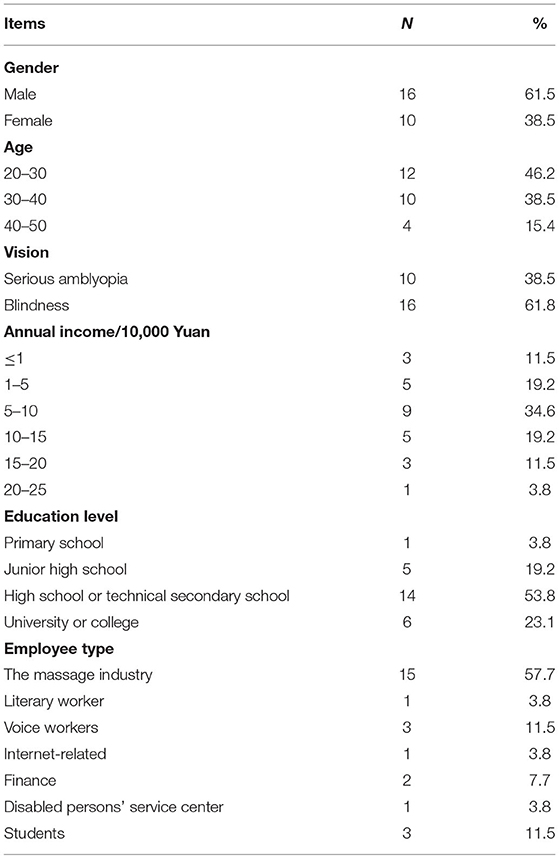
Table 1 . Profile of interview participants ( N = 26).
Data Analysis
Analysis involved identifying and coding any emergent themes using a structured Grounded Theory approach ( Luborsky, 1994 ). With the help of the NVivo software (version 12, QSR), the following types of coding were conducted: open coding, axial coding and selective coding ( Strauss and Corbin, 1998 ), to explore and analyze the main themes in the data, and to construct a theoretical framework of the factors affecting leisure tourism behaviors of visually impaired individuals.
In the stage of open coding, the interview transcripts were categorized into common themes. This involved reading and sorting the transcripts to establish free nodes of theme-related original statements, which resulted in 274 original categories. There were some semantic crossovers, and semantic repetitions. To reduce the crossovers and repetitions, the 274 original categories were refined undergoing a process of repeated comparison and integration. This process resulted in 75 categories with independent connotations.
In the axial coding stage, the categories were analyzed for their thematic ideas and relationships to one another, which resulted in 21 categories. These categories included: tourist information, management support, service level, tourism products, tourism preference, tourism motivation, personality, emotional state, knowledge background, economic status, physical condition, spare time, perceived stress, social environment, policy support, visually impaired tourism organizations, volunteer services, family support, traffic and transport accessibility, buildings and facilities accessibility, information accessibility.
Finally, the selective coding process involved further clarifying and refining of any relationships and organizing the identified categories around a central explanatory concept. This resulted in six core themes being identified, including tourism products and services, personal psychological factors, personal socio-economic factors, social support, community support, and barrier-free environments.
Finally, to ensure the quality of the coding process and interpretation, the coded results were checked by both the research members and the interviewees ( Cho and Trent, 2006 ). Based on the above analysis, the interrelationships between categories have been clearly defined. The six main themes and their corresponding categories were used as the foundation to construct a theoretical framework which outlines the factors influencing leisure tourism behaviors for visually impaired persons, as shown in Figure 1 .
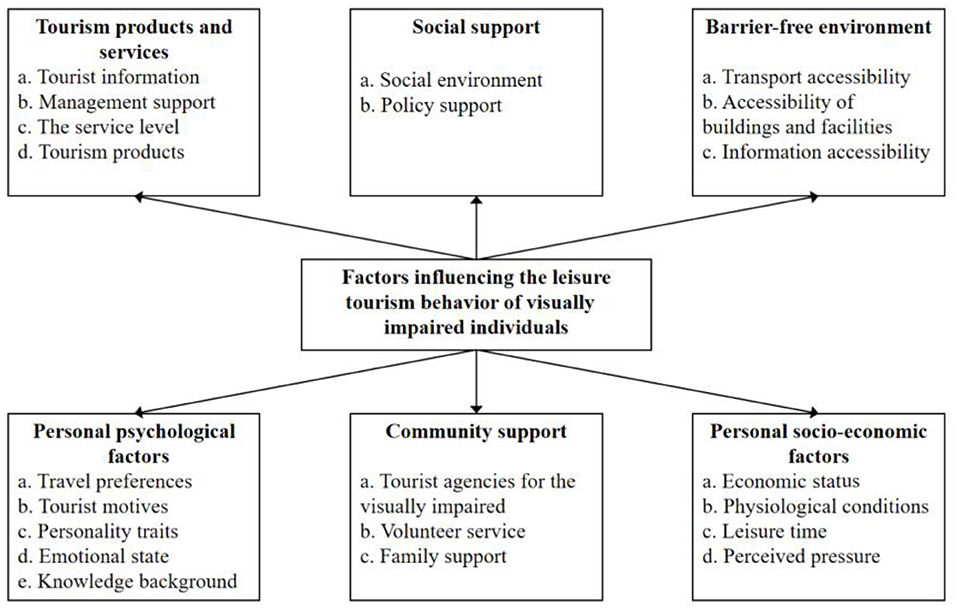
Figure 1 . Factors influencing the leisure tourism behavior of visually impaired individuals.
As a result of the content analysis of the transcribed text, the travel process of the visually impaired can be divided into three parts: travel desires, travel decision-making, and travel behavior resulting from the different psychological states of tourists at different travel stages. By reviewing the descriptions of the interview participants, it can be ascertained that most of the influencing factors identified in this study on the travel behavior of visually impaired tourists are associated with emotions and travel intentions. The six identified factors including personal psychological states, personal socio-economic situations, social support, community support, tourism products and services, and barrier-free environments can be classified into antecedent factors, facilitating factors, requirement and expectations factors (as shown in Figure 2 ).
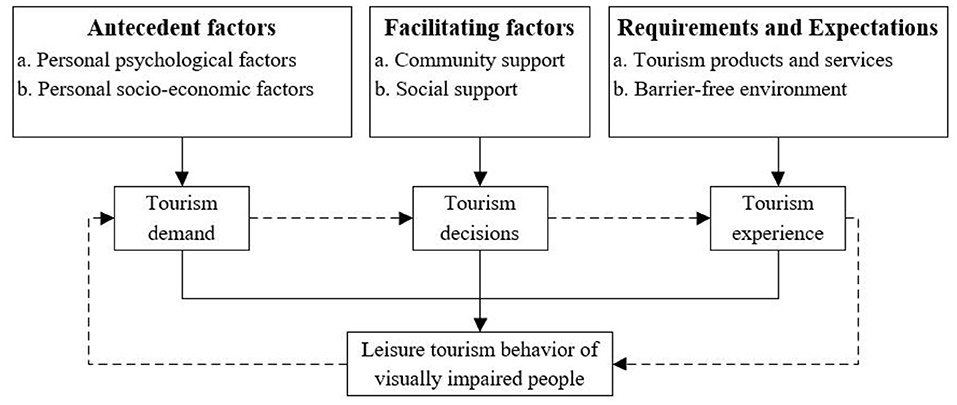
Figure 2 . Path model showing the factors influencing visually impaired individuals during the various tourism stages.
Antecedent Factors
The antecedent factors are comprised of subjective factors and objective factors. These consider personal psychological factors such as travel motives and preferences as well as personal socio-economic factors including employment and disposable income. The visually impaired are motivated by subjective factors (i.e., travel preference, personality traits, etc.), and have a desire to travel. However, participation in tourism experiences is warranted only when certain objective conditions are in place (i.e., appropriate socio-economic factors).
Table 1 showed that the massage industry is the main employment of the visually impaired respondents in this study: “My job is providing massage services to guests in a small room day by day. When I finish working, I always stay at home. My life is so boring” (R15). This quote exemplifies that research participants longed to escape from their everyday lives through tourism experiences which contributes to their social and psychological well-being. Tourism has become an effective way for the visually impaired to satisfy their desires. Moreover, due to the limited choice of leisure options available for the visually impaired, tourism has become a preferred way to spend their spare time: “For me, traveling is a good way to spend my leisure time. I haven't found a better way to spend my leisure time than traveling, and for me, I have very few options for leisure” (R7). Visually impaired research participants who frequently participate in travel experiences, recognize tourism experiences as an opportunity to improve their personal abilities which creates further desire for tourism: “tourism is actually a process to train comprehensive ability, such as problem-solving ability, psychological adjustment ability. During the trip, there are always unexpected incidents that happen, which can provide me with these opportunities to grow, and to improve myself” (R5).
The interaction between subjective factors and objective factors stimulates tourism demand ( Torgeir et al., 2018 ), i.e., having appropriate leisure time and disposable personal income enables the vision impaired to travel. One respondent said “If time and money allow it, I will travel as much as possible, but money and time are necessary (R12).” General health and physical fitness also affect whether visually impaired respondents are able to participate in leisure tourism: “The reasons that hinder me from going out are that I am tired and I have nobody who I could travel with. But, as long as I have the energy to travel and someone can take me, I will go out” (R19).
Facilitating Factors
Antecedent factors are involved in most peoples' travel considerations. However, for the visually impaired, there are further considerations which are based on facilitating factors including the community and social support. Community support mainly involves the notion of travel companions who help the visually impaired to navigate their travels. For example, R4 mentioned: “My completely blind friend also wants to travel, but his family does not want to accompany him, so it is difficult for him to travel. My family is quite supportive and sometimes urges me to travel with me” (R4). Volunteer services during the whole trip are also an important facilitating factor in the travel decision of visually impaired people, as they rely on them for necessary assistance during their travel, particularly for individuals with total blindness. If their family and friends cannot accompany them on their travels, and no volunteers are available to help during the trip, then they will not be able to realize their desire to travel. One respondent and his wife are both blind and recognize the importance of the volunteers: “If my wife and I are the only two people to travel, it is definitely not possible. It is very important to have volunteers to help us solve some troubles during the trip.” If there were more professional tour organizers that provided travel services for the visually impaired, then that would be a preferred choice for many visually impaired travelers. For example, R3 mentioned “I only got to know the ZS tourism team by chance, but I would try and join in every travel route they offer as long as I had time. Because their team is very helpful with vision impaired people, and all their itineraries are determined according to the needs of the visually impaired, and there are volunteers to accompany us throughout the journey, so it is very convenient to travel with them.” Social support mainly refers to aspects such as policy support and attitudes toward visually impaired individuals by the public. R10 mentioned: “Disability passes are helpful in relieving some of the financial pressure, and it's even better if we can get discounts on things like sightseeing buses.” A supportive social environment was important for R4: “Actually I don't have any particular idea where to go, but no matter where, as long as the people there have a good attitude I'm willing to have a try.”
Requirements and Expectations Influencing the Tourism Behaviors
Once the vision impaired tourists arrive at the tourism destination, the availability of appropriate tourism products and services, and barrier-free environments become the key elements to affect their behavior and their psychological and emotional well-being. One of the main considerations for the visually impaired with any tourism product and service is the safety of products, as well as the professionalism of any services offered. The participation in tourism products is a core aspect for vision impaired tourists, and the degree of participation directly affects their behavior and satisfaction. The higher the degree of participation, the better the satisfaction ( Chen et al., 2020 ). Hearing, touch and taste are the main ways for the visually impaired to participate in tourism activities ( Clawson and Knetcsh, 1969 ). The majority of respondents (81%) mentioned the importance of taste as part of their travel experience. Taste was particularly important for this respondent: “No matter how interesting an experience is, what I can feel is limited. Even if I touch those things, I can't feel anything. I think it's better to feel through tasting with your mouth. That's really participating” (R10). Another respondent emphasized the influence of hearing and touch on the mood after a tour: “I personally think that hearing and touch have even more important effects on the tourist experience, for example, listening to the interpretation and touching exhibits, cannot only contribute to the physical experience but also bring spiritual enjoyment. If I travel to a place where there is nothing to touch, I feel a little bit of regret” (R12). Personal safety is another important aspect during their stay in the destination, as R26 mentioned: “I think safety comes first. Climbing a mountain is risky for me. If there is no guardrail and steps are not skid proof, I certainly dare not try it.” In addition, due to the lack of awareness about the specific needs of visually impaired tourists, their participation in tourism activities is often limited, which is typically a negative emotional point in the process of the visually impaired tourism. For example R13 mentioned: “When we travel, many scenic spots and recreational facilities do not allow vision impaired people to enter, which is the most frequent conflict resulting in negative emotions. Some places won't let us in, no matter how much we negotiate, even if we come in the company of others. If vision impaired people are not allowed in, why not post a notice online in advance? We traveled a long way to get to this scenic spot, and when we arrived, we were told we are not allowed in, which made us very depressed” (R13).
For the visually impaired, accessibility is an important expectation factor. The tourism behavior of the visually impaired is often seriously restricted by the environment ( Kim and Seo, 2020 ), however the needs of the visually impaired for a barrier-free environment at the destination are frequently not met. In designing barrier-free environments, facility accessibility refers to the appropriate design of blind crossing tracks, barrier-free elevators, and barrier-free traffic lights. In this regards, R16 said: “I have been to many places where the accessibility is not good, and it is common for me to have some bumps. My aunt told me that they have good accessibility in Hong Kong, for example, there will be voice prompts at the traffic lights. I am looking forward to traveling there as soon as possible.” Another accessibility consideration at destination level is about creating awareness in the community of the special needs of visually impaired people and their tourism behavior. R14 pointed out: “Society doesn't understand us very well. Sometimes the scenic spots are crowded, and when we walk, we will bump into others, and they will be unhappy. Sometimes we need to ask for directions, and some people can be cold.”
Discussion and Conclusions
This research contributes to the development of tourism theory focused on visually impaired individuals by identifying the factors influencing their travel behavior. The study also contributes to tourism practice because it supports the viewpoint that the vision impaired are an emerging tourism market segment which is important and has immense development potential based on empirical research. Furthermore, the findings may help tourism-related companies to better understand the travel needs of visually impaired groups as well as the factors influencing their travel behavior. There are practical implications for tourism managers in programming and optimizing tourism products and services that better serve visually impaired tourists, and further improve the social well-being of visually impaired groups. In a broader view, this may also promote a more harmonious society, due to an increased awareness of the visually impaired and their specific needs when traveling.
Apart from practical implications, the study also makes a theoretical contribution by proposing a new theoretical framework which outlines the major factors influencing the leisure tourism behavior of visually impaired individuals. It not only provides a new theoretical model focusing on the leisure tourism behavior of visually impaired travelers, but also offers a theoretical basis for future empirical research studies and scale development of factors influencing leisure tourism for the visually impaired. Furthermore, this study proposed a specific definition of leisure tourism for visually impaired individuals.
Specifically, the six dimensions of tourism products and services, individual psychological factors, social support, organizational support, individual socio-economic states and barrier-free environments and the 21 sub-categories summarized from this research are an independent system that has similarities and differences with the influencing factor system of the tourism behavior of sighted people. Five of the six identified factors outlined in Figure 1 will also influence the leisure tourism behavior of sighted tourists except for the need of a barrier-free environment and its accessibility dimensions. However, a closer look at the specific factors and their various concepts reveals significant differences between visually impaired travelers and sighted travelers. Compared with sighted travelers, the factor most likely to affect the leisure tourism behavior of the visually impaired is their reliance on other senses such as hearing, touch, taste and smell. To create a quality leisure tourism experience for the visually impaired, such experiences should combine landscape explanations, tactile design elements, and physical participation, while also making full use of imagination to produce vivid pictures and feelings in their minds and hearts ( Liu et al., 2018 ). We learnt from the interviews that many visually impaired people are not limited by their visual impairment. When they travel, they have family members or volunteers as travel companions to provide them with detailed landscape explanations or meet their desire to touch objects by way of physical simulation. However, the interviews also highlighted that many visually impaired tourists are unable to meet their needs for landscape explanation and touch at various attractions or destinations. Tour guides in scenic spots mainly serve sighted tourists. When visitors to an attraction happen to be visually impaired, few tour guides adjust their explanations according to the specific needs of visually impaired individuals. Moreover, China's various attractions and scenic spots do not provide special facilities for visually impaired visitors. Even if a visually impaired person buys a ticket and brings an accompanying person with them, they will often be denied access to some tourist activities, such as ships, cable cars, glass walkways, rafting, and scuba diving, because the tourism operators are not willing to take any risks.
There are also differences in the motivational factors between visually impaired and sighted tourists. While seeking a pleasant feeling is a basic motivation for visually impaired tourists, they also seek to fulfill higher-level motivations such as perfecting one's own character and improving one's own ability, as a way to reduce the pressures on their family. Another important motivational aspect was being able to get away from their usual environment through tourism and to increase contact with other people. Increased contact with other people from society can be helpful in breaking down social stereotypes associated with visually impaired individuals and to promote their integration and the enhanced development of products and services targeting them.
Physical obstacles linked to visual impairment are often perceived more serious than psychological obstacles. Therefore, travel companions/escorts, and tour organizers focusing on the visually impaired, and accessibility issues are contributing factors in making traveling a more pleasant experience for the visually impaired. Finding your way, crossing the street, taking an elevator, lodging, dining/eating, taking public transportation, experiencing the sights - all of these actions require external assistance. There is a reliance on volunteers, family and friends and other travel companions to provide guidance for the visually impaired during their leisure tourism experiences. For example, it is difficult to tell the location of dishes when eating or the room furnishings when staying in a hotel. When family members and friends are unable to accompany the visually impaired travelers, tour organizers can provide professional tourism products and travel services to them. When people who are not completely blind travel by themselves, their requirements should also be considered, particularly in relations to their safety and convenience through an accessible environment.
The study reports the following limitations. All interviewees who participated had high levels of travel experience. The sample may not be representative of vision impaired people who have no prior travel experience. The reasons as to why some vision impaired individuals choose not to participate in tourism may provide further important influencing factors of their leisure tourism behavior. Furthermore, most of the interviewees were positive and optimistic, which may represent a particular type of personality among the sample of vision impaired people who participated in this study. Hence, future studies may investigate visually impaired individuals who do not have any prior travel experience and who do not participate in leisure tourism activities, as a helpful way to discover the barriers which prevent them from traveling. Furthermore, the COVID-19 pandemic has had unprecedented impacts on the global tourism industry. Several countries have implemented major measures for the effective prevention and control of further transmission, and domestic tourism is slowly starting to recover. However, it is unclear how the COVID-19 pandemic affected visually impaired individuals, which will make a valuable contribution in future studies.
Data Availability Statement
The original contributions presented in the study are included in the article/supplementary material, further inquiries can be directed to the corresponding author/s.
Ethics Statement
The studies involving human participants were reviewed and approved by Zhejiang Gongshang University. The ethics committee waived the requirement of written informed consent for participation.
Author Contributions
GQ: conceptualization, methodology, validation, formal analysis, investigation, resources, data curation, and writing-original draft preparation. JZ: writing–review and editing, methodology, and validation. AP: writing–review and editing, supervision, and project administration. NC: conceptualization and writing–review and editing. All authors contributed to the article and approved the submitted version.
This research was supported by a grant from Zhejiang Social Science Foundation (No. 20NDJC097YB), Women/gender studies project (202010).
Conflict of Interest
The authors declare that the research was conducted in the absence of any commercial or financial relationships that could be construed as a potential conflict of interest.
Bourne, R. R., Flaxman, S. R., Braithwaite, T., Cicinelli, M. V., Das, A., Jonas, J. B., et al. (2017). Magnitude, temporal trends, and projections of the global prevalence of blindness and distance and near vision impairment: a systematic review and meta-analysis. Lancet Glob. Health 5, 888–897. doi: 10.1016/S2214-109X(17)30293-0
PubMed Abstract | CrossRef Full Text | Google Scholar
Chang, S., and Gibson, H. J. (2015). The relationships between four concepts (involvement, commitment, loyalty, and habit) and consistency in behaviour across leisure and tourism. Tour. Manage. Perspect. 13, 41–50. doi: 10.1016/j.tmp.2014.11.003
CrossRef Full Text | Google Scholar
Chang, Y.-C., and Chen, C.-F. (2012). Meeting the needs of disabled air passengers: factors that facilitate help from airlines and airports. Tour. Manage. 33, 529–536. doi: 10.1016/j.tourman.2011.06.002
Chen, N., Wang, Y.-H., Li, J.-Q., Wei, Y.-Q., and Yuan, Q. (2020). Examining structural relationships among night tourism experience, lovemarks, brand satisfaction, and brand loyalty on “cultural heritage night” in South Korea. Sustainability 12:6723. doi: 10.3390/su12176723
Cheng, S.-Y. (2006). Leisure time, tourism leisure and leisure tourism of Chinese residents. Tour. Tribune 12, 9–10.
PubMed Abstract | Google Scholar
China Disabled Persons' Federation (2007). Main Data Bulletin of the Second National Sample Survey on Disabled Persons in 2006 . Available online at: http://www.cdpf.org.cn/sjzx/cjrgk/200711/t20071121387540.shtml (accessed February 27, 2021).
ChinaIRN (2019). October 15, 2019 Marks the 36th International Blind Day, How Many People Are Blind in China? Available online at: https://www.chinairn.com/news/20191014/114613612.shtml
Cho, J., and Trent, A. (2006). Validity in qualitative research revisited. Qual. Res. 6, 319–340. doi: 10.1177/1468794106065006
Clawson, M., and Knetcsh, J. L. (1969). Alternative method of estimating future use. Econ. Outdoor Recreat. 21:36. doi: 10.2307/2552395
CrossRef Full Text
Cohen, S., Schwartz, J. E., Bromet, E. J., and Parkinson, D. K. (1991). Mental health, stress, and poor health behaviors in two community samples. Prev. Med. 20, 306–315. doi: 10.1016/0091-7435(91)90029-4
Crawford, D.-W., Jackson, E.-L., and Godbey, G. (1991). A hierarchical model of leisure constraints. Leisure Sci. 13, 309–320. doi: 10.1080/01490409109513147
Dai, Y.-D., Chen, K.-Y., Gong, X., Zhuang, W.-L., Li, A.-N., and Huan, T.-C. (2019). Developing Chinese tourist's leisure literacy scale from the perspective of Chinese culture. Tour. Manag. Perspect. 31, 109–122. doi: 10.1016/j.tmp.2019.03.012
Darcy, S. (2010). Inherent complexity: disability, accessible tourism and accommodation information preferences. Tour. Manag. 31, 816–826. doi: 10.1016/j.tourman.2009.08.010
Darcy, S., and Daruwalla, P.-S. (1999). The trouble with travel: people with disabilities and tourism. Soc. Alter. 18, 41–46.
Google Scholar
Datagoo (2020). There Are 17.3 Million Blind People in China, Why Do We Rarely See Them? Available online at: http://www.datagoo.com/post/305
Diener, E., Oishi, S., and Lucas, R. (2003). Personality, culture, and subjective well-being: emotional and cognitive evaluations of life. Ann. Rev. Psychol. 54, 403–425. doi: 10.1146/annurev.psych.54.101601.145056
Guo, L.-F. (2005). A review of leisure research in China. J. Bus. Econ. 161, 76–79. doi: 10.14134/j.cnki.cn33-1336/f.2005.03.014
Guo, L.-F. (2013). The study of leisure: the philosophy of life. J Zhejiang Gongshang Univ. 1, 88–95. doi: 10.14134/j.cnki.cn33-1337/c.2013.01.010
Hosany, S., Hunter-Jones, P., and Mccabe, S. (2020). Emotions in tourist experiences: advancing our conceptual, methodological and empirical understanding. J. Destination Mark. Manag. 16:100444. doi: 10.1016/j.jdmm.2020.100444
Jiang, J., Qin, M., and Ke, Y.-N. (2011). Leisure activities and subjective well-being. Tour. Tribune 74–78.
Kim, D. S., and Seo, Y. W. (2020). A study on the effects of package tourism motives and tourism constraints on attitude and satisfaction. J. Digit. Converg. 18, 473–484. doi: 10.14400/JDC.2020.18.5.473
Klaus, R., and Scherer (1993). Studying the emotion-antecedent appraisal process: an expert system approach. Cogn. Emot. 7, 3–4. doi: 10.1080/02699939308409192
Kong, W.-H., and Loi, K.-I. (2017). The barriers to holiday-taking for visually impaired tourists and their families. J. Hosp. Tour. Manag. 32, 99–107. doi: 10.1016/j.jhtm.2017.06.001
Liu, D.-Q. (2006). Talk about leisure and travel. Tour. Tribune 21, 12–19.
Liu, J., Gao, Y. M., and Yu, T. T. (2018). A brief analysis of the aesthetic significance of sensory compensation in the blind aesthetic experience. Fine Arts Literature 42, 8–10. doi: 10.16585/j.cnki.mswx.2018.05.006
Liu, S.-M. (2016). Big data to see the new fashion of tourism. China Travel News 11:003.
Liu, T., and Li, M. (2020). Leisure & travel as class signifier: distinction practices of China's new rich. Tour. Manag. Perspect. 33:100627. doi: 10.1016/j.tmp.2019.100627
Liu, W., Sparks, B., and Coghlan, A. (2016). Measuring customer experience in situ: the link between appraisals, emotions and overall assessments. Int. J. Hosp. Manag. 59, 42–49. doi: 10.1016/j.ijhm.2016.09.003
Luborsky, M. (1994). “The identification and analysis of themes and patterns,” in Qualitative Methods in Aging Research , eds J. F. Gubrium and A. Sankar (Sage), 189–210.
Ma, H.-D. (2003). Leisure in the history of human culture and ideology – from the perspective of history, culture and philosophy. Stud. Dialectics Nat. 1, 55–65. doi: 10.19484/j.cnki.1000-8934.2003.01.012
McLean, F. (2003). Service quality management in hospitality, tourism and leisure: J. Kandampully, C. Mok and B. Sparks (Eds.), The Haworth Press, Binghamton, NY, 2001. Tour. Manag. 24, 115–116. doi: 10.1016/S0261-5177(02)00038-9
Meza, L.-M., Terven, J.-R., and Raducanu, B. (2019). A social-aware assistant to support individuals with visual impairments during social interaction: a systematic requirements analysis. Int. J. Hum. Comput. Stud. 122, 50–60. doi: 10.1016/j.ijhcs.2018.08.007
Newman, D.B., Tay, L., and Diener, E. (2014). Leisure and subjective well-being: a model of psychological mechanisms as mediating factors. J. Happiness Stud. 15, 555–578. doi: 10.1007/s10902-013-9435-x
Prayag, G., Hosany, S., and Odeh, K. (2013). The role of tourists' emotional experiences and satisfaction in understanding behavioral intentions. J. Destination Mark. Manag. 2, 118–127. doi: 10.1016/j.jdmm.2013.05.001
Scott, N. (2020). Cognitive psychology and tourism –surfing the “cognitive wave”: a perspective article. Tour. Rev. 75, 49–51. doi: 10.1108/TR-06-2019-0217
Small, J., Darcy, S., and Packer, T. (2012). The embodied tourist experiences of people with vision impairment: management implications beyond the visual gaze. Tour. Manag. 33, 41–50. doi: 10.1016/j.tourman.2011.09.015
Stebbins, R.-A. (1996). Cultural tourism as serious leisure. Ann. Tour. Res. 23, 948–950. doi: 10.1016/0160-7383(96)00028-X
Strauss, A.-L., and Corbin, J.-M. (1998). Basics of Qualitative Research: Grounded Theory, Procedures and Techniques , 3rd Edn. London: Sage, 55–181.
Torgeir, A., Jasmina, I., and Paul, H. (2018). Consumer socialization agency in tourism decisions. J. Vacation Mark. 24, 1–13. doi: 10.1177/1356766717700190
Werner, G., and Andreas, K. (2006). Key factors for successful leisure and tourism public transport provision. J. Transport Geogr. 15, 127–135. doi: 10.1016/j.jtrangeo.2006.12.008
Xie, Y.-J. (2017). Take care of “Mupi's home” and reshape the new concept of sustainable development of rural tourism. Tour. Tribune 32, 8–9.
Zhang, R.-G. (2019). Social perception is the biggest obstacle for blind people to travel. March Wind 28–29. doi: 10.3969/j.issn.1003-109X.2019.06.012
Zhao, L., Zhen, F., and Long, S.-J. (2013). The impact of information technology on leisure activities and travel of urban residents in Nanjing. Hum. Geogr. 28, 56–61. doi: 10.13959/j.issn.1003-2398.2013.01.012
Keywords: leisure tourism, tourism behavior, vision impaired tourists, China, empirical study
Citation: Qiao G, Zhang J, Pabel A and Chen N (2021) Understanding the Factors Influencing the Leisure Tourism Behavior of Visually Impaired Travelers: An Empirical Study in China. Front. Psychol. 12:684285. doi: 10.3389/fpsyg.2021.684285
Received: 23 March 2021; Accepted: 18 May 2021; Published: 21 June 2021.
Reviewed by:
Copyright © 2021 Qiao, Zhang, Pabel and Chen. This is an open-access article distributed under the terms of the Creative Commons Attribution License (CC BY) . The use, distribution or reproduction in other forums is permitted, provided the original author(s) and the copyright owner(s) are credited and that the original publication in this journal is cited, in accordance with accepted academic practice. No use, distribution or reproduction is permitted which does not comply with these terms.
*Correspondence: Nan Chen, 10020053@vip.henu.edu.cn
Disclaimer: All claims expressed in this article are solely those of the authors and do not necessarily represent those of their affiliated organizations, or those of the publisher, the editors and the reviewers. Any product that may be evaluated in this article or claim that may be made by its manufacturer is not guaranteed or endorsed by the publisher.

The 40 Best Leisure Destinations To Visit In 2020
If you’re looking for the best destination to visit in 2020, Aegean Luxury Yachting’s charter brokers have compiled an exclusive list of the top leisure destinations for the CEOWORLD magazine based on sales and client aspirations. Remarkably, there are only one American destinations on the list – Portland, Maine, US.
Paris has been named the best leisure destination in the world to visit 10 2020, according to the CEOWORLD magazine’s list. Palermo in Italy ranked number 2 on the list, followed by Portugal’s Porto (No. 3), Dubrovnik in Croatia (No. 4), and Morocco’s Marrakech (No. 5).
Magazine placed Tokyo in sixth on the list ahead of Melbourne, and Tel Aviv. Machu Picchu/Cusco and Portland (Maine) round out the list at nine and ten, respectively.
With less than three months to go before the decade is over, it’s time to start planning big things for 2020. CEOWORLD magazine, the leading business & economy publication, has listed the top destinations to travel to in 2020. Take a look and book your tickets already.
Have you read?
# Best CEOs In The World 2019: Most Influential Chief Executives . # World’s Best Countries To Invest In Or Do Business For 2019 . # Countries With The Best Quality of Life, 2019 . # Most Startup Friendly Countries In The World .
This report/news/ranking/statistics has been prepared only for general guidance on matters of interest and does not constitute professional advice. You should not act upon the information contained in this publication without obtaining specific professional advice. No representation or warranty (express or implied) is given as to the accuracy or completeness of the information contained in this publication, and, to the extent permitted by law, CEOWORLD magazine does not accept or assume any liability, responsibility or duty of care for any consequences of you or anyone else acting, or refraining to act, in reliance on the information contained in this publication or for any decision based on it.
Email Address*

Anna Papadopoulos

A Balancing Act in Leveraging AI for Business Growth

Best Books for Examining Modern Motherhood

How to recognize the signs of stress in yourself, your colleagues and your team

My Smartest Mistake
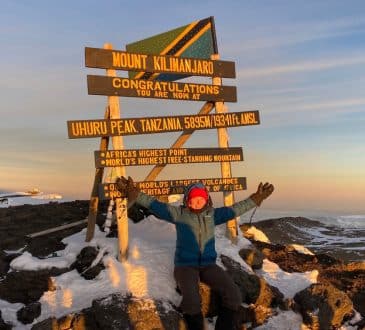
Discovering Africa’s Majestic Heights: The Continent’s Highest Peaks
12 innovative sustainable tourism attractions you can visit around the world

Apr 4, 2022 • 5 min read
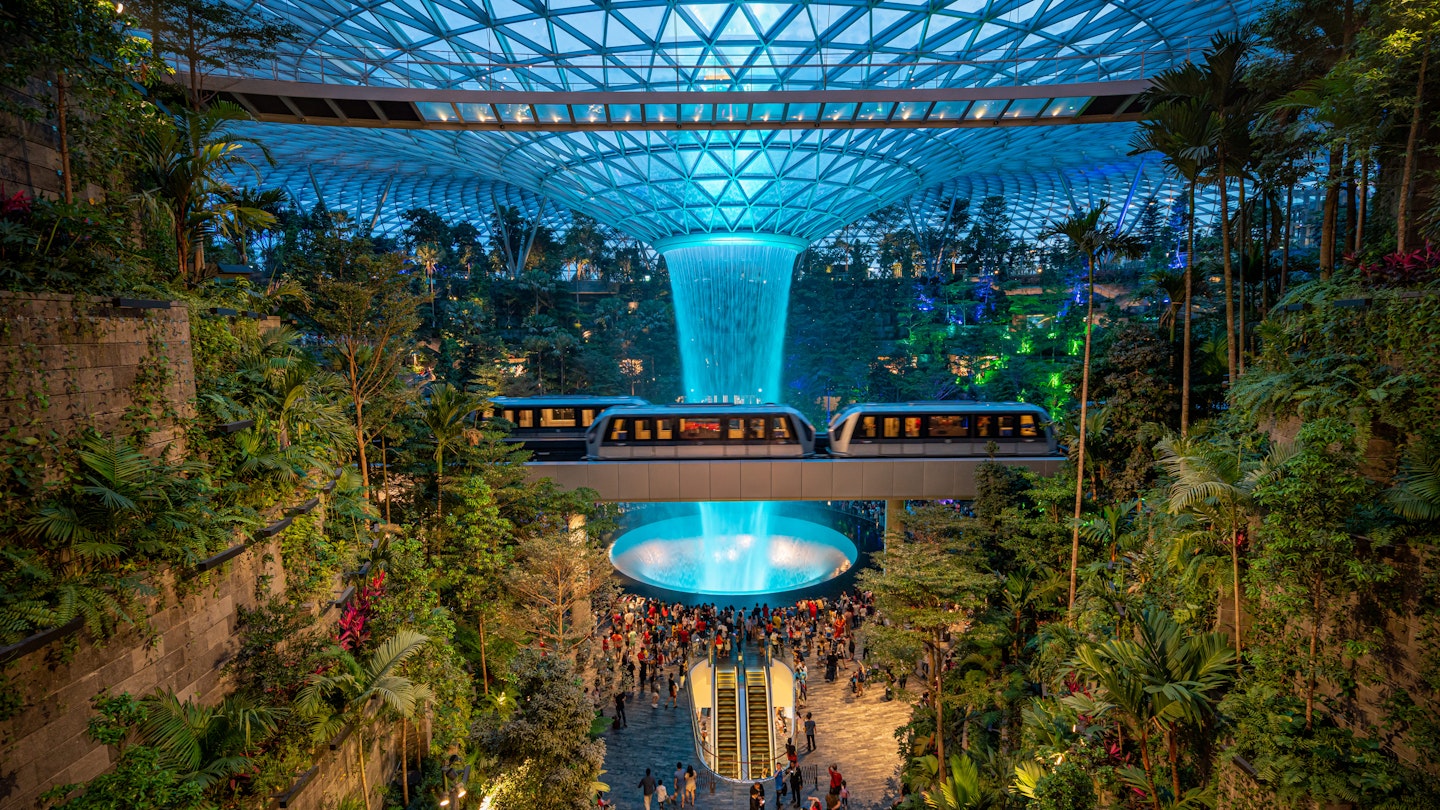
Check out these innovative sustainable attractions worldwide, like the Jewel at Changi Airport © Travel man / Shutterstock
More and more travelers are looking beyond the most affordable and comfortable way to travel and are putting more thought into how their choices might affect the destination they want to visit.
As travel priorities shift, on top of having a great time travelers increasingly want to do the right thing by the places they visit. In this extract from Sustainable Escapes , Lonely Planet looks at how 12 worldwide tourist attractions have approached sustainability in an innovative way.
Jewel at Changi, Singapore, is an indoor oasis
First came Gardens by the Bay with its solar-harvesting Supertrees, and in 2019 Singapore upped its urban garden game with an airport terminal you’ll never want to leave. Harnessing cutting-edge sustainable technology, Jewel at Changi is a green oasis, complete with a hedge maze, a canopy bridge, and the world’s tallest indoor waterfall.
The Points Guy: 8 sustainable travel tips from expert green travelers
New York's Climate Museum aims to inspire action on the climate crisis
New York City ’s Climate Museum has won a legion of fans for over 200 innovative public exhibitions and events it has hosted around the city since 2017. Examples include youth spoken-word programs dedicated to themes of climate change; Climate Signals , a city-wide public art installation by US artist Justin Brice Guariglia, which flashed climate change alerts in five languages; and Beyond Lies , a public art exhibition by British illustrator and journalist Mona Chalabi, that examines climate disinformation from the fossil fuel industry.
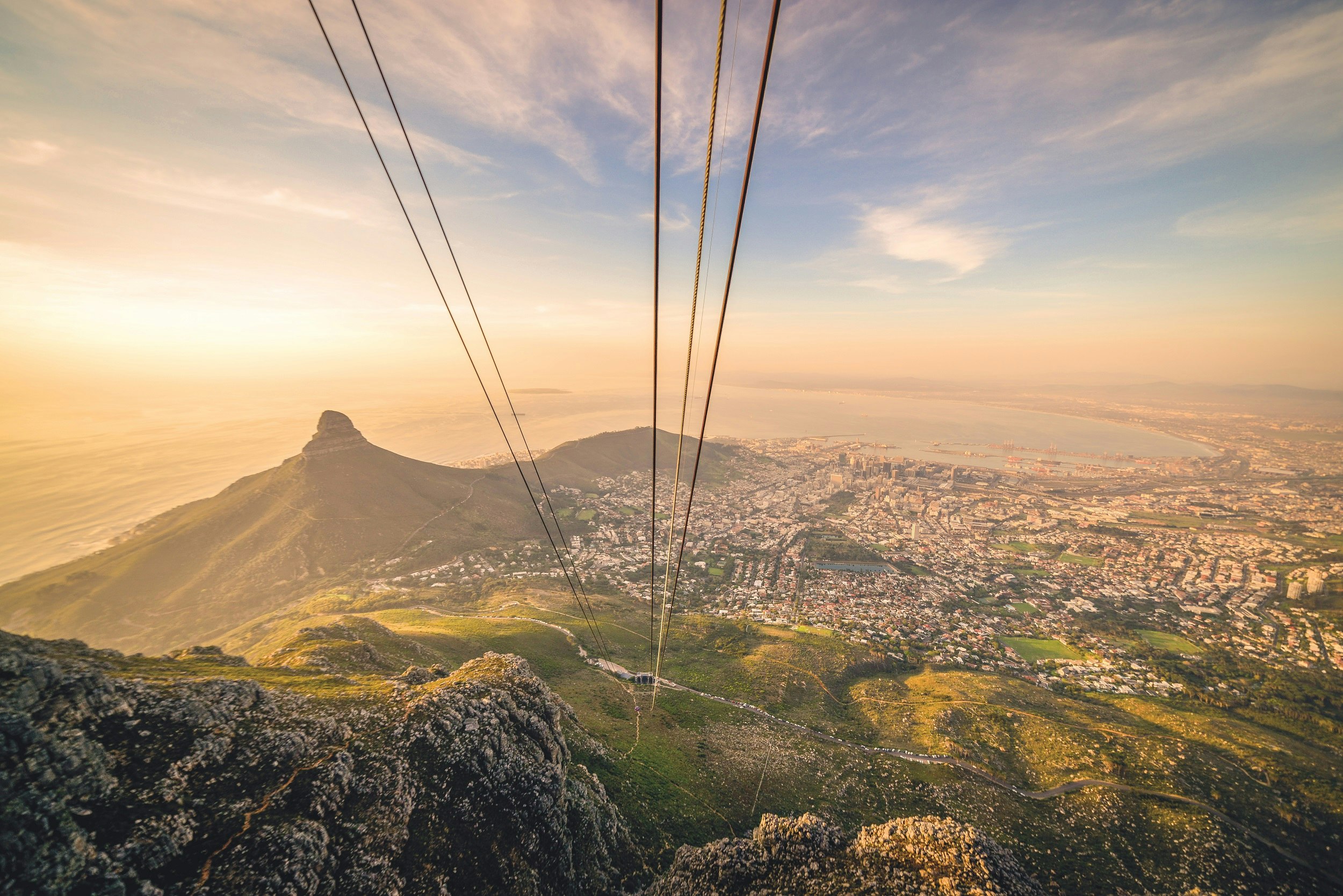
Cape Town's Table Mountain cableway has been carbon-neutral since 2016
Hiking Table Mountain is a quintessential Cape Town experience. But those who prefer to ride the cable car can still feel good about it. The cableway has been carbon-neutral since 2016, and maintains one of the most cohesive responsible tourism policies around, with careful water management and waste reduction practices in place.
Copenhill, Copenhagen's ski slope, is on top of a power plant
Urban ski slopes typically take the form of emissions-emitting indoor centers. But not Copenhill . Opened in 2019, this artificial ski slope sits atop Amager Bakke, a waste-to-power plant central to Copenhagen ’s goal of becoming the world’s first carbon-neutral city . The complex also has a 280ft (85m) climbing wall (the world’s highest) and, like all good ski resorts, an après-ski bar.

Byron Bay, Australia, has the world's first solar-powered train
Connecting the center of surf town Byron Bay to a vibrant arts estate, the world’s first solar-powered train made its maiden journey on a scenic 1.9 mile (3km) stretch of disused rail line in 2017. In lieu of ticket machines, fares are collected by a conductor on the beautifully refurbished heritage train.
Sustainability is central at the Azurmendi restaurant near Bilbao, Spain
Proving it’s haute to be sustainable, Azurmendi , a three-Michelin-star restaurant near Bilbao , has twice won the sustainable restaurant award from World’s 50 Best Restaurants . The hilltop atrium building harnesses solar and geothermal energy, and guests can tour the on-site greenhouses and vegetable gardens that supply the inventive menus.
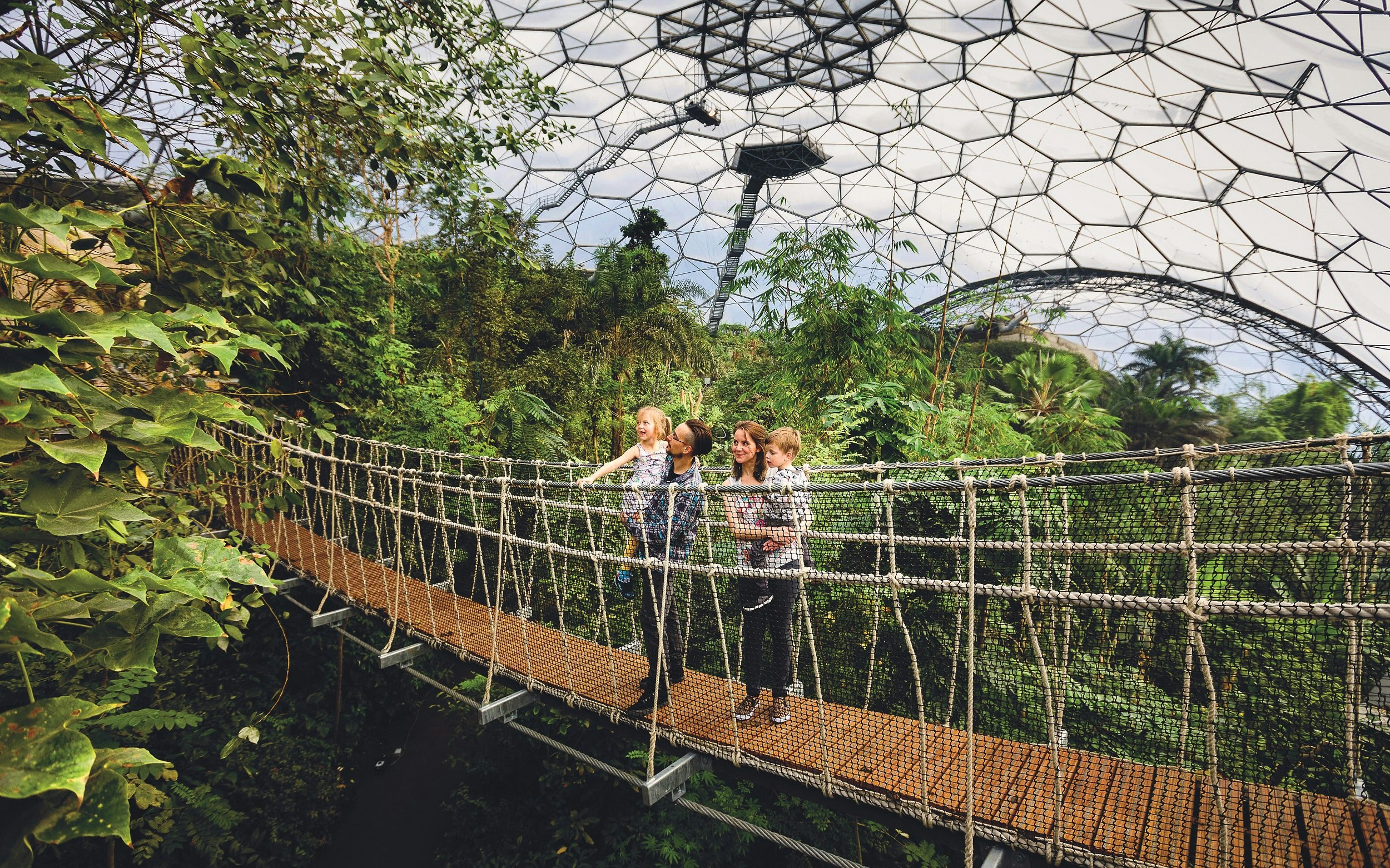
England's Eden Project recreates major climate systems
Occupying the site of an excavated china clay pit, the Eden Project education charity and visitor’s center in Cornwall , England , features huge biomes housing exhibitions, gardens, and the largest indoor rainforest in the world. It’s also home to the UK’s longest and fastest zip line, and a play tower for kids designed to introduce little ones to the concept of pollination.
Ocean Atlas in the Bahamas is an artwork and artificial reef
British sculptor and environmental activist Jason deCaires Taylor is famous for his surreal underwater sculptures that double as artificial reefs. Ocean Atlas – depicting a young girl supporting the ceiling of the water, much like the mythological Greek Titan shouldered the burden of the heavens – is a 60-plus-ton sculpture in Nassau , intended to symbolize the environmental burden we are asking future generations to carry.

A former nuclear reactor is now a theme park at Wunderland Kalkar, Germany
Following the 1986 Chernobyl disaster , German authorities decided not to put its new multi-billion-euro nuclear reactor near the Dutch border into operation. But it wasn’t a complete write-off. In the 1990s, the site was transformed into Wunderland Kalkar , an amusement park, complete with a swing ride inside the reactor’s cooling tower.
Vena Cava winery in Mexico is constructed from recycled materials
Vena Cava calls itself the hippest winery in Mexico , and when you lay eyes on this all-organic Baja winery – which was constructed from reclaimed fishing boats and other recycled materials – it’s difficult to disagree. Better yet, its cellar door is open for tastings every day of the week.
Minimize your impact when bird-watching from Tij Observatory, Netherlands
Taking its form from a tern’s egg, Tij Observatory is a stunning public birdwatching observatory in Scheelhoek Nature Reserve in Stellendam, the Netherlands , designed to rest as lightly on nature as possible. Built with sustainable wood and clad in thatched reeds, the observatory is reached via a tunnel built from recycled bulkheads to minimize disturbance to birds.
Jubileumsparken is a huge park project in Gothenburg , Sweden
The city of Lund might be getting a bicycle-powered museum in 2024, but there’s another great ecofriendly Swedish attraction you can visit now. Jubileumsparken is the ongoing redevelopment of a Gothenburg port area into an ultra-sustainable leisure hub to meet residents' requests for better access to the river and more green areas in the city. Two baths and a sauna were constructed, with ongoing work to introduce new children's play areas. Gothenburg has been ranked number one sustainable destination in the Global Destination Sustainability Index five times.
You might also like: 10 incredible places to learn to scuba dive 8 rewilding projects you can visit in Europe The world's eco-luxury resorts that are worth the hype
This article was first published Oct 5, 2020 and updated Apr 4, 2022.
Explore related stories

Sustainable Travel
Apr 29, 2024 • 11 min read
Step away from the gas pump and strap on your seat belt: these are the best US road trips for electric vehicles.

Jan 16, 2024 • 8 min read

Jan 2, 2024 • 11 min read

Nov 1, 2023 • 4 min read

Oct 19, 2023 • 8 min read
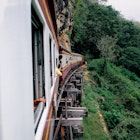
Oct 16, 2023 • 6 min read

Sep 12, 2023 • 9 min read
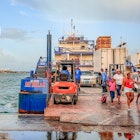
Jul 13, 2023 • 7 min read

Jun 30, 2023 • 6 min read

Jun 6, 2023 • 7 min read
The Rise of Experience Tourism and What It Means for the Leisure Industry
Table of Content
What is experiential purchasing, the rise of experience tourism, the take-away.
Your job in the travel and tourism industry is to help people travel to a far-off destination, enjoy that place for a few days, and then get back home, right? Not anymore. Now, you are providing a life-enhancing experience known as experience tourism – and the better the experience, the better you stand out from the horde of similar businesses. For your customers, it’s called experiential purchasing .
Experiential purchasing, whether a new kitchen floor or a trip to an exotic destination, is about a lot more than merely buying goods or services. Experiential purchases differ from material purchases in both objective and results. “[E]xperiential purchases serve the purpose of acquiring a life experience while material purchases serve the purpose of acquiring an object. Research has demonstrated that experiential purchases are associated with more happiness than material purchases .”
Really, the fact is nothing new, but the awareness and marketing of it in some areas are. This shift can be attributed to a wider affluence and the greater interconnectedness of our digital era. (But if you recall older ads for cars, clothes, and perfumes, you’ll see that some agencies have been on top of this phenomenon for a long time.) Just consider that kitchen floor.
When you have a new kitchen floor installed, you are not simply purchasing 253 brand-new, shiny floor tiles and their installation. You are, rather, interested in the benefits and the experience it provides. You have, for example, a beautiful new kitchen that makes you feel good every morning when you go in to fix breakfast, and you have a kitchen you are now proud to show off to family and friends. Basically, it makes your life better.
And it’s much the same with experience tourism.
In 2015, spending on leisure travel and tourism “ accounted for 76.6% of total global travel and tourism” and is expected to grow “more quickly than business travel spending over the next 10 years.” In addition, “the compound annual growth rate for the leisure segment is projected to grow at 4.2% compared to a 3.7% compound annual rate for the business travel segment.” Although factors such as greater disposable income and easier credit access have contributed to this growth, “the experiential consumer trend is a key factor.’’
For the majority of leisure travelers now, it’s all about the journey, not only the destination. Travelers want to connect with a place on an emotional level, and, as a result, it becomes much more than settling for a busy trip packed with a full itinerary in all the touristy hot spots. “For many, travel is seen as a way of understanding and appreciating alternative ways of life , learning new things about cultural and natural landscapes, and even as a means of self-discovery.”
Experience tourism is becoming the norm because consumers would rather spend their money on experiences and not on things. The emphasis now is on “ seeking out activities that appeal to niche personal interests ” rather than on “checking must-see sites and monuments off the to-do list.”
Booking and travel agencies today simply must offer more than a product. They must offer and promote life-enriching experiences –language lessons and cooking classes , riding the rapids, trekking to remote locations, swimming with sharks. The travel industry is evolving to meet and capitalize on this experiential purchasing trend, known as experience tourism. At Regiondo , a premier provider of booking software, we can provide the experiential travel booking options that are so vital to success today.
You might also like:
- The Rise of Bleisure Travel and How to Make the Most of it
- Travel Like a Local: How Tour Operators Can Make the Most of This Trend
- Health Tourism in the EU: Facts and Figures
- Virtual Reality in Travel: 9 Applications for Tours, Destinations & Activities
- 9 Tourism Trends That Will Shape the Travel Industry in 2020 and Beyond
- The Rise of Solo Travel and How to Make the Most of it
- When Numbers Matter: The Travel Statistics You Need to Know About
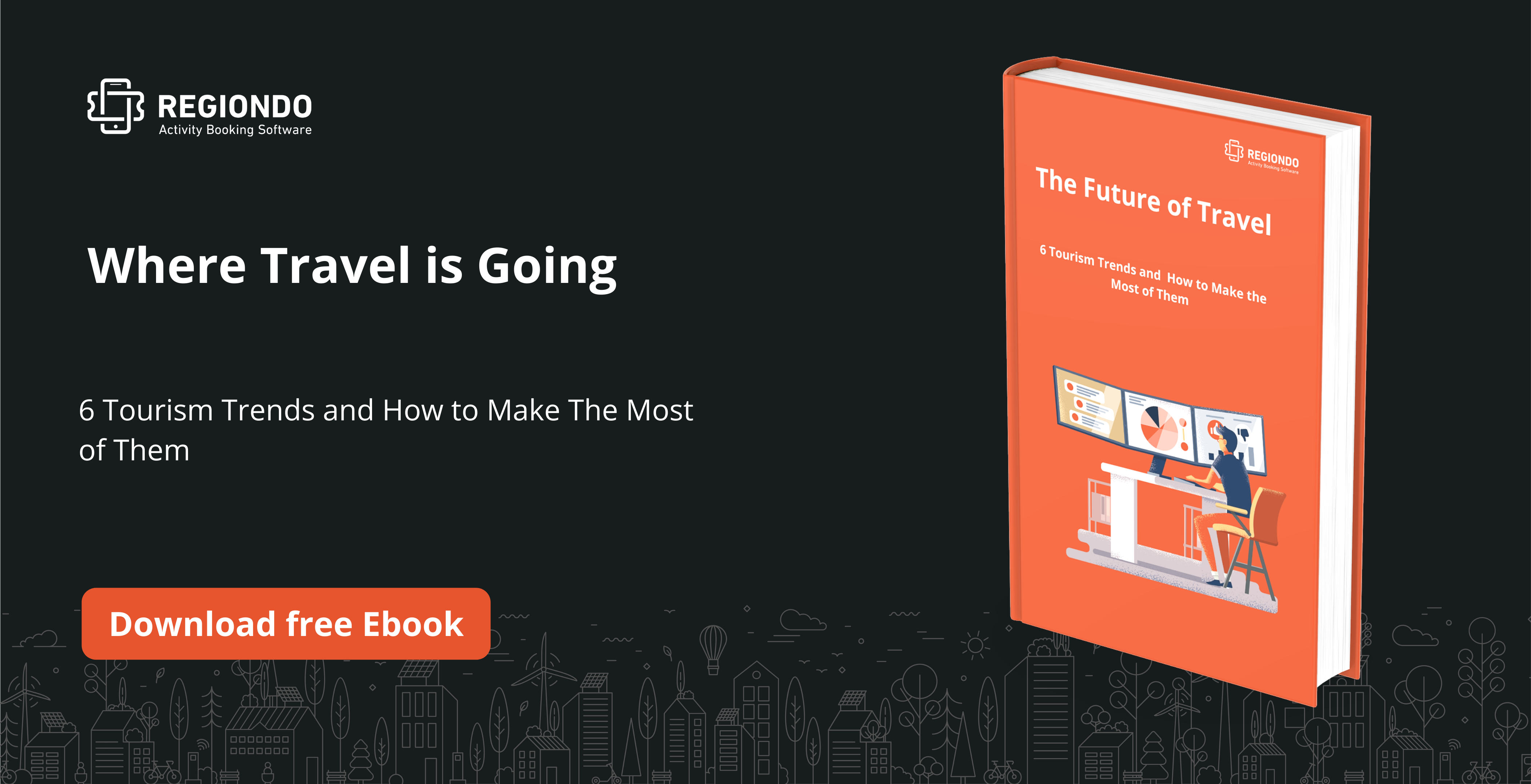
Related Articles
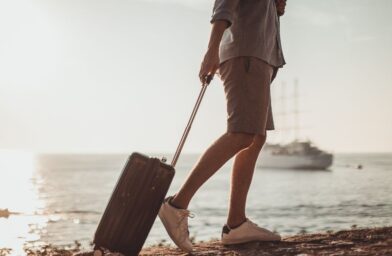
Stay updated with Regiondo by signing up for our Newsletter

Get a personalized demo or create your free account now
Take your business to the next level with Regiondo - it's free to get started and you don't need a credit card.
- Architecture and Design
- Asian and Pacific Studies
- Business and Economics
- Classical and Ancient Near Eastern Studies
- Computer Sciences
- Cultural Studies
- Engineering
- General Interest
- Geosciences
- Industrial Chemistry
- Islamic and Middle Eastern Studies
- Jewish Studies
- Library and Information Science, Book Studies
- Life Sciences
- Linguistics and Semiotics
- Literary Studies
- Materials Sciences
- Mathematics
- Social Sciences
- Sports and Recreation
- Theology and Religion
- Publish your article
- The role of authors
- Promoting your article
- Abstracting & indexing
- Publishing Ethics
- Why publish with De Gruyter
- How to publish with De Gruyter
- Our book series
- Our subject areas
- Your digital product at De Gruyter
- Contribute to our reference works
- Product information
- Tools & resources
- Product Information
- Promotional Materials
- Orders and Inquiries
- FAQ for Library Suppliers and Book Sellers
- Repository Policy
- Free access policy
- Open Access agreements
- Database portals
- For Authors
- Customer service
- People + Culture
- Journal Management
- How to join us
- Working at De Gruyter
- Mission & Vision
- De Gruyter Foundation
- De Gruyter Ebound
- Our Responsibility
- Partner publishers

Your purchase has been completed. Your documents are now available to view.
The Tourism and Leisure Experience
Consumer and managerial perspectives.
- Edited by: Michael Morgan , Peter Lugosi and J.R. Brent Ritchie
- X / Twitter
Please login or register with De Gruyter to order this product.
- Language: English
- Publisher: Channel View Publications
- Copyright year: 2010
- Audience: College/higher education;
- Main content: 264
- Keywords: tourist experience ; experience management ; consumer behaviour ; tourist behaviour ; consumer experience ; visitor experience ; experience economy
- Published: September 1, 2010
- ISBN: 9781845411503
- Appointments
- Corporate Connect
- Discover Your India
- Explore the world
- Food Voyager
- Hotels & Resorts
- Lifestyle, Weddings & Wellness
- Today's Traveller Awards
- Today's Traveller Interviews

- Today’s Traveller Awards
- Today’s Traveller Interviews
Exploring 2023: New trends top Leisure Travel
Halfway through 2023 and there is a continued resurgence of leisure travel, coupled with an array of new trends that reflect the desires and priorities of modern travellers..
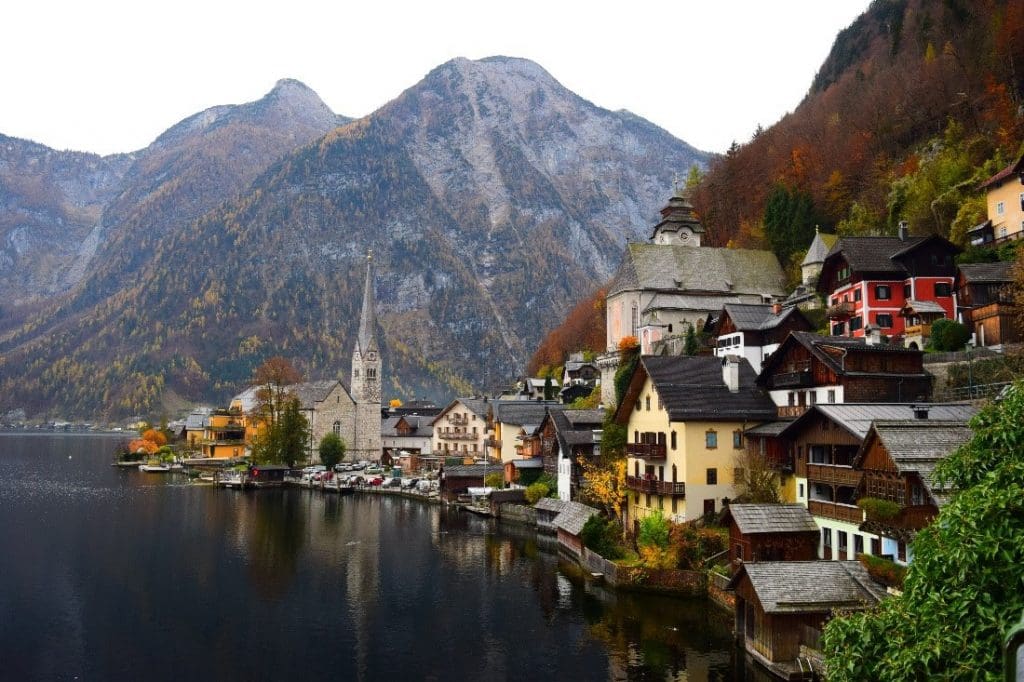
The world of leisure travel finds itself at an interesting crossroads. Gone are the days when travel was simply about the destination. Today, it’s an intricate mix of experiences, innovations, and changing traveller expectations.
From eco-conscious getaways to immersive digital escapades, the landscape of exploration is being redefined, with boundaries expanding further than ever before. Here are the top shifts in leisure travel, and discover how 2023 is rewriting the traveller’s tale, one transformative trend at a time.
Let’s delve into some of the hottest travel trends this year:
Sustainable tourism.
With an increasing global emphasis on environmental preservation, travellers are more conscious about their ecological footprint. Many are opting for eco-friendly accommodations, engaging in voluntourism, and selecting destinations committed to conservation efforts. This has led to a surge in eco-resorts, biodegradable travel products, and even travel itineraries that benefit local habitats.
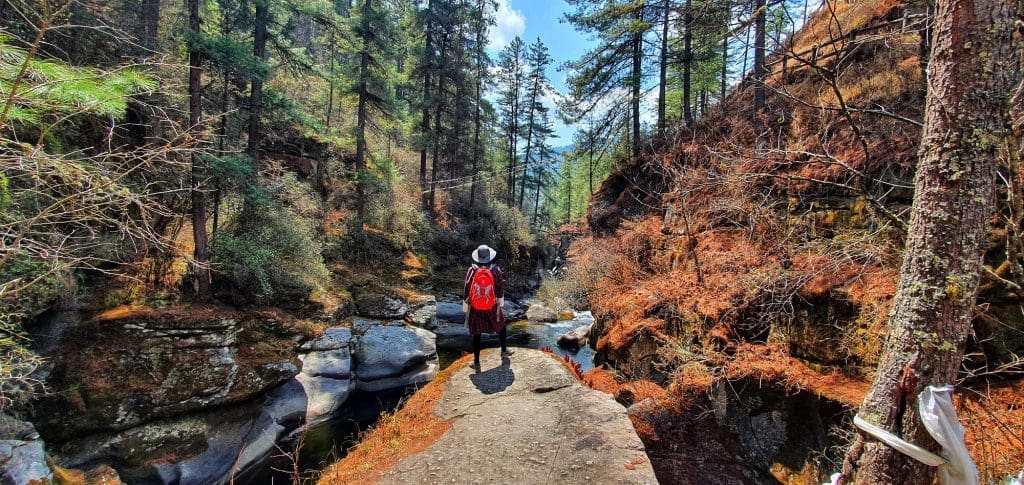
One can witness the commitment to sustainable tourism in practices like Costa Rica’s eco-lodges, which emphasize harmony with the surrounding rainforest while offering tourists a unique connection to nature. Similarly, in Bhutan, a country known for measuring Gross National Happiness over GDP, the government strictly controls tourism numbers to ensure minimal environmental and cultural impact.
The Galápagos Islands have taken a similar approach, imposing strict visitor limits to protect its unique biodiversity. Meanwhile, community-based tourism initiatives in places like Thailand empower local villages by allowing them to share their way of life with visitors, ensuring that the revenue generated benefits the community directly.
Across the globe, from the ancient pathways of the Camino de Santiago in Spain to the national parks of Kenya, sustainable tourism practices are not only preserving precious ecosystems and cultures but also providing richer, more authentic experiences for travellers.
Digital Detox Retreats
The ‘always connected’ lifestyle has spurred a new kind of vacation – digital detox retreats. These are travel experiences that encourage visitors to unplug from their digital devices, offering them a genuine break from the virtual world. Such retreats might be found in remote areas without Wi-Fi or even in dedicated resorts with no-screen policies.
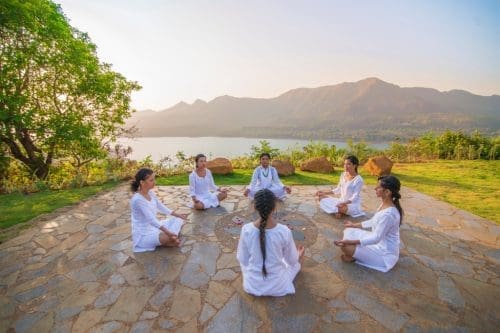
Nestled in the serene landscapes of California’s Big Sur, Esalen Institute offers retreats that encourage visitors to unplug, connect with nature, and delve deep into holistic wellness practices. Over in the UK, the idyllic countryside serves as the backdrop for retreats where attendees surrender their devices upon arrival, replacing screen time with nature walks and meditation.
Meanwhile, the remote forests of Scandinavia have become sanctuaries for those seeking a respite from the digital world, with lodges emphasizing mindfulness practices and deep connections with the natural world. Tucked away in the lush foothills of the Himalayas, Vana Retreat in Dehradun provides the ideal setting for a digital detox experience. Vana is founded on the philosophy of holistic wellness which goes beyond just physical healt h, encompassing mental, emotional, and spiritual well-being. The retreat offers Ayurvedic treatments, Tibetan healing, and traditional yoga sessions in their 21-acre estate.
These retreats spread across different continents, share a common purpose: to provide harried souls a chance to disconnect from the digital realm and reconnect with themselves and the world around them.
Hyper-local Experiences
Today’s travellers seek genuine, immersive experiences. Rather than just sightseeing, they want to dive deep into local cultures, learn indigenous crafts, enjoy traditional music, and taste authentic cuisines. Many tour operators now collaborate directly with local communities to offer these enriching experiences, ensuring that travel revenues also benefit local economies.
In the winding alleys of Marrakech, Morocco, travellers can participate in traditional cooking classes with local families, using ingredients sourced from neighbourhood markets to prepare age-old recipes.
Over in Tuscany, Italy, agriturismo stays offer tourists a taste of rustic farm life, complete with vineyard tours, homemade wine tastings, and meals prepared with fresh produce from the garden. Meanwhile, in Kyoto, Japan, local artisans open their workshops to share the intricate processes behind crafts like Kiyomizu pottery or Nishijin weaving.
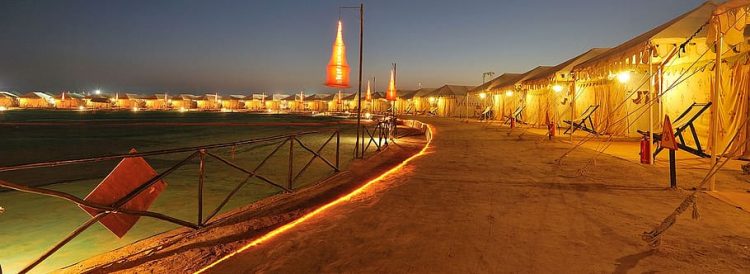
In the vast salt desert of the Kutch region in Gujarat in India lies the spectacle of the Rann Utsav. This cultural festival is a celebration of the region’s heritage, art, music and dances. Guests stay in traditional “Bhunga” huts, which are circular mud huts adorned with local crafts and enjoy folk performances under the moonlit sky, taste the authentic Kutchi cuisine, and immerse themselves in handicraft workshops led by local artisans. The highlight is undoubtedly the surreal white expanse of the salt desert, which glistens under the full moon, creating an awesome experience.
Such hyper-local experiences allow travellers to immerse themselves deeply into a destination’s culture and lifestyle, moving beyond typical sightseeing to form genuine connections with places and people.
Space Tourism
As futuristic as it sounds, 2023 has seen significant advancements in space tourism. Companies like Blue Origin and SpaceX have laid the groundwork, making suborbital flights more accessible to civilians. The allure of seeing Earth from space has made this an incredibly sought-after, albeit premium, travel experience.

Pioneers like SpaceX are making strides towards commercial spaceflights, with plans to ferry civilians on orbital jaunts around the Earth. Richard Branson’s Virgin Galactic, after years of anticipation, has already taken private passengers on suborbital voyages, offering them breathtaking views of Earth against the vastness of space.
Meanwhile, Blue Origin, founded by Jeff Bezos, has successfully launched missions giving travellers a few minutes of weightlessness in space before a parachute-assisted landing. Beyond just flights, visionary projects propose lunar resorts in the near future, where guests can experience the moon’s barren landscapes firsthand. As technology continues to advance and costs begin to decrease, the dream of space tourism is moving closer to becoming an attainable adventure for many.
Slow Travel
The rush of ticking off destinations from a bucket list is fading. In its place, ‘slow travel’ is emerging, where travellers spend more extended periods in one location, deeply exploring and understanding its essence. This approach is more sustainable and allows for a deeper connection to a destination.
Slow travel is a movement that urges travellers to slow down and immerse themselves deeply into their chosen destinations. In the picturesque countryside of France, many opt for canal boating, where days are spent meandering through gentle waterways, punctuated by leisurely stops at quaint villages.
In Spain, the Camino de Santiago offers a time-honoured pilgrimage route, where the journey itself, often undertaken on foot, becomes as significant as the destination. Italy’s Tuscany region, with its rolling hills and vineyards, invites travellers to stay in rustic villas, savouring local wines, and adopting the leisurely pace of rural life.
And on the Trans-Siberian Railway, the landscapes of Russia unfold gradually, allowing passengers the time to absorb and reflect upon the vast terrains and cultures they traverse.
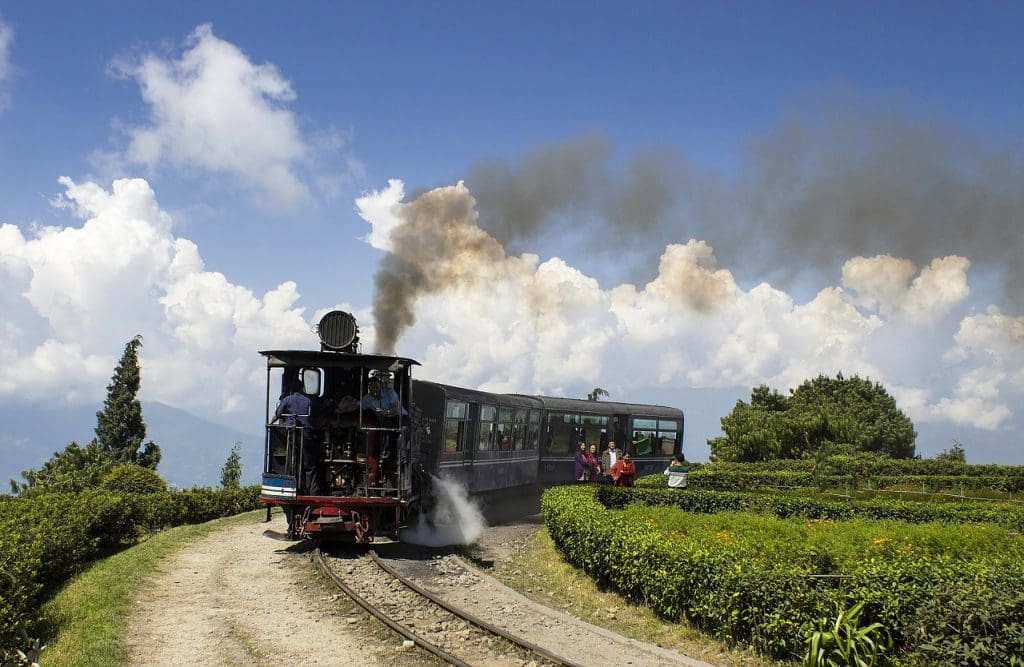
In India, chugging along the picturesque slopes of the Eastern Himalayas, the Toy Train of the Darjeeling Himalayan Railway offers a unique slow travel experience. Established in the 1880s, this UNESCO World Heritage site takes travellers on a nostalgic journey through vistas of terraced tea gardens, dense forests, and majestic peaks. With frequent stops at quaint stations, the journey allows one to immerse in the region’s colonial charm, interact with locals, and appreciate the slower rhythms of mountain life.
In each of these instances, slow travel champions the idea of connection over mere consumption, prioritizing experiences over checklists.
Flexible Workcations
With remote work becoming the norm for many, combining work and vacations – termed ‘workcations’ – is on the rise. Travellers are booking longer stays in destinations with robust Wi-Fi and serene environments, blending the line between leisure and work.
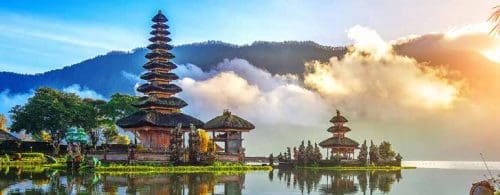
Bali, with its idyllic beaches and co-working spaces, has become a haven for digital nomads seeking to balance work with surf sessions and yoga retreats. Over in the bustling streets of Chiang Mai, Thailand, professionals set up temporary bases in cafes, benefiting from the city’s rich culture and affordable living costs after office hours.
The Portuguese town of Ericeira, recognized as a World Surfing Reserve, sees a melding of business meetings and wave-catching, all in a day’s work. And in the mountainous backdrop of Medellín, Colombia, remote workers find inspiration amidst the city’s verdant landscapes, punctuating work hours with trips to local markets or nearby coffee plantations. These destinations exemplify the allure of workcations, enabling professionals to seamlessly blend productivity with exploration and leisure.
Health and Wellness Travel
The pandemic made everyone more health -conscious. This consciousness has translated into travel, with many tourists choosing destinations offering wellness retreats, spa treatments, meditation courses, and yoga sessions amidst nature.
This shift in consciousness has seamlessly woven itself into the fabric of travel. Destinations that offer wellness retreats have surged in popularity, catering to this burgeoning demand. These retreats often encapsulate a spectrum of health-focused offerings, from rejuvenating spa treatments that utilize ancient therapeutic traditions to meditation courses designed to soothe the modern mind.
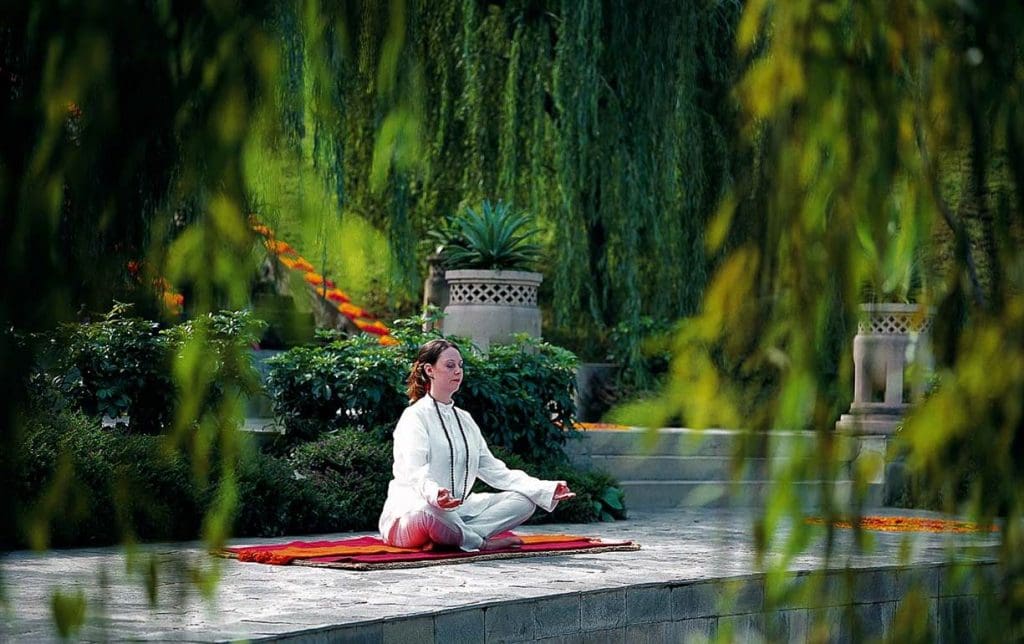
Yoga sessions, a practice that harmonizes physical, mental, and spiritual well-being, are frequently held in serene natural settings, allowing participants to draw a profound sense of peace from their surroundings.
A wonderful example is Ananda, a haven of holistic wellness and spiritual rejuvenation centre in the foothills of the Himalayas. Melding ancient Indian healing practices with luxury, this retreat invites guests to embark on a transformative journey of mind, body, and spirit. Set within a Maharaja’s palace estate, Ananda seamlessly combines Ayurveda, yoga, and meditation, thus offering an oasis of tranquillity against the backdrop of lush forests and the sacred Ganges River.
Furthermore, these wellness journeys are often complemented by organic and nutritious culinary offerings, ensuring that travellers are nourished from the inside out. As the world moves forward, the intersection of travel with health and wellness promises to redefine the contours of tourism , crafting experiences that leave travellers enriched, revitalized, and deeply transformed.
Solo Female Travel
Empowered women around the world are breaking societal norms and venturing out alone. The travel industry has responded with female-only tours, women-friendly accommodations, and safety apps, catering to this growing segment.
Solo female travel has evolved from a niche trend into a powerful movement, reflecting a broader societal shift towards independence and empowerment for women across the globe. This surge in solo female exploration can be attributed to a combination of factors: increased safety measures in many destinations, more women-centric travel groups and resources, and a digital age that keeps everyone connected and informed.
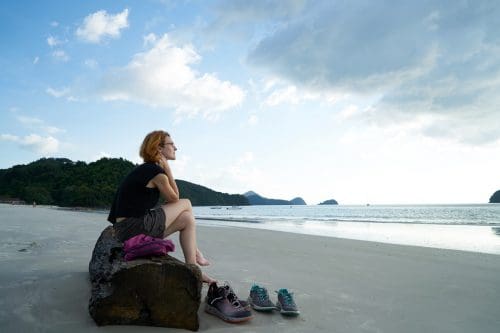
Social media platforms, particularly, have played a pivotal role, offering a space for solo female travellers to share their experiences, insights, and advice. These shared stories not only inspire more women to embark on their own journeys but also cultivate a supportive community where safety tips, destination recommendations, and cultural nuances are exchanged.
Many countries around the world have recognized the growing trend of solo female travel and have made efforts to cater to and ensure the safety of such travellers. Among them are Japan, New Zealand, Canada, Nordic countries,
Beyond Reality: The New Wave of Virtual Explorations
Virtual explorers don state-of-the-art VR headsets, breaking free from the confines of their urban dwellings. The vast terrains of Machu Picchu for instance, materialize, enveloping them in its mystique. They traverse the ancient Incan trails virtually, sensing an authentic connection to the majesty of the bygone era.
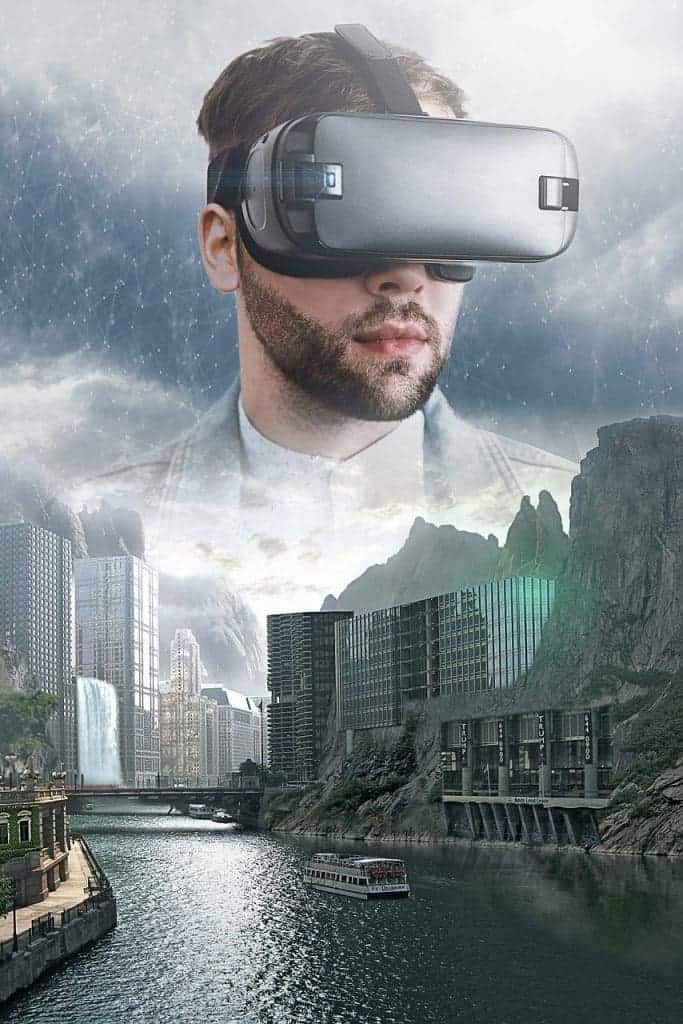
An interactive digital guide suddenly manifests, narrating the lore of a prominent structure they observe. This AR integration enriches their virtual odyssey, melding discovery with knowledge. For many of these digital wanderers, the synthesis of history and exploration is spellbinding, allowing them to delve deeper into the stories behind iconic landmarks.
From the mountainous beauty of the Andes, they transition to the quaint streets of Kyoto. As they saunter alongside the virtual Kamo River, an elegant traditional ryokan beckons. Zooming in, they can navigate its interiors, appreciate the tranquillity of its gardens, and sense the ambience of the surrounding neighbourhood. This experience feels akin to an immersive digital brochure, hinting at possible destinations for their future real-world adventures.
Some might use it as a precursor, previewing locations before an actual visit. For others, it’s an eco-friendly alternative, satiating their wanderlust without leaving a carbon footprint.
While virtual travel can’t completely replace the tangible and sensory-rich experience of physical travel, it offers an alternative for those who are constrained by time, budget, health, or even global crises. Moreover, it’s a sustainable way to explore the world, reducing the environmental impact that often comes with traditional travel. As technology continues to advance, the line between physical and virtual travel might become even more blurred, offering hybrid experiences that cater to a variety of traveller needs.
Going forward, Leisure travel trends highlight a shift towards more conscious, immersive, and personalized experiences. With sustainability at its heart and technology as its backbone, the future of travel promises to be exciting!
Read more: Latest
Our Social Presence

- Discover India
- Hotels & Resorts
- Lifestyle, Weddings & wellness
- Todays Traveller awards
- Todays Traveller Interviews

Quick Links
Our social networks.

Want to create or adapt books like this? Learn more about how Pressbooks supports open publishing practices.
Chapter 5. Recreation
Don Webster
Learning Objectives
- Differentiate between recreation, outdoor recreation, adventure tourism, and nature-based tourism
- Describe the significance, size, and economic contribution of this sector to the overall tourism industry in BC
- Identify key industry organizations in recreation, outdoor recreation, and adventure tourism
- Classify different subsectors of recreation, outdoor recreation, and adventure tourism
- Recognize the unique challenges facing recreation, outdoor recreation, and adventure tourism in BC
In this chapter, we discuss the concept of recreation in tourism and hospitality. Recreation can be defined as the pursuit of leisure activities during one’s spare time (Tribe, 2011) and can include vastly different activities such as golfing, sport fishing, and rock climbing. Defining recreation as it pertains to tourism, however, is more challenging.
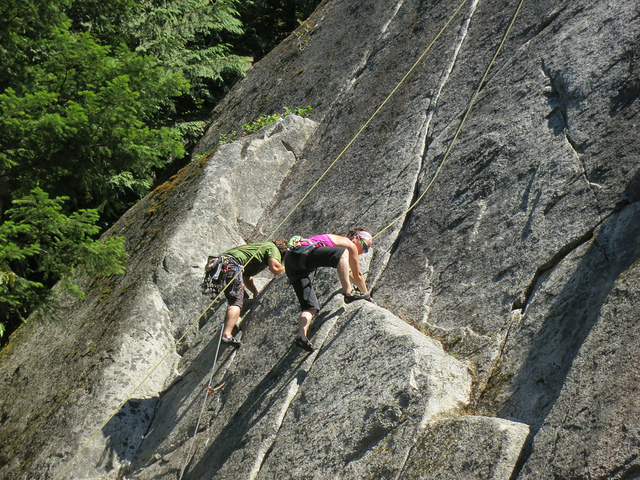
Let’s start by exploring some recreation-based terms that are common in the tourism industry. Outdoor recreation can be defined as “outdoor activities that take place in a natural setting, as opposed to a highly cultivated or managed landscape such as a playing field or golf course” (Tourism BC, 2013, p. 47). This term is typically applied to outdoor activities that individuals engage in and that are located close to their community. When these activities are further away, and people must travel some distance to participate in them, they are often described as adventure tourism.
According to the United Nations World Tourism Organization (UNWTO), adventure tourism is “a trip that includes at least two of the following three elements: physical activity, natural environment, and cultural immersion” (UNWTO, 2014, p.12). Examples of adventure tourism in BC include river rafting, helicopter skiing, and rock climbing.
Take a Closer Look: UNWTO Global Report
The Global Report on Adventure Tourism by UNWTO offers an in-depth analysis of the global adventure travel sector. It can be found at http://affiliatemembers.unwto.org/publication/global-report-adventure-tourism
Adventure tourism can be “soft” or “hard.” Differentiating between the two is somewhat subjective, but is loosely based on the level of experience required, the level of fitness required, and the degree to which the participant is exposed to risk (UNWTO, 2014). Examples of soft adventure include wildlife viewing or moderate hiking, whereas river rafting or rock climbing would usually be considered hard adventure.
Another term that is used, one that overlaps with the definitions of outdoor recreation and adventure tourism, is nature-based tourism, which refers to “those tourism experiences that are directly or indirectly dependent on the natural environment” (Tourism BC, 2005b, p.6). This term is often used to describe activities that are closely connected to nature, such as whale watching, birding, or self-propelled travel such as hiking and kayaking.
As you can see, there are challenges in classifying recreation in tourism. For instance, if people kayak near their home or community, it may be considered outdoor recreation. If they travel afar for that same activity, it likely is designated as adventure tourism. If the kayaking is done in protected, mild conditions, it would be considered soft adventure, but if done in a challenging and risky river descent, it may be classified as hard adventure.
Of course, each of the above scenarios of kayaking could be considered nature-based tourism if it is strongly linked to the natural environment. Ultimately, categorization is based on a combination of several factors, including manner of engagement in the activity (risk exposure, experience requirement, group or solo activity), the distance travelled to access the activity, and the type of environment (proximity to nature, level of challenge involved) that that the activity occurs in.
A 2013 adventure tourism market study discovered that people who travel for adventure experiences tend to be well-educated, with 48% holding a four-year degree or higher credential. They value natural beauty and rank this as the highest factor when choosing a destination, and the most cited reasons for their travel are relaxation “relaxation, exploring new places, time with family, and learning about different cultures” (UNWTO, 2014, p.15).
Globally, it is estimated that the continents of Europe, North America, and South America account for 69% of adventure tourism, or US$263 billion in adventure travel spending. Adventure tourists tend to be seen as high-value visitors, with as much of 70% of their expenditures remaining in the communities visited (UNWTO, 2014).
The size, extent, and economic contribution of recreation, outdoor recreation, and adventure tourism in British Columbia is also substantial. The rest of this chapter explores the sector in the province in more detail.
Recreation and Adventure Tourism in BC
Studies have shown that nearly all residents of BC partake in some kind of outdoor recreation activity during any given year. Approximately 85% of those participants indicate that these recreational activities were very important to them (Tourism BC, 2013).
Spotlight On: Outdoor Recreation Council of BC
The Outdoor Recreation Council of BC (ORC) describes itself as “promoting access to and responsible use of BC’s public lands and waters for public outdoor recreation” (Outdoor Recreation Council of BC, 2014). The Council promotes the benefits of outdoor recreation, represents the community to government and the general public, advocates and educates about responsible land use, provides a forum for exchanging information, and connects different outdoor recreation groups. For more information, visit the Outdoor Recreation Council of BC website : http://orcbc.ca
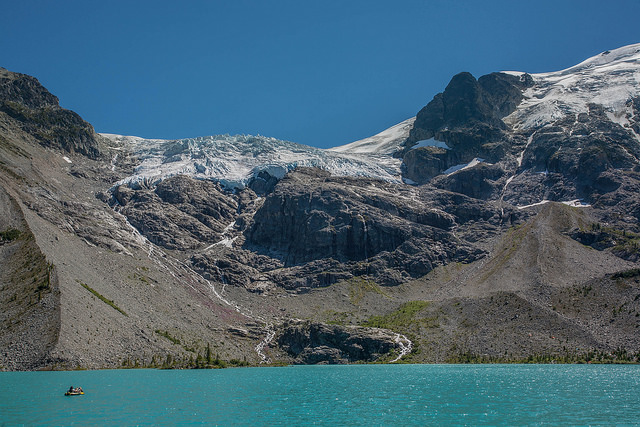
It is estimated that there are approximately 2,200 outdoor/adventure tourism operators in BC. In 2001, this accounted for 21,000 jobs and $556 million in direct wages. The last sector-wide study in 2005 estimated that business revenues in outdoor adventure tourism accounted for approximately $854 million in annual business revenues (Tourism BC, 2013). Given the growth of adventure tourism over the last decade, it is likely these numbers have risen.
Additionally, in the current five-year provincial tourism strategy, entitled Gaining the Edge, outdoor/adventure tourism is indicated as one of six key areas targeted for growth ( British Columbia Ministry of Jobs, Tourism and Innovation , 2012). This government support, combined with the rapid growth of the outdoor and adventure tourism industry, point to a strong future for this sector.
Take a Closer Look: Outdoor Adventure Sector Profile
Outdoor Adventure: Tourism Sector Profile, a report produced by Destination BC, includes information on the size, type, and characteristics of tourism companies in this sector. Also included is market demand for these activities and future challenges the sector faces. You can find the report at Outdoor Tourism Sector Profile [PDF] : http://www.destinationbc.ca/getattachment/Research/Research-by-Activity/All-Sector-Profiles/Outdoor-Adventure-Sector-Profile,-May-2014/Tourism-Sector-Profile_OutdoorAdventure_May2014.pdf.aspx
This section covers two key types of recreation and tourism, with a focus on British Columbia:
- Land-based recreation and tourism
- Water-based recreation and tourism
It’s not possible to detail all the recreational activities available in BC, but by the end of this section, you will have an understanding of the key unique activities available in the province.
Land-Based Recreation and Tourism
Golf courses and resorts.
A 2009 economic impact study found that more than six million Canadians participate in the game of golf each year, making this sport the number one outdoor recreational activity in Canada based on participation. Golf also directly employs more than 155,000 people and contributes more than $11 billion directly to Canada’s gross domestic product. BC has over 300 golf course facilities, and with over $2 billion annually in direct economic activity, the golfing industry in the province is the fourth largest in Canada (Strategic Networks Inc., 2009).
Golf is a significant tourism attraction in BC; in 2007 the province was chosen as the “Best Golf Course Destination in North America” by the International Association of Golf Tour Operators (Destination BC, 2014c). Part of the draw is the diverse environment; golfers can choose from lush coastal forests to desert environments, and many courses have a viewscape of mountains or the ocean.
A 2006 study by the Canadian Tourism Commission (CTC) detailed both demographic and economic factors related to the Canadian golf industry. Significant findings included that there were more than 3.4 million golf travellers in Canada annually, and that of those travellers, approximately 34% travelled to BC. In addition, the Canadian golf participation rate (for the total Canadian population) was 21.5%, which is among the highest golf participation rates of any country in the world. Golfing provides an opportunity to attract significant tourism revenue as the average golf traveller has a much higher than average income level, with up to 50% of all golf travellers earning $100,000 or more per annum (Tourism BC, 2009b).
Spotlight On: British Columbia Golf Marketing Alliance
The British Columbia Golf Marketing Alliance is a strategic alliance that represents 58 regional and destination golf resorts in BC. The purpose of the alliance is to grow the game of golf in BC and achieve recognition nationally and internationally as a leading golf destination. The alliance supports and distributes information about research, lobbying efforts, and golf industry events. For more information, visit the Allied Golf Association of BC website : http://aga-bc.org/committees/recreational-golf-committee/
Mountain Resorts and Nordic Centres
Resorts in British Columbia range from smaller eco-lodges to large ski areas. Mountain resorts and nordic centres are part of the larger resort tourism sector, which in 2004 was valued at $1.9 billion (Tourism BC, 2011c).
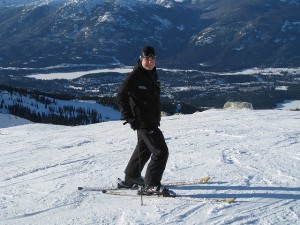
Ski/Snowboard Mountain Resorts
BC’s many world-class facilities and high-quality snow conditions provide mass appeal for downhill skiing and snowboarding. Mountain resorts in BC can be separated into two principal categories: destination resorts and regional resorts. Destination mountain resorts are often significantly larger and offer a greater range of amenities such as on mountain accommodation and food services; they are also generally marketed to out-of-area and international visitors. Examples of a destination resort would include Whistler Blackcomb Ski Resort. On the other hand, regional mountain resorts are usually smaller in size and capacity, have fewer amenities, and often cater more directly to the local community (Tourism BC, 2011c) such as Whitewater Ski Resort in the Kootenay Rockies.
Spotlight On: Canada West Ski Areas Association
Ski areas in Western Canada (Alberta and BC) are represented by the Canada West Ski Areas Association (CWSAA), which has a diverse mandate that includes marketing, advocacy, environmental stewardship, and risk management. For more information, visit the Canada West Ski Areas Association website : http://www.cwsaa.org
The aggregate economic value of destination mountain resorts is significant; one study by Tourism BC found that 13 of these resorts were responsible for generating approximately 1.1 billion in revenue, or 8% of the total provincial tourism revenues in 2008. Additionally, they provided the equivalent of 14,267 full-time equivalent jobs (Tourism BC, 2011c). Furthermore, BC’s top mountain resorts have received many prestigious awards (Tourism BC, 2011c, p. 11):
- Whistler Blackcomb has consistently been named the #1 ski resort in North America.
- In 2009, Sun Peaks was named one of the “Top 20 Ski Resorts in North America” by Condé Nast Traveler.
- Big White Ski Resort was recognized in 2009 as a “Top 5 Family Resort” by the UK-based Sunday Times.
The publicity that these resorts receive has undoubtedly reflected positively on the rest of the BC tourism industry.
Spotlight On: “Ski It to Believe It”
Destination BC offers a specific mountain resort marketing website for 13 destination resorts in BC called “Ski It to Believe It.” The site features live updates on snow conditions, resort info, a map featuring all BC ski destinations, blogs, and dynamic content featuring visitors enjoying various skiing experiences including heli, cat, backcountry, and downhill skiing. For more information, visit the Ski It to Believe It website : http://skiittobelieveit.com
Nordic Centres
Nordic skiing, also commonly known as cross-country skiing, is a low-risk, low-impact winter sport popular across Canada. It differs from backcountry skiing in that participants ski on groomed trails typically maintained as part of an established facility (Cross Country BC, n.d.).
Spotlight On: Whistler Sport Legacies
Leading up to the 2010 Winter Olympics held in Vancouver and Whistler, there was much debate about the need for a continuing legacy from the event. Whistler Sport Legacies is an example of a recreational, tourism, and sport legacy that can emerge out of a mega event such as the Olympics. For more information, visit the Whistler Sport Legacies website : http://www.whistlersportlegacies.com
With more than 50 cross-country ski centres across BC, and a season that often exceeds that of downhill skiing (November to May in many areas), the sport attracts large numbers of local and inbound recreation enthusiasts. Trail networks have been developed in both stand-alone environments, as well as in partnership with large mountain resorts such as Silver Star in Vernon, Sun Peaks in Kamloops, Cypress Mountain above Vancouver, and Rossland in the Kootenays. Many of these trail networks offer both groomed and track-set trails, a number are lit for night skiing.
Spotlight On: Silver Star’s Sovereign Lake Nordic Centre
Located just outside Vernon, Sovereign Lake is Canada’s largest daily groomed trail network that includes 105 kilometres of trails varying from green (easy) to black diamond (most difficult); a further trail expansion is planned for 2015. For more information, visit Sovereign Lake’s website : http://www.sovereignlake.com
Backcountry Skiing and Snowboarding
Backcountry skiing and snowboarding offers a recreational activity in a wilderness setting, away from any established mountain resorts, lifts, or trails. BC is regarded as a world-class destination for backcountry access, and has recently seen considerable and sustained growth in this sector (Porteus, 2013). The motivator for pursuing this activity for most people is primarily the lure of fresh, untracked snow in a beautiful mountain setting. Some backcountry skiers and snowboarders combine this activity with helicopter or snowcat skiing.
Spotlight On: Backcountry Lodges Association of British Columbia
The Backcountry Lodges Association of British Columbia (BLABC) represents backcountry lodges in the province. Its consumer site features a find-a-lodge function, profiles for summer and winter lodges, the ability to check conditions in various backcountry areas, and consumer content including a blog and videos. For more information, visit the Backcountry Lodges Association of BC : www.backcountrylodgesofbc.com
Helicopter skiing transports skiers and snowboarders by helicopter to the backcountry. It is typically a professionally guided activity, with packages ranging in duration from a single day to weeks. The skiing/snowboarding is often packaged with a luxury lodge accommodation, gourmet meals, and access to spa treatments.
Heliskiing was pioneered in Canada by Swiss mountain guide Hans Gmoser, who founded the company Canadian Mountain Holidays, which has grown to be the largest heliskiing company in the world (Canadian Mountain Holidays, n.d.). Today, there are close to 20 helicopter skiing companies in BC, which represents the largest concentration of commercial operations in the world (HeliCat Canada, n.d.).
Snowcat skiing is alpine skiing accessed by travelling to the top of the ski area in a snowcat (an enclosed cab vehicle on tracks). As with heliskiing, this activity also has its commercial roots in BC. Snowcat skiing was pioneered in 1975 by Selkirk Wilderness Skiing as an alternative to both lift-serviced and helicopter-accessed riding and skiing (Selkirk Wilderness Skiing, n.d.). It is typically a guided activity due to the avalanche risk associated with the terrain. As with heliskiing, snowcat skiers have the option of choosing single-day or multi-day vacation packages. During the winter of 2015, there were 11 established snowcat skiing operations in BC (HeliCat Canada, n.d.).
Spotlight On: Avalanche Canada
This organization provides public avalanche forecasts and education for any backcountry travellers venturing into avalanche terrain. This vital service is provided to the public free of charge, as Avalanche Canada is a not-for-profit society dedicated to a vision of eliminating avalanche injuries and fatalities in Canada. In addition to the website, it provides training programs and shares safety best practice. For more information, visit Avalance Canada : http://www.avalanche.ca
Guides for these operations are typically certified by either the Association of Canadian Mountain Guides (ACMG) or the Canadian Ski Guide Association (CSGA). Both organizations assess the guides for their expertise in technical skills, avalanche forecasting, risk management and emergency response before issuing certification. The process is extensive and rigorous, taking much time and commitment for guides to become fully certified.
Spotlight On: HeliCat Canada
Based in Revelstoke, BC, HeliCat Canada is an industry organization that represents heliskiing and snowcat skiing operators in Canada. It provides regulation, advocacy, and marketing for the operators. Since 1978, the organization has worked closely with government and industry to develop operations guidelines. For more information, visit Helicat Canada : www.helicatcanada.com
Off-Road Recreational Vehicles
An off-road recreational vehicle (ORV) is any vehicle designed to be driven off road that is not included within any other vehicle classification framework. This includes snowmobiles, all-terrain vehicles (ATVs), and dirt bikes (British Columbia Ministry of Forest, Lands and Natural Resource Operations, 2014). ORV use is recognized as a considerable contributor to the BC economy, owing primarily to recreational users, but also from tourist visits.
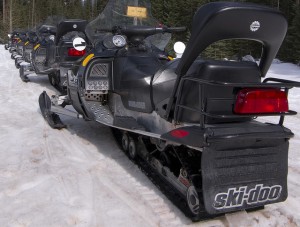
Recreational snowmobiling in BC is represented by the British Columbia Snowmobile Federation (BCSF). The BCSF’s mandate is to represent recreational snowmobile clubs through advocacy, education, and stewardship (BCSF, n.d.). Commercial snowmobiling is represented by the British Columbia Commercial Snowmobile Operators Association (BCCSOA), a group of snowmobile tour operators who have mobilized to support marketing, product development, and government advocacy initiatives (BCCSOA, n.d.).
ORV use has long been the subject of conflict between non-motorized and motorized recreational users of the wilderness. Non-motorized users claim that motorized users negatively impact the wilderness through noise pollution and environmental damage by degrading trails and scaring wildlife (Webster, 2013). Recently, wilderness tourism operators who hold Crown land tenure to operate in remote areas have complained that ORVs negatively affect their visitors’ experiences. Some of these conflicts may now be mitigated through the implementation of the Off-Road Vehicle Act, which was passed in 2014. This Act requires mandatory registration of ORVs, and includes elements that promote safety, enforcement of regulations, education, and outreach (British Columbia Ministry Forest, Lands and Natural Resource Operations, 2014).
Guest Ranchers and Hunting Outfitters
Guest and dude ranches.
Guest ranches and dude ranches offer personal and home-like vacation experiences centered on horseback riding and an authentic ranch experience. These operators typically offer accommodation in a ranch-type environment, and include as part of the experience the opportunity to participate in ranch activities such as horse riding and cattle wrangling. Other services and activities may also be available, such as spa treatments, hiking, canoeing, and fishing (BC Guest Ranchers Association, n.d.).
Spotlight On: The British Columbia Guest Ranchers Association
The British Columbia Guest Ranchers Association (BCGRA) represents guest and dude ranch operators in the province. It serves and represents its members through cooperative marketing, advertising, development of operational standards, and member pricing on liability insurance plans (BCGRA, n.d.). For more information, visit the British Columbia Guest Ranchers Association website : http://www.bcguestranches.com
A 2011 study of guest ranches by Tourism BC found that there were 57 operating ranches in the province. Most of these were small operations with one to five employees and serving fewer than 1,000 clients per year (Tourism BC, 2011a). There are also large operations such as the Hills Health Guest Ranch located near 100 Mile House, which can accommodate hundreds of guests at one time. The ranch features a full on-site spa and two dining rooms, and hosts a multitude of special events each year. Two other examples of unique guest ranch operations are the Siwash Lake Ranch in south-central BC, a “high-end” exclusive resort featuring executive-chef prepared meals, and the Echo Valley Ranch and Spa in the BC interior, offering an alternative therapy spa and gold-panning excursions.
Hunting Outfitters
Hunting is a traditional recreational activity in BC, and it is also one of the original tourism products in the province (GOABC, n.d.). BC is fortunate to have a vast amount of wilderness available for hunting activities. The exact size of the hunting market is difficult to quantify, but in 2003, a study found that 5,000 non-resident hunting licences were sold in BC, contributing $46 million to the provincial economy (CTC, 2012).
Some people choose self-guided hunting activities, but to hunt certain species, a guide outfitter must be hired. Guide outfitters are licensed by the BC Government to provide commercial hunting services for non-residents. This commercial hunt service directly employs more than 2,000 BC residents and generates approximately $116 million in economic activity annually (GOABC, n.d.). Many of these outfitters are small family operations based in rural areas; they are a source valuable economic activity in areas with limited resources (GOABC, n.d.).
Spotlight On: Guide Outfitters Association of BC
Guide Outfitters Association of BC (GOABC) was established in 1966 to promote and preserve the interests of guide outfitters who take hunters out into wildlife habitat. GOABC is also the publisher of Mountain Hunter magazine. Its website outlines a code of conduct and standards for guide outfitters as well as a wildlife DNA collection program to help provide insight into animal populations. For more information, visit the Guide Outfitters Association of BC website : http://www.goabc.org
Cycling is a popular recreational activity in BC thanks to a variety of terrain, spectacular scenery, and favourable weather conditions, with approximately 44% of residents participating each year (Tourism BC, 2013). Cycling also attracts out-of-province visitors. One study from 2008 reported that out of 5.6 million Canadians who travelled to BC over a two-year period, almost one million (17%) had participated in a cycling activity (Tourism BC, 2009).
Spotlight On: Cycling Destinations
Several BC destinations have developed cycling as a key tourism product. For example, the Salt Spring Island group Island Pathways helped make the island more bike-friendly in recent years by installing bike racks, developing a map with bike routes, encouraging local transportation to accommodate bikes, and establishing local bike rentals and service. For more information, visit Salt Spring Island Cycling : http://www.saltspringtourism.com/cycling/
Another great example of cycling tourism is the Kettle Valley Railway in the Okanagan, built on an abandoned railbed. This 600-kilometre trail network includes a multitude of tunnels and trestles, and is most often travelled by cycling. Sections of the trail system are also now included in the Trans Canada Trail. For more information, visit the Kettle Valley Railway website : http://www.kettlevalleyrailway.ca/
Cycling can be generalized into two styles: road cycling and mountain biking.
Road cycling appeals to those who want to travel on paved roads on bikes designed for travelling long distances efficiently and effectively. Road cycling may refer to racing, both recreational and professional, or cycle touring, where cyclists travel by bike on single- or multi-day trips. Given the multitude of rolling hills, mountain passes, and stunning vistas, BC is regarded as a premier cycle touring destination (Destination BC, 2014b).
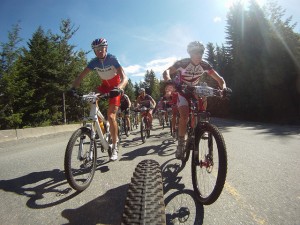
Mountain biking generally involves riding on unpaved routes and trails either specially designed for biking or for multipurpose use. BC’s reputation as a prime mountain biking destination has grown because of the unique array of trails available, ranging from the steep, challenging routes of Vancouver’s North Shore, to the high alpine cross-country routes found in the South Chilcotin Mountains (Tourism BC, 2011b).
Take a Closer Look: Mountain Bike Tourism
The report Tourism Essentials Guide: Mountain Bike Tourism is a valuable resource for operators or communities seeking to develop or promote mountain biking tourism in their area. It can be found at Tourism Essentials Guide: Mountain Bike Tourism [PDF] : http://www.destinationbc.ca/getattachment/Programs/Guides-Workshops-and-Webinars/Guides/Tourism-Business-Essentials-Guides/TBE-Guide-Mountain-Biking-May2011.pdf.aspx
Over the years, mountain biking has grown from being a fringe activity to a mainstay of the tourism economy. In fact, the growth potential of mountain biking is so highly regarded that the BC Government now considers it as one of the top growth areas in the outdoor adventure sector (Tourism BC, 2011b).
Indeed, numerous mountain winter resorts such as Whistler Blackcomb, Silverstar, and Kicking Horse have developed mountain biking trail infrastructure and lift-accessed biking to provide off-season activities. World-class mountain biking races such as the Test of Metal and the BC Bike Race bring thousands of riders through small communities for mountain biking. The economic impact of these events is significant. Over the course of a single four-month season in the Sea-to-Sky Corridor in 2006 (including the communities of North Vancouver, Squamish, and Whistler), the economic contribution of mountain biking to local economies was $10.3 million (Western Canada Mountain Bike Tourism Association, 2006).
Spotlight On: Test of Metal and GranFondo
Two major bike races bring significant visitors to the Sea-to-Sky Corridor. The Test of Metal, held in Squamish, has sold out every year since 1998, and brings upward of 1,000 mountain bikers into the area for a one-day event each June. For more information, visit The Test of Metal : http://testofmetal.com/. The GranFondo Whistler is a road biking race from Vancouver to Whistler that now attracts upward of 7,000 participants each year. For more information, visit The GranFondo : http://granfondowhistler.com
Spotlight On: Western Canada Mountain Bike Tourism Association
Western Canada Mountain Bike Tourism Association (MBTA) is a not-for-profit organization working toward establishing BC, and Western Canada, as the world’s foremost mountain bike tourism destination. It has hosted a symposium on mountain bike tourism and works with Bike Parks BC to ensure terrain development. For more information, visit the Mountain Bike Tourism Association website : http://www.mbta.ca/
Camping and Hiking
In 2012, over 19.3 million people visited BC provincial parks, including 16.8 million day visitors, many of whom used the parks for hiking and exploration in addition to picnics, swimming, and other outdoor activities. Of these visitors, 2.3 million were overnight campers, generating $15.5 million in user fees, with an average guest satisfaction rating of 82% (BC Parks, 2012). As discussed in Chapter 3, there are also a number of private camping providers in the province.
Wildlife Viewing
Given the diversity and richness of our natural environment, it is not surprising that there is a thriving wildlife viewing industry in BC. This includes whale, bird, and bear watching as well as travelling to view the northern lights or alpine flowers (CTC, 2007). One study conducted by the Canadian Tourism Commission established that within BC, approximately 37% of tourists took part in wildlife viewing while visiting. Significantly, for 13% of visitors, the primary motivation for their travel to BC was wildlife viewing (CTC, 2007).
Spotlight On: Wilderness Tourism Association of British Columbia
The Wilderness Tourism Association of British Columbia (WTA) provides industry support and advocacy for those operators offering nature-based tourism products. For more information, visit the Wilderness Tourism Association of BC website : www.wilderness-tourism.bc.ca
Whale watching occurs along the coast of BC, with tours sometimes leaving from major urban centres, but more commonly from smaller communities such as Telegraph Cove on northern Vancouver Island. Tours are typically by boat, on vessels ranging from open, 10-passenger Zodiacs, to comfortable cabin cruisers with inside seating. The most commonly observed whale is the orca, one of the province’s most distinctive animals. Other whales like the humpback, minke, and Pacific grey are also frequently encountered. The province’s vast diversity of marine life is a key attraction of the tours; in addition to whale watching, a typical tour may encounter bald eagles, sea lions, porpoises, and a variety of sea birds (Destination BC, 2014,d).
Take a Closer Look: Mammal Viewing Guidelines
Marine mammal viewing in Canada has grown in popularity to the point where the federal government has established marine wildlife viewing guidelines. These establish parameters such as safe viewing distances and time limits. For more information, visit the marine wildlife viewing guidelines : http://www.pac.dfo-mpo.gc.ca/fm-gp/species-especes/mammals-mammiferes/view-observer-eng.html
Bear viewing — whether for black bears, grizzly bears, or the rare kermode bear — is also popular. Black bears are common across all regions of BC. Grizzly bears are more likely to be found in remote and mountainous regions; they have an estimated population in the province of approximately 16,000. Kermode bears, also called spirit bears, are a subspecies of black bears with a genetic trait that produces white fur instead of black. They are found primarily in the Great Bear Rainforest of the Central Coast, and figure prominently in the spiritual traditions of BC’s Coastal First Nations. The spirit bear is also BC’s official animal (Destination BC, 2014a).

Tourism operators that offer bear viewing typically operate in remote regions of BC. They may utilize raised viewing areas or operate from a boat-based platform, and offer accommodation at night. The season is typically limited to May through October, with the highest chances of viewing success during the salmon spawning season in the fall.
Spotlight On: Commercial Bear Viewing Association of BC
Bear viewing is a complex activity with potential for physical risk to visitors and impacts to the bears. The Commercial Bear Viewing Association of BC (CBVA) sets standards for operators offering bear viewing. For more information, visit the Commercial Bear Viewing Association website : http://www.bearviewing.ca
Now that we’ve explored some of the key land-based tourism and recreational experiences in BC, let’s turn to the water.
Water-Based Recreation and Tourism
Water-based recreation and tourism in BC is extensive and varied. The coastline of more than 25,000 kilometres in length provides ideal opportunities for recreation and tourism (BC Adventure, n.d.). Activities include scuba diving, boat tours, sport fishing, paddle sports, and more. Following is an overview of a few core water-based activities offered by BC tourism operators, as well as a brief description of their economic contributions and related industry organizations.
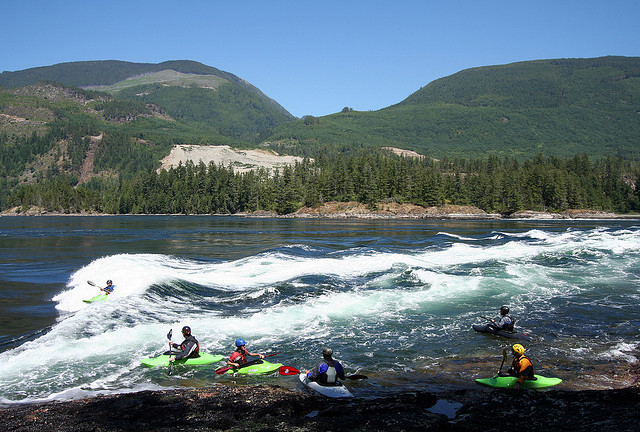
Scuba Diving
BC waters offer scuba divers a rich diversity of marine life such as giant Pacific octopuses, wolf eels, sixgill sharks, soft corals, and cloud sponges. As well, a variety of dive sites are available, including marine parks, protected natural areas, sunken naval vessels, artificial reefs, historic wrecks, and even a submerged fuselage of a Boeing 737 airliner (Dive Industry Association of BC, n.d.).
A 2004 study conducted by the Dive Industry Association of BC found that the dive industry in BC consisted of 116 operators offering services to tourists and residents alike. The many segments of the industry include manufacturers, distributers, dive charters, dive shops, and instructional centres. The study estimated that gross revenues from this industry at $15 million, although this number failed to account for other indirect spending such as trip-related accommodation and transportation. It is likely that the actual economic value of this subsector is actually significantly larger (Ivanova, 2004).
Spotlight On: Dive Industry Association of British Columbia
Established in 2002, the Dive Industry Association of British Columbia (DIABC) is a not-for-profit that represents and supports the recreational diving industry in BC. Funded in part by matching donations from Destination BC, their diverse membership includes dive shops, tour operators, and individual dive guides. For more information, visit the Dive Industry Association of BC : http://diveindustrybc.com
Sport Fishing and Lodges
There is a long and rich history of sport fishing in BC. Anglers are drawn to the province’s tidal waters (for salmon and halibut) and to freshwater rivers and lakes (for trout, steelhead, and sturgeon). The annual rate of recreational participation is significant; a 2009 study estimated that there are nearly 600,000 anglers (either fresh or saltwater) in any given year in BC (Tourism BC, 2009). Furthermore, non-resident anglers contributed almost $6 million by way of licensing fees, and an additional $46 million in non-fishing expenditures to the economy of BC. The British Columbia Fishing Resorts and Outfitters Association (BCFROA) represents commercial freshwater resorts and outfitters and delivers advocacy, conservation, and marketing efforts on behalf of its members (BCFROA, n.d.).
Paddle Sports
River rafting, canoeing, sea kayaking, and standup paddle boarding (SUP) are common activities for both recreationists and tourists alike in BC. Collectively, these sports fall under the paddle sports category, which encompasses any activity that takes place in small boats propelled by paddles (Education Scotland, n.d.). Although all paddle sports are popular recreational activities, two of the more sizable and commercially productive paddle sports subsectors are river rafting and sea kayaking.
River rafting operators can be found on many rivers across BC. Product offerings may range from a three-hour adrenaline-fuelled tour on the famous Fraser River to a 14-day wilderness exploration down the UNESCO World Heritage Tatshenshini-Alsek Rivers in northern BC. These trips consist primarily of three types of rafting: paddle rafting, motorized rafting, and float trips (Destination BC, n.d.).
Commercial rafting in BC is represented by the British Columbia River Outfitters Association (BCROA), which acts as a regulatory and marketing organization for river rafting in the province. Guides are required to be certified at one of three levels: guide, senior guide, or trip leader. Each river in BC that is commonly rafted has an extensive set of safety requirements called “provisions” listed by the BCROA. These provisions set out the minimum level of guide required, acceptable water levels ranges, and type of equipment needed for each river excursion (BCROA, n.d.).
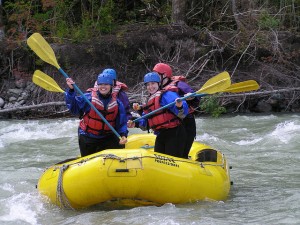
A 2005 study conducted by Tourism BC identified 59 operators offering river rafting trips in the province. With an average of 5.5 employees, these operations are typically small in comparison to other industry subsectors. Collectively, however, they provided services to 216,000 customers and contributed almost $15 million in gross revenues to the BC economy in 2005. The same study also indicated that up to 75% of participants had travelled to join in the activity, indicating that they can predominantly be classified as adventure tourists (Tourism BC, 2007a).
Sea kayaking in BC has grown into a sizable recreational and commercial industry in recent years. The province is highly regarded internationally for its long coastline punctuated by many inlets and fjords. Kayaking trips may be as short as an afternoon harbour tour, or as long as a seven-day wilderness exploration to the remote regions of Vancouver Island. Noteworthy areas for sea kayakers include Pacific Rim National Park on western Vancouver Island, Johnstone Strait on northern Vancouver Island, and Gwaii Haanas National Park in Haida Gwaii.
A 2005 report entitled British Columbia’s Sea Kayaking Sector identified more than 114 operators offering rentals, instruction, day tours, or multi-day tours. These operators reported gross revenues of approximately $14 million in 2005 (Tourism BC, 2005a).
Spotlight On: The Sea Kayak Guides Alliance of BC
Commercial operators offering tours are represented by the Sea Kayak Guides Alliance of BC (SKGABC), which represents more than 600 individual and company members working in the commercial sea kayaking industry. It provides operating standards, guide certification, advocacy, and government liaison services for its members. For more information, visit the Sea Kayak Guides Alliance of BC website : www.skgabc.com
Trends and Issues
As shown throughout this chapter, recreation, outdoor recreation, and adventure tourism play predominant roles in the tourism and hospitality industry in BC. However, there are challenges that impact the viability of this sector, as well as barriers that limit the growth. These topics are discussed briefly here.
Access to wilderness areas for tourism operators is an ongoing challenge. Some zones across the province are set aside for recreation, such as provincial and national parks. However, when it comes to conducting commercial operations in these same places, gaining access often involves an extensive permitting process that may impose restrictions on the type of activity and the number of visitors allowed.
In addition, parks are generally limited to non-motorized activities, thus presenting barriers for tourism operators that seek to offer mechanized recreation. Operators using Crown land for commercial activities also require authorization from the provincial government; in some instances, priority may be given to resource extraction or development. The permitting process can be onerous and time consuming, which for small operators, may be a barrier to growth (Wilderness Tourism Association, 2005).
Environmental issues are discussed in detail in Chapter 10.
Environmental Impacts
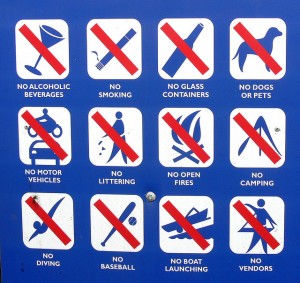
Environmental impacts from climate change, deforestation, and resource extraction all have significant potential to affect this sector of the tourism economy. On a local scale, competition with resource extraction for wilderness areas is a vital issue; without reliable access to pristine wilderness, many operators are facing threats to their sustainability (Wilderness Tourism Association, 2005). Indeed, conflicts with the oil and gas industry, forestry, and mining are constant management challenges for wilderness tourism operators. On a global scale, climate change threatens tourism in BC in many ways, including irregular and insufficient snowfall for winter operations, the pine beetle epidemic sweeping through the province’s forests, and climate-related stress impacting prime wildlife viewing of species such as whales and bears. Environmental issues are discussed in detail in Chapter 10: Environmental Stewardship.
Risk Management
Concerns over risk management and litigation are ongoing for any operator that offers activities with an element of risk. When lawsuits in adventure tourism occur, they are often extensively publicized by the media, creating a perception of risky, dangerous, and irresponsible adventure operators. This can negatively affect the sector through rising insurance rates, increasing governmental regulation, challenging certification requirements, and permitting difficulties when interfacing with land management agencies.
With the popularity of backcountry skiing, snowboarding, snowmobiling, snowshoeing, and other winter sports on the rise in BC, the number of participants accessing backcountry areas is increasing (Mitsui, 2013). This is becoming a concern for long-time backcountry enthusiasts as well as safety monitors such as Avalanche Canada. As winter and summer backcountry equipment becomes more readily accessible, people are able to equip themselves without having received advanced safety training.
The increase of backcountry users will continue to expose users to possible dangerous situations. The best scenario is to ensure users receive proper training and education before they venture into the backcountry areas.
Other elements of risk and liability are discussed further in Chapter 11.
Despite some of the challenges faced by recreation, outdoor recreation, and adventure tourism, the industry as a whole remains an exciting, dynamic, and growing sector of the BC tourism economy. Employment opportunities abound, and the potential for economic contribution to the province, protection of wilderness areas, and diversification of rural economies away from resource extraction are exciting prospects. BC is uniquely positioned to maintain positive growth in this area, contingent upon government support to address the barriers and challenges listed above. Students looking to develop professionally in this field should strive to gain both hands-on experience in a specialized activity, and a strong tourism focused education; this combination will offer the best chance to open doors to a long-term career in this exciting industry.
Now that we understand the importance of recreation to the tourism industry, especially in BC, let’s explore Chapter 6, which looks at entertainment, the other half of this industry classification.
- Adventure tourism: outdoor activities with an element of risk, usually somewhat physically challenging and undertaken in natural, undeveloped areas
- Association of Canadian Mountain Guides (ACMG): Canada’s only internationally recognized guiding association, offering a range of certifications
- Avalanche Canada : a not-for-profit society that provides public avalanche forecasts and education for backcountry travellers venturing into avalanche terrain, dedicated to a vision of eliminating avalanche injuries and fatalities in Canada
- British Columbia Golf Marketing Alliance: a strategic alliance representing 58 regional and destination golf resorts in BC with the goal of having BC achieve recognition nationally and internationally as a leading golf destination
- British Columbia Guest Ranchers Association (BCGRA): an organization offering marketing opportunities and development support for BC’s guest ranch operators
- British Columbia Snowmobile Federation (BCSF): an organization offering snowmobile patrol services, lessons on operations, and advocating for the maintenance of riding areas in BC
- Canada West Ski Areas Association (CWSAA): founded in 1966 and headquartered in Kelowna, BC, CWSAA represents ski areas and industry suppliers and provides government and media relations as well as safety and risk management expertise to its membership
- Canadian Ski Guide Association (CSGA): founded in British Columbia, an organization that runs a training institute for professional guides, and a separate non-profit organization representing CSGA guide and operating members
- Commercial Bear Viewing Association of BC (CBVA): promoters of best practices in sustainable viewing, training, and certification for guides, and advocating for land use practices.
- Destination mountain resorts: large-scale mountain resorts where the draw is the resort itself; usually the resort offers all services needed in a tourism destination
- Dive Industry Association of BC: a marketing and advocacy organization protecting the interests of divers, dive shops, guides, dive instructors, and diving destinations in BC
- Guide Outfitters Association of BC (GOABC): established in 1966 to promote and preserve the interests of guide outfitters, who take hunters out into wildlife habitat; publishers of Mountain Hunter magazine
- Nature-based tourism: tourism activities where the motivator is immersion in the natural environment; the focus is often on wildlife and wilderness areas
- Off-road recreational vehicle (ORV): any vehicle designed to travel off of paved roads and on to trails and gravel roads, such as an ATV (all-terrain vehicle) or Jeep
- Outdoor recreation : recreational activities occurring outside; generally in undeveloped areas
- Outdoor Recreation Council of BC (ORC): a not-for-profit organization that promotes the benefits of outdoor recreation, represents the community to government and the general public, advocates and educates about responsible land use, provides a forum for exchanging information, and connects different outdoor recreation groups
- Recreation: activities undertaken for leisure and enjoyment
- Regional mountain resorts : small resorts where the focus is on outdoor recreation for the local communities; may also draw tourists
- Sea Kayak Guides Alliance of BC : representing more than 600 members in the commercial sea kayaking industry, providing operating standards, guide certification, advocacy, and government liaison services
- Western Canada Mountain Bike Tourism Association (MBTA): a not-for-profit organization working toward establishing BC, and Western Canada, as the world’s foremost mountain bike tourism destination
- Wilderness Tourism Association (WTA): an organization that advocates for over 850 nature-based tourism operators in BC, placing a priority on protecting natural resources for continued enjoyment by visitors and residents alike
- Compare and contrast the terms recreation, outdoor recreation , and adventure tourism . How can we differentiate between each of these terms?
- Do you believe that ORV tourism operators should be considered nature-based tourism? Explain.
- What is the difference between a regional mountain resort and a destination mountain resort?
- Of the smaller subsectors of tourism economy discussed in this chapter, name three that are commonly found in small, rural communities. What is their significance to the local community?
- Name a well-known destination for mountain biking in BC. What is the attraction of that area?
- Why is backcountry skiing/snowboarding sometimes considered a risky activity? Explain. How can these risks be mitigated?
- List three industry organizations described in this chapter that represent outdoor tourism subsectors. What general services do they offer to those they represent?
- What unique advantages does BC offer for recreation, outdoor recreation, and adventure tourism?
- Review the section Trends and Issues. What suggestions would you give to the BC Government to support tourism in this subsector?
Case Study: The Wind Within
In late 2014, Destination British Columbia launched a video and set of corresponding marketing materials that sought to expand on the “Super, Natural” brand promise for the province.
Watch the video here: “The Wild Within: British Columbia, Canada” : https://www.youtube.com/watch?v=dNFrZNjs2ng
On your own or as part of a team, consider the following:
- What natural elements are being promoted?
- What recreational activities are featured in the video?
- Which industry groups or associations are needed to support these activities? Name at least five.
- What are the advantages of promoting BC’s natural elements as a pillar of marketing campaigns?
- What are the disadvantages? How might these be mitigated?
BC Adventure. (n.d.) BC Adventure Planner . Retrieved from: http://www.bcadventure.com/adventure/planner/quick.htm
BC Fishing Resorts and Outfitters Association. (n.d.). About BCFROA . Retrieved from: http://bcfroa.ca/about-bcfroa
BC Guest Ranchers Association. (n.d.). Requirements . Retrieved from: www.bcguestranches.com
BC Parks. (2012). 2011/2012 Statistics Report . [PDF] Retrieved from http://www.env.gov.bc.ca/bcparks/research/statistic_report/statistic_report_2012.pdf
British Columbia Ministry of Forests, Lands and Natural Resource Operations. (2014). Off-Road Vehicle Act. Retrieved from: https://www.leg.bc.ca/40th2nd/1st_read/gov13-1.htm
British Columbia Ministry of Jobs, Tourism and Innovation. (2012). Gaining the edge: A five-year strategy for tourism in BC. [PDF] Retrieved from: http://www.jtst.gov.bc.ca/tourismstrategy/documents/mjti_tourismstrategyreport_fnl.pdf
British Columbia River Outfitters Association. (n.d.). Provisions. [PDF] Retrieved from www.bcroa.com/sites/default/files/river_raft2002_revisedmanual.pdf
British Columbia Snowmobile Federation (n.d.). About BCSF . Retrieved from: http://bcsf.org
British Columbia Snowmobile Operators Association. (n.d.). About us – Snowmobile British Columbia. Retrieved from http://www.snowmobilebritishcolumbia.com/?page_id=450
Canadian Mountain Holidays. (n.d.). About us. Retrieved from: www.canadianmountainholidays.com/about-us.aspx
Canadian Tourism Commission. (2007). TAMS 2006-Canadian activity profile: Wildlife viewing while on trips . [PDF] Retrieved from: http://en-corporate.canada.travel/sites/default/files/pdf/Research/Product-knowledge/TAMS/Canadian%20Travellers%20Outdoor%20Activity/CDN_Wildlife_Viewing_en.pdf
Canadian Tourism Commission. (2012). Sport fishing and game hunting in Canada: An assessment on the potential international tourism opportunity. [PDF] Retrieved from: http://en-corporate.canada.travel/sites/default/files/pdf/Research/Product-knowledge/Product-research/07082013_the_hunting_landscape_rev1.pdf
Cross Country BC. (n.d.). About us. Retrieved from: http://www.crosscountrybc.ca/about
Destination BC. (2014a). Bear viewing. Retrieved from: www.hellobc.com/british-columbia/things-to-do/parks-wildlife/bear-watching.aspx
Destination BC. (2014b). Biking. Retrieved from: www.hellobc.com/british-columbia/things-to-do/outdoor-activities/biking.aspx
Destination BC. (2014c). Golfing. Retrieved from: http://www.hellobc.com/british-columbia/things-to-do/outdoor-activities/golf.aspx
Destination BC. (2014d). Whale watching. Retrieved from: www.hellobc.com/vancouver-island/things-to-do/parks-wildlife/whale-watching.aspx
Destination BC. (n.d.) River rafting British Columbia . Retrieved from http://www.hellobc.com/british-columbia/things-to-do/water-activities/river-rafting.aspx
Dive Industry Association of BC. (n.d.). About us. Retrieved from: www.diveindustrybc.com
Education Scotland. (n.d.). Paddlesports. Retrieved from: http://www.educationscotland.gov.uk/learningteachingandassessment/approaches/outdoorlearning/healthandsafety/guides/activityguidance/paddlesports.asp
Guide Outfitters Association of BC. (n.d.). Economic contribution. Retrieved from: www.goabc.org/economic-contribution.aspx
HeliCat Canada. (n.d.). Our members. Retrieved from: http://www.helicatcanada.com/our-members/heliskiing-members.html
Ivanova, I. (2004). Recreational diving in British Columbia survey report. [PDF] Retrieved from: http://www.destinationbc.ca/getattachment/Research/Research-by-Activity/Water-based/Recreational_Scuba_Diving_in_British_Columbia-sflb.pdf.aspx
Mitsui, E. (2013). Popularity of backcountry skiing worries some in industry. CBC News. Retrieved from http://www.cbc.ca/news/canada/popularity-of-backcountry-skiing-worries-some-in-industry-1.1313223
Outdoor Recreation Council of BC. (2014). About Us. Retrieved from: http://orcbc.ca/about_mission.htm
Porteus, S. (March 6, 2013). The growing business of the backcountry. BC Business. Retrieved from: www.bcbusiness.ca/tourism-culture/the-growing-business-of-the-backcountry
Selkirk Wilderness Skiing (n.d.). About us. Retrieved from: www.selkirkwilderness.com/about_us/
Strategic Networks, Inc. (2009). Economic impact for golf in Canada. [PDF] Retrieved from: http://www.pgaofcanada.com/Userfiles/SNG_NAGA_Impact%20GolfCanada_2009_KeyFindings_EN_Issued%20Aug17_09(1).pdf
Tourism BC. (2005a). British Columbia River Outfitters report . Retrieved from: http://www.destinationbc.ca/Research/Research-by-Activity/Water-based.aspx#.VIYlbb4irzI
Tourism BC. (2005b). Characteristics of commercial nature-based tourism industry in British Columbia [PDF] . Retrieved from: http://www.destinationbc.ca/getattachment/Research/Research-by-Activity/Land-based/Economic_Impacts_of_Commercial_Nature-Based_Tourism_Report-sflb.pdf.aspx
Tourism BC. (2007a). British Columbia’s sea kayaking sector 2005. [PDF] Retrieved from: http://www.destinationbc.ca/getattachment/Research/Research-by-Activity/All-Research-by-Activity/British-Columbia-s-Sea-Kayakers-Report-(2005),-Dec/British_Columbia_s_Sea_Kayakers_Report_2005-sflb.pdf.aspx
Tourism BC. (2007b). Travel activities and motivations of Canadian residents: An overview. [PDF] Retrieved from: http://www.destinationbc.ca/getattachment/Research/Travel-Motivations-(TAMS)/Canadian-Travel-Motivations/Canadian_TAMS_Overview_Report.pdf.aspx
Tourism BC. (2009a). Fishing product overview. Retrieved from: http://www.destinationbc.ca/getattachment/Research/Research-by-Activity/Water-based/Fishing_Sector_Profile.pdf.aspx
Tourism BC. (2009b). Golf sector profile [PDF] . Retrieved from: http://www.destinationbc.ca/getattachment/Research/Research-by-Activity/Land-based/Golf_Sector_Profile.pdf.aspx
Tourism BC. (2009c). Wildlife viewing product overview . [PDF] Retrieved from: http://www.destinationbc.ca/getattachment/Research/Research-by-Activity/Land-based/Wildlife_Viewing_Sector_Profile.pdf.aspx
Tourism BC. (2011a). Guest ranchers business survey 2008/2009. [PDF] Retrieved from: http://www.destinationbc.ca/getattachment/Research/Research-by-Activity/All-Research-by-Activity/Guest-Ranchers-Business-Survey-2008-2009,-January/GuestRanchersReport2008_2009.pdf.aspx
Tourism BC. (2011b). Mountain bike tourism guide. Retrieved from: http://www.destinationbc.ca/Research/Research-by-Activity/Land-based.aspx#.VIYqOr4irzI
Tourism BC. (2011c). The value of mountain resorts to the British Columbia economy. [PDF] Retrieved from: http://www.destinationbc.ca/getattachment/Research/Research-by-Activity/All-Research-by-Activity/Value-of-Mountain-Resorts-to-the-British-Columbia/Value_of_Mountain_Resort_Properties_Phase_One_June-2012.pdf.aspx
Tourism BC. (2013). 2009/2010 Outdoor recreation study . [PDF] Retrieved from: http://www.destinationbc.ca/getattachment/Research/Research-by-Activity/All-Research-by-Activity/Outdoor-Recreation-Study-2009-2010,-January-2013/Outdoor-Recreation-for-Distribution-14Jan13-FINAL-DRAFT-(2).pdf.aspx
Tribe, J. (2011). The economics of recreation, leisure, and tourism. 4th Edition. Oxford, England: Elsevier.
United Nations World Tourism Organization. (2014). Global report on adventure tourism. Retrieved from: http://affiliatemembers.unwto.org/publication/global-report-adventure-tourism
Webster, D. (2013). Adventure tourism operators and snowmobiles: Managing interactions. [PDF] Retrieved from: https://dspace.royalroads.ca/docs/bitstream/handle/10170/660/webster_donald.pdf?sequence=1
Western Canada Mountain Bike Tourism Association. (2006). Sea-to-sky mountain biking economic impact study . [PDF] Retrieved from: http://www.mbta.ca/assets/pdfs/S2S_E_I_Study.pdf
Wilderness Tourism Association. (2005). Characteristics of the commercial nature-based Tourism industry in British Columbia . [PDF] Retrieved from http://www.wilderness-tourism.bc.ca/docs/Commercial_Nature-Based%20Tourism.pdf
Attributions
Figure 5.1 Up and over by Ruth Hartnup is used under a CC-BY 2.0 license.
Figure 5.2 Row Your Boat by Matt Hosford is used under a CC-BY 2.0 license.
Figure 5.3 Blackcomb by Jeff Wilcox is used under a CC-BY 2.0 license.
Figure 5.4 Snowmobiling by Shazron is used under a CC-BY 2.0 license.
Figure 5.5 Cyclists by Jason Sager is used under a CC-BY-SA 2.0 license.
Figure 5.6 A bear in Bute Inlet, BC by John Critchley is used under a CC-BY 2.0 license.
Figure 5.7 Waiting in line by Ruth Hartnup is used under a CC-BY 2.0 license.
Figure 5.8 Rafting Adventure in Squamish, BC by Raj Taneja is used under a CC-BY-NC 2.0 license.
Figure 5.9 Absolutely Nothing is Allowed Here by Vicki & Chuck Rogers is used under a CC-BY-NC-SA 2.0 license.
Introduction to Tourism and Hospitality in BC Copyright © 2015 by Don Webster is licensed under a Creative Commons Attribution 4.0 International License , except where otherwise noted.
Share This Book

What Is Wellness Tourism? A Complete Guide to Taking a Health-Inspired Vacation
Practicing health and wellness in our daily lives isn’t enough for many of us — we seek well-being when we travel, too.
Enter: wellness tourism, a concept that the U.S.-based nonprofit organization Global Wellness Institute (GWI) defines as travel associated with the pursuit of maintaining or enhancing overall personal well-being.
It’s important to note that, though “wellness”’ and “well-being” are often interchangeable and related terms, they have slightly different meanings. According to Gallup , wellness is a part of well-being and describes a healthy lifestyle beyond acute illness, whereas both Gallup and the Centers for Disease Control and Prevention (CDC) define well-being in a broader life context — feelings of contentment and satisfaction, and positive function in career, social, financial, physical, psychological, and other frameworks — which are important for personal and public health.
Wellness tourism, as a mechanism to support overall well-being, comes in a variety of forms.
For some, it may entail a trip or destination exclusively for wellness purposes, like a yoga retreat in the mountains, and for others, it may involve incorporating healthy habits and experiences into established trips. For example, you might bring your family to a hot spring during your annual vacation, or stop in at a spa for a massage in between sessions at a work conference.
For others still, immersion-based wellness travel, such as a pilgrimage, intensive yoga training, a visit to a humanistic integrative education center (like the nonprofit Esalen Institute ), a silent vipassana meditation retreat, or an indigenous-informed plant medicine retreat, may help deepen a spiritual, self-inquiry, or purpose-driven path.
The main point? These types of trips and health-forward activities aren’t going anywhere anytime soon. The global wellness tourism market value currently sits at $451 billion, but a 2022 report by Grand View Research reveals that it’s expected to jump to $1.02 trillion by 2030.
Here, we unpack how wellness tourism works, the possible benefits, and how to plan your next health-inspired getaway.
Common Questions & Answers
History of wellness tourism.
Wellness tourism may be everywhere today, but people have traveled with health or wellness as the primary focus for centuries.
According to Health-Tourism.com , most ancient civilizations recognized the therapeutic benefits of mineral thermal springs , and many built healthcare facilities around them.
Ancient Greek, Egyptian, Roman, Celtic, and Hebrew cultures created health centers that attracted travelers from all over the world, per past research . Baths of different temperatures, swimming pools, exercise rooms, and rooms for massage and other health treatments became a mainstay in Roman culture, according to the World History Encyclopedia . And as early as 5,000 years ago, people trekked to India to seek benefits from Ayurvedic medicine , a holistic approach to physical and mental health.
But while traveling for wellness dates back thousands of years, wellness tourism as a global industry is relatively new, notes the Wellness Tourism Association (WTA) .
“In the early 2000s, the spa industry’s marketing message went from ‘pampering’ to ‘prevention’ and that, along with the so-called ‘wellness revolution’ was the beginning [of wellness tourism],” says Anne Dimon , the Denver-based cofounder, president, and CEO of the WTA , and the editor of TraveltoWellness.com .
These days, the wellness-travel offerings are practically endless. Whether your interests lean toward yoga and meditation, spa experiences, weight loss, hiking, or even treatments purported to be customized to your DNA — like the Chenot Palace Weggis health and wellness retreat in the Swiss Alps — there’s a trip to suit your needs.
How Wellness Tourism Works
Do you ever feel like you need a vacation after a vacation? That may not be the case with wellness tourism. Whereas traditional vacations are often busy and stressful, wellness trips aim to relieve stress and promote health, so you can reenter everyday life feeling rejuvenated and grounded.
“[Wellness tourism] provides an opportunity for people to take a break from their lives and focus solely on themselves and their well-being,” says Jeanette Lorandini, LCSW , a New York City–based licensed clinical social worker and the owner of Suffolk DBT. It can allow you to de-stress and relax without any, or few, distractions.
Many people also find that they’re more open to changing their behaviors when they don’t have to worry about everyday responsibilities. “For the most part, people try to make their lives as orderly and predictable as they can, because the less you have to think about your normal day-to-day life, the easier it is to manage,” says Michael Brein, PhD , a travel psychologist living on Bainbridge Island, Washington. “All that goes out the door when you travel.”
Being in an environment where you don’t have to make everyday decisions may allow you to experiment with new behaviors or focus on cultivating ones you’ve neglected. This can help you create healthy habits, like sleeping better, eating well, and exercising daily, that you want to follow once you return home. A small observational study out of Australia, published in the February 2017 Journal of Alternative and Complementary Medicine found weeklong retreat experiences may lead to substantial improvements in multiple dimensions of health and well-being, maintainable for six weeks after the fact.
Plus, many wellness trips provide access to services that can positively affect mental and physical health, such as massage therapy , yoga classes , and nutrition consultations. These experiences can help you return home feeling refreshed and better equipped to handle day-to-day stressors, Lorandini notes.
Many people plan their own wellness-travel experiences, but you can hire a travel adviser if you don’t have time or need to pull it off, or need help finding high-quality options. The WTA offers a member directory where you can find vetted travel advisers who specialize in wellness tourism.
Types of Wellness Tourists
According to the GWI, wellness tourists fall into two main categories.
This traveler is mainly motivated by wellness when choosing their trip or destination. For example, they may book a weekend at an all-inclusive health resort or go on a dedicated meditation retreat.
This traveler seeks to maintain wellness while traveling, no matter what kind of trip they’re on. For example, they may take a yoga class during a family vacation or visit a spa during a business trip.
Possible Benefits of Wellness Tourism
Most of the health perks of wellness tourism are anecdotal and can’t be backed up by research. Moreover, existing research primarily focuses on general travel, not wellness tourism. That said, we may be able to pinpoint a few potential benefits of wellness travel.
1. It May Boost Happiness
New experiences and changes in scenery can give some people a mood boost. In a study published in July 2020 in Nature , people with more variability in their day-to-day location tended to be happier. Meanwhile, a past study found that women who vacationed twice a year were less likely to suffer from depression and chronic stress than women who vacationed less frequently.
2. It Provides Lasting Stress Relief
A wellness-inspired getaway enables you to escape the stress of everyday life and focus on activities and experiences that promote well-being. And the stress-relieving benefits of this kind of travel are almost immediate. According to a nonacademic online survey by Expedia referenced in 2018 by the Global Coalition on Aging , 88 percent of U.S. respondents reported feeling more relaxed and less anxious after being on vacation for just a day or two, and the same percentage felt optimistic and positive after a trip.
Time spent disconnected from daily stressful situations can also lower your overall stress once you return home.
Even a short trip (including to local venues) can potentially offer lasting stress relief. In one small study published in 2018 in the International Journal of Environmental Research and Public Health , researchers had 20 midlevel executives spend four nights in a hotel outside their usual environment, while a control group of 20 spent their vacation at home. While both groups noticed immediate improvements in stress and well-being, the hotel cohort saw greater benefits. What’s more, the positive effects could still be felt 45 days post-vacation.
3. It May Improve Heart Health
The stress-lowering effects of travel may have benefits for your heart.
In a past study , middle-aged men at high risk for heart disease who reported that they had taken a vacation in the past year were 17 percent less likely to have passed away than men who hadn’t traveled, in research conducted over a nine-year period.
That said, the authors of the aforementioned study note that, while vacations may improve heart health by lowering stress, it may be that healthier people are more likely to travel. More research is needed to determine if and how travel benefits the heart and mortality risk. If you have a heart condition, be sure to consult your physician before you take a trip.
4. It May Enhance Brain Health
Exposure to new behaviors and environments through travel may stimulate the brain in new ways, potentially helping you stay sharp, according to the report from the Global Coalition on Aging.
In fact, when the authors of a past study followed more than 2,000 older adults for three years, they found that those who regularly participated in social or leisure activities, such as traveling, had a lower risk of dementia. According to the CDC , dementia is a general term for when the impaired ability to remember, think, or make decisions interferes with everyday life. Alzheimer’s disease is the most common type of dementia , and it mostly affects older adults, per the CDC.
Wellness Tourism Risks
Travel of any kind comes with risks. You may face personal safety or environmental risks, such as altitude challenges, heat and humidity, foodborne and waterborne illnesses, and diseases carried by animals and insects, notes the World Health Organization (WHO) .
Traveling with a medical condition can also be risky. Air travel in particular can pose risks for people with cardiac failure, heart rate or rhythm disorders, epilepsy , and those who have recently had a heart attack or stroke, according to Johns Hopkins Medicine .
Consult your medical healthcare provider if you plan to take a trip so they can offer guidance and support and help you craft an experience that’s appropriate for your healthcare needs.
Who Might Want to Try (and Avoid) Wellness Tourism
Wellness travel is for anyone and everyone. If you have the desire and the budget for a wellness trip, it may make you happier, relieve stress, and potentially improve brain and heart health.
Given the nature of being outside of your daily comfort zone, wellness tourism may be a stressful experience. “People with underlying mental health conditions such as anxiety or depression may find the experience more difficult than someone without these issues, so it’s best to speak with your doctor before making any plans,” Lorandini says.
People with chronic conditions don’t necessarily need to avoid travel. You should see your healthcare provider as early as possible before traveling to discuss any risks and create a care plan, per Johns Hopkins Medicine.
Access to Wellness Tourism
Wellness tourism can be expensive — for example, a seven-day stay at the Chenot Palace Weggis health and wellness retreat starts at $5,722, and tuition at Esalen Institute varies from $540 to $8,000 depending upon accommodation choice and workshop fees. But there are plenty of budget-friendly wellness-travel options out there, Dimon says. Just keep in mind that what’s considered affordable to one traveler may not be to another.
When searching for affordable wellness retreats and other health-inspired travel options, be sure to factor in transportation (airfare, train fare, car rental). Staying closer to home can cut down on your expenses significantly, and as mentioned above, even getting away on a local trip brings possible health benefits.
Depending on where you stay and what you do, you may also save money by designing your own wellness vacation; no rule says you have to sign up for a weeklong all-inclusive trip. “Think about it,” Dimon says, “Someone could enjoy a self-guided wellness vacation at a three-star hotel, reading, relaxing, walking in nature, making healthy food choices, getting a good night’s sleep, and simply being away from the stress of their everyday lives.”
Creativity and wellness tourism go hand in hand. With endless options available, you can craft a wellness trip to fit any budget.
4 Tips for Getting Started With Wellness Tourism
Follow this expert advice for making the most of your next wellness-travel adventure.
1. Start Small
You don’t have to spend a lot of money or time to be a wellness tourist. If you already have a family or business trip on the calendar, look for opportunities to focus on your health and well-being while you’re away. Check out the area you’ll be visiting to see if there are any wellness supportive experiences you’d enjoy. Consider yoga studios, hiking trails, healthy breakfast spots, spas, hot springs, and cooking classes. If you don’t have a trip scheduled, consider planning a self-guided wellness vacation. If you’re working with a limited budget, look for a hotel, AirBnB, or campground you can drive to and spend a few days away from your usual environment.
2. Find Inspiration
Wellness tourism offers so many possibilities that it’s easy to feel overwhelmed. Where should you go? Should you sign up for a weekend retreat or try to DIY? Asking friends and family for recommendations is always a good first step. But you can also find inspiration by reading about other travelers’ experiences. TraveltoWellness.com , an online magazine for wellness-minded travelers, offers many articles detailing new travel options and stories from contributors who have visited a particular place. Use this and other online travel resources to help you discern what wellness experience fits you. (Also, see our wellness travel resources section at the end of this article for more.)
3. Identify Your ‘Why’
What’s your reason — or your “why” — for taking a wellness trip? Do you need a relaxing environment where you don’t have to plan anything or make decisions about food or activities? Or do you want to learn more about yourself, a culture, practice, or activity? Setting your intention and articulating your “why” may guide you toward finding and planning the right travel experience for you, says Lisette Cifaldi , the director of behavioral health at Hilton Head Health, a weight loss and wellness resort on Hilton Head Island in South Carolina.
4. Hire an Expert
If you dislike planning trips, you’re too busy, or you’re not sure where to start, reach out to travel advisers who specialize in wellness, Dimon suggests. The WTA offers a directory of travel advisers who offer wellness-travel guidance. Looping in a professional who knows the industry and who can make suggestions tailored to your well-being goals may be a solid starting point.
How to Make the Most of Your Next Wellness Trip
Follow these expert tips for preparing for and winding down from your wellness travel adventures so you can maximize the benefits of taking precious time off.
Before You Go
- Set a goal Give yourself a goal to focus on during your trip. This way, you can plan your trip around that goal and maximize your time, Cifaldi says. You can also think about how you want to feel after returning home “and use that as inspiration when planning activities or experiences during your stay,” Lorandini says.
- Plan logistics. Whether you’ve scheduled an all-inclusive experience or you’re DIY-ing, some logistics will be involved. “Read up on the different activities and services available at the destination so you can make informed decisions about how to spend your time there,” Lorandini says. Plan as many logistics as possible beforehand so you don’t have to worry about them during your trip. For example, if you’re doing a self-guided vacation, come up with a list of healthy food restaurants or grocery stores near your place of stay.
- Get support. Can any friends or family members help with everyday responsibilities (childcare, pet-sitting, plant-watering) while you’re gone? Can your coworkers cover for you while you’re gone? Having a support system in place to handle routine tasks allows you to stay present and relaxed during your trip, Cifaldi notes.
- Practice self-care. Preparing for a trip can be stressful, but try to take care of yourself mentally and physically in the days leading up to your departure. This means eating nutritious meals, getting enough sleep, practicing relaxation techniques like yoga or meditation, and exercising, Lorandini says.
After You Get Back
- Reflect: Go easy upon reentering everyday life. Take some time to let the experiences you had on your trip soak in. “Journaling about your experiences can be a great way to process all you learned and hold onto those feelings of relaxation and well-being,” Lorandini says.
- Change your environment. Continue your wellness journey once you return home by tweaking your environment to encourage the healthy habits you practiced on your trip. “You might clean out your pantry to include more health-friendly options or find a space in your home to dedicate to a daily meditation practice,” Cifaldi says.
- Find a community. Connect with people who share your wellness interests. Cifaldi suggests starting with group wellness or fitness classes. You may meet people who are walking a similar well-being path and can support you along your journey, she says.
Wellness Tourism Resources We Love
Organizations.
Global Wellness Institute (GWI)
This nonprofit organization advocates for preventative health and wellness worldwide. The Global Wellness Institute (GWI) collects industry research, leads international roundtables, supports wellness initiatives, and offers an online resource where you can find medical evidence for mainstream wellness approaches. Find information about wellness tourism on their website and sign up for email updates.
U.S. Travel Association
The U.S. Travel Association is a national nonprofit organization representing the travel industry. Made up of more than 1,100 member organizations, they work to grow and sustain travel to and within the United States. They offer research, news, and commentary to keep you informed while you plan your trip.
Media and Planning
Wellness Tourism Association (WTA)
Launched in January 2018, the Wellness Tourism Association (WTA) is a global network of destination management organizations (DMOs), hotels, tour operators, travel advisers, wellness practitioners, and media. The WTA is a great place to search for wellness retreats, destinations, and travel advisers. Browse their directory for options.
Travel to Wellness
Travel to Wellness is an online wellness travel magazine founded by Anne Dimon in 2004. Here, you’ll find reviews of wellness offerings, everyday wellness tips, roundups of retreats and vacations, product recommendations, and firsthand travel accounts. Stay updated with their email newsletter and start your trip search with the 2023 wellness retreat guide .
Suite Dreams Travel
Hosted by the wellness travel planner Barbara Tuckett, the Suite Dreams Travel podcast covers various topics. You'll find episodes on must-see sights, travel reviews, what makes wellness travel different from other vacations, and how to handle travel stressors like canceled flights.
Editorial Sources and Fact-Checking
Everyday Health follows strict sourcing guidelines to ensure the accuracy of its content, outlined in our editorial policy . We use only trustworthy sources, including peer-reviewed studies, board-certified medical experts, patients with lived experience, and information from top institutions.
- Wellness Tourism Market Size, Share & Trends Analysis Report by Service, by Travel Purpose, by Travel Type, by Region, and Segment Forecasts, 2022–2030. Grand View Research .
- Wellness Tourism. Global Wellness Institute (GWI) .
- The History of Medical Tourism. Health-tourism.com .
- Roman Baths. World History Encyclopedia . May 2, 2013.
- About. Wellness Travel Association (WTA) .
- Heller AS, Shi TC, Chiemeka Ezie CE, et al. Association Between Real-World Experiential Diversity and Positive Affect Relates to Hippocampal-Striatal Functional Connectivity. Nature Neuroscience . July 2020.
- Chikani V, Reding D, Gunderson P, et al. Vacations Improve Mental Health Among Rural Women: The Wisconsin Rural Women’s Health Study. WMJ . August 2005.
- Destination Healthy Aging: The Physical, Cognitive, and Social Benefits of Travel. Global Coalition on Aging .
- Blank C, Gatterer K, Leichtfried V, et al. Short Vacation Improves Stress-Level and Well-Being in German-Speaking Middle Managers — a Randomized Controlled Trial. International Journal of Environmental Research and Public Health . 2018.
- Gump BB, Matthews KA. Are Vacations Good for Your Health? The 9-Year Mortality Experience After the Multiple Risk Factor Intervention Trial. Psychosomatic Medicine . September–October 2000.
- About Dementia. Centers for Disease Control and Prevention (CDC) . April 5, 2019.
- Fabrigoule C, Letenneur L, Dartigues JF, et al. Social and Leisure Activities and Risk of Dementia: A Prospective Longitudinal Study. Journal of the American Geriatrics Society . May 1995.
- Health Risks When Traveling. World Health Organization (WHO) . April 28, 2020.
- Traveling With Chronic Conditions. Johns Hopkins Medicine .
- Moss G. Water and Health: A Forgotten Connection? Perspectives in Public Health . Sept 2010.
- Cohen M, Elliott F, Oates L, et al. Do Wellness Tourists Get Well? An Observational Study of Multiple Dimensions of Health and Well-Being After a Week-Long Retreat. Journal of Alternative and Complementary Medicine . March 22, 2021.
- Wellness vs. Well-Being: What’s the Difference? Gallup .
- Well-Being Concepts. Centers for Disease Control and Prevention (CDC) . October 31, 2018.
Leisure, Tourism, and Space: A Thematic Exploration
- First Online: 28 July 2021
Cite this chapter

- Peter Nijkamp 5 , 6 , 7 , 8 ,
- Karima Kourtit 5 , 6 , 7 , 8 &
- Soushi Suzuki 9
Part of the book series: New Frontiers in Regional Science: Asian Perspectives ((NFRSASIPER,volume 53))
381 Accesses
This contribution posits that the tourism sector—as part of the leisure society—deserves a more prominent position in regional science. After a general outline of trends in modern tourism, this chapter argues that promising research angles can be found in: (a) the closer examination of the complex components of leisure time, (b) the income drivers and prosperity impacts of tourism, and (c) the place-based characteristics of tourism destinations (including environmental and neighbourhood externalities). The new role of regional science research in tourism is also to be found in the wider context of the hospitality sector and in a context-specific research framing.
This is a preview of subscription content, log in via an institution to check access.
Access this chapter
- Available as PDF
- Read on any device
- Instant download
- Own it forever
- Available as EPUB and PDF
- Compact, lightweight edition
- Dispatched in 3 to 5 business days
- Free shipping worldwide - see info
- Durable hardcover edition
Tax calculation will be finalised at checkout
Purchases are for personal use only
Institutional subscriptions
Asheim B, Isaksen A (1997) Location, agglomeration and innovation. Eur Plan Stud 5(3):299–330
Article Google Scholar
Balaguer J, Cantavella-Jorda M (2002) Tourism as a long-run economic growth factor: the Spanish case. Appl Econ 34(7):877–884
Beatty J, Torbert W (2003) The false duality of work and leisure. J Manag Inq 12(3):239–252
Becker G (1965) A theory of the allocation of time. Econ J 76(299):493–517
Bernini C, Cerqua A, Pellegrini G (2020) Endogenous amenities, tourists’ happiness and competitiveness. Reg Stud 54(9):1214–1225
Celbis MG, Turkeli S (2015) Does too much work hamper innovation? J Glob Policy Gov 4:97–116
Google Scholar
Christaller W (1964) Some considerations of tourism location in Europe. Pap Reg Sci 12(1):95–105. https://doi.org/10.1111/j.1435-5597.1964.tb01256x
Cooke P, Morgan K (1998) The associational economy. Oxford University Press, Oxford
Book Google Scholar
Corvers F (2019) Designing ‘context-specific’ regional innovation policy. PhD dissertation, University of Leiden, Leiden
Cui D, Wei X, Wu D, Cui N, Nijkamp P (2019) Leisure time and labour productivity. Economics 13:1–24. https://doi.org/10.5018/economics-ejournal.ja2019-36
Davis LN, Davis JD, Hoisi K (2013) Leisure time invention. Organ Sci 24(5):1439–1458
Elsbach KD, Hargadon AB (2006) Enhancing creativity through mindless work: a framework of workday design. Organ Sci 17(4):470–483
Foray D (2014) From smart specialisation to smart specialisation policy. Eur J Innov Manag 17(4):492–507
Frey B (2019) The economics of happiness. Springer, Berlin
Gicheva D (2013) Working long hours and early career outcomes in the high-end labor market. J Labour Econ 31(4):785–824
Glaeser E, Kourtit K, Nijkamp P (eds) (2020) Urban empires. Routledge, New York
Guo LF (2004) Economic analysis of leisure consumption. J Quant Techn Econ 21(4):12–21
Hassink R (2000) Regional innovation support systems. Eur Plan Stud 10(2):153–164
Kourtit K (2019) The new urban world. Shaker, Aachen
Kourtit K, Nijkamp P, Romao J (2019) Cultural heritage appraisal by visitors to global cities: the use of social media and urban analytics in urban buzz research. Sustainability 11(12):3470
Landabaso M (1997) The promotion of innovation in regional policy. Entrep Reg Dev 9:1–24
Li H, Nijkamp P, Xie X, Liu J (2020) A new livelihood sustainability index for rural revitalisation assessment. Sustainability 12:148. https://doi.org/10.3390/54120801148
Liu J, Nijkamp P (2019) Inbound tourism as a driving force for regional innovation. J Travel Res 58(4):594–607
London M, Crandall R, Seals G (1977) The contribution of job and leisure satisfaction to quality of life. J Appl Psychol 62(3):328–334
Matias A, Nijkamp P, Sarmento H (eds) (2013) Quantitative methods in tourism economics. Springer, Berlin
McCann P, Ortega-Argiles R (2015) Modern regional innovation policy. Camb J Reg Econ Soc 17(4):409–427
Morgan K, Nauwelaers C (eds) (1999) Regional innovation strategies. The Stationary Office, London
Nijkamp P (2020) Dolce far Niente. In: Frey BS, Schaltegger CA (eds) 21st century economics: economic ideas you should read and remember. Springer, Berlin, pp 91–93
Robinson J, Godley G (1997) The surprising ways Americans use their time. Pennsylvania State University Press, University Park
Romao J, Kourtit K, Neuts B, Nijkamp P (2017) The smart city as a common place for tourists and residents: a structural analysis of the determinants of urban attractiveness. Cities 78:67–75
Shackle GLS (1958) Time in economics. North Holland, Amsterdam
Soete L, Arundel A (eds) (1993) An integrated approach to European innovation and technology diffusion policy. Publication Office of the European Communities, Luxembourg
Suzuki S, Nijkamp P, Rietveld P (2011) Regional efficiency improvement by means of data envelopment analysis through Euclidean distance minimization including fixed input factors: an application to tourist regions in Italy. Pap Reg Sci 90:67–89
Tödtling F, Tripple M (2005) One size fits all? Res Policy 34:1203–1219
Wei X (2006) Leisure time and economic efficiency. Nankai Econ Stud 6(6):3–15
Werthner H, Klein S (2005) ICT-enabled innovation in travel and tourism. In: Walder B, Weiermair K, Perez A (eds) Innovation and product development in tourism. Erich Schmidt Verlag, Berlin, pp 71–84
Xu C, Jones C, Munday M (2020) Tourism inward investment and regional economic development effects. Reg Stud 54(9):1226–1237
Download references
Acknowledgements
Karima Kourtit and Peter Nijkamp acknowledge the grant from the Axel och Margaret Ax:son Johnsons Stiftelse, Sweden. The authors also acknowledge the grant from the Romanian Ministry of Research and Innovation, CNCS—UEFISCDI, project number PN-III-P4-ID-PCCF-2016-0166, within the PNCDI III project ReGrowEU—Advancing ground-breaking research in regional growth and development theories, through a resilience approach: towards a convergent, balanced, and sustainable European Union (Iasi, Romania).
Author information
Authors and affiliations.
Open Universiteit, Heerlen, The Netherlands
Peter Nijkamp & Karima Kourtit
Alexandru Ioan Cuza University of Iasi, Iasi, Romania
University of Technology (UM6P), Ben Guerir, Morocco
Adam Mickiewicz University, Poznan, Poland
Hokkai-Gakuen University, Sapporo, Japan
Soushi Suzuki
You can also search for this author in PubMed Google Scholar
Editor information
Editors and affiliations.
The Open University of the Netherlands, Heerlen, The Netherlands
Karima Kourtit
Peter Nijkamp
Rights and permissions
Reprints and permissions
Copyright information
© 2021 The Author(s), under exclusive licence to Springer Nature Singapore Pte Ltd.
About this chapter
Nijkamp, P., Kourtit, K., Suzuki, S. (2021). Leisure, Tourism, and Space: A Thematic Exploration. In: Suzuki, S., Kourtit, K., Nijkamp, P. (eds) Tourism and Regional Science. New Frontiers in Regional Science: Asian Perspectives, vol 53. Springer, Singapore. https://doi.org/10.1007/978-981-16-3623-3_1
Download citation
DOI : https://doi.org/10.1007/978-981-16-3623-3_1
Published : 28 July 2021
Publisher Name : Springer, Singapore
Print ISBN : 978-981-16-3622-6
Online ISBN : 978-981-16-3623-3
eBook Packages : Economics and Finance Economics and Finance (R0)
Share this chapter
Anyone you share the following link with will be able to read this content:
Sorry, a shareable link is not currently available for this article.
Provided by the Springer Nature SharedIt content-sharing initiative
- Publish with us
Policies and ethics
- Find a journal
- Track your research
Mastering the journey: Key priorities for the Leisure, Travel, and Tourism Industry in 2024
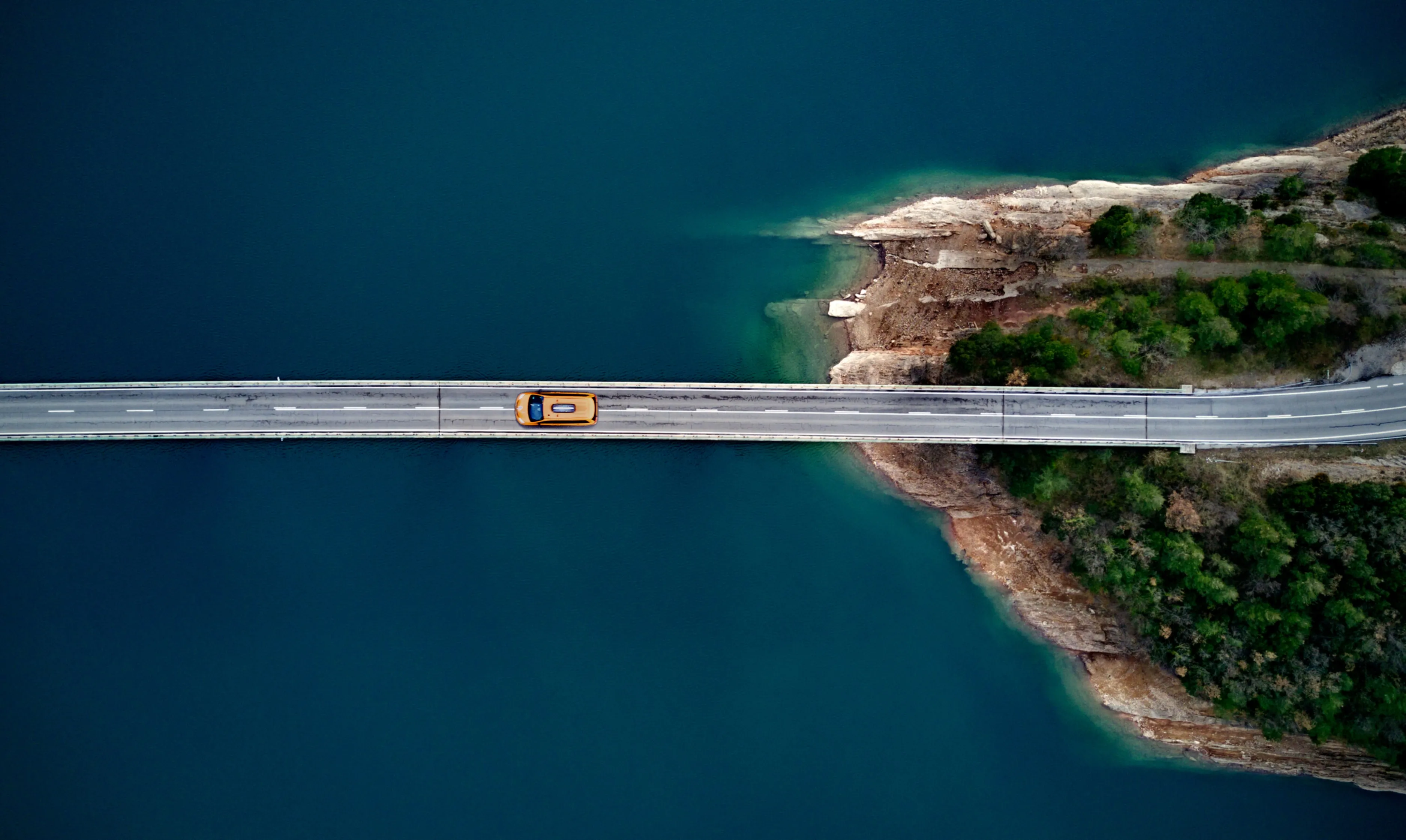
As we enter the new year, the leisure, travel, and tourism (LTT) industries face both uncertainties and opportunities. In this article, we discuss three pivotal pillars that will shape success in the sector for the foreseeable future.
Pillar 1: Safeguarding margins through smart pricing strategies
In 2024, the industry will encounter a significant challenge as labor costs continue to rise, for instance, due to the activation of renegotiated collective bargaining agreements (CAO). For example, in the Netherlands, the hospitality-CAO announced an 8 to 10% increase in salaries, and the rail-CAO anticipates a 6.25% rise for their members.
The high increase in labor costs demands businesses across the sector to implement intelligent and effective pricing strategies, especially given that the last two years have also seen significant increases in pay. Across the industry, the implementation of well-considered price increases transcends mere necessity; it emerges as a vital component for sustaining operations and ensuring long-term profitability.
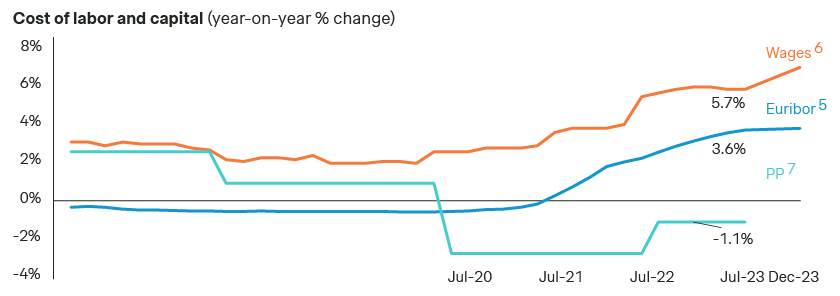
To cope with this challenge, companies in the LTT industry can safeguard their margins through smart pricing strategies. Several key actions stand out as particularly effective in navigating this landscape.
1.1 Dynamic pricing
As companies in the industry respond to the challenge of rising labor costs in 2024, embracing dynamic pricing emerges as a key strategy. Uber, a prominent player in the sector, exemplifies this approach by utilizing real-time adjustments based on factors such as demand, traffic conditions, and other pertinent variables. This flexibility allows Uber to optimize pricing strategies, ensuring a balance between competitiveness and revenue maximization, particularly during peak periods when demand surges. For the leisure and travel industry, adopting dynamic pricing models becomes instrumental in navigating the landscape marked by above-average wage cost increases, contributing to sustained profitability.
1.2 Value-based pricing approach
Furthermore, adopting a value-based pricing approach remains crucial for differentiation in the competitive market. Aligning prices with the perceived value of services enables companies not only to reflect the quality of their offerings but also to set themselves apart. We recently worked with a renowned European concert hall that implemented a new price strategy increasing the level of differentiation and bringing their offering more in line with the value their customers perceive. As a result, they were able to successfully realize double digit revenue growth and thereby ensure a healthy margin. Furthermore, we are also seeing businesses introduce more personalized pricing strategies, where businesses tailor prices to individual customer segments based on preferences and purchasing patterns, fostering loyalty, and encouraging repeat business.
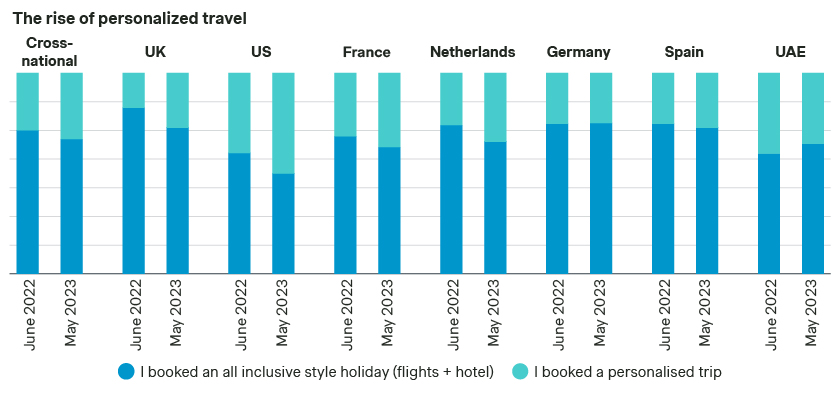
1.3 Bundled offerings
In the face of above-average wage cost increases, the implementation and refinement of bundled offerings emerges as a resilient strategy for sustained profitability. This tactic not only elevates the overall customer experience but also enables businesses to maintain and potentially boost revenue levels. By tailoring bundled services or experiences to the evolving needs of travelers, companies can enhance the attractiveness of their packages.
Marriott, a key player in hospitality, exemplifies this approach by providing comprehensive packages that include accommodation, dining credits, and additional services. Emulating industry leaders like Marriott allows businesses to foster loyalty, creating a sense of value and affinity among customers.
Pillar 2: Being prepared for uncertainty in 2024
Looking ahead to 2024, the LTT industry faces a year marked by uncertainty. While consumers may cut down on expenses in 2024 on non-essential leisure activities due to lower spending capacity, the essence of "leisure" endures, with vacations and daytrips retaining their significance. Unemployment remains low, indicating continued need for holidays. Thus, the key question is: How can companies navigate this delicate balance of reduced spending and sustained consumer engagement? Three topics stand out to consider when answering this question.
2.1 Sustaining loyalty and retention
Anticipating a scenario where consumers may indulge in leisure activities less frequently, maintaining brand loyalty becomes paramount. Even with fewer days out, it's crucial to ensure that your brand is the preferred choice when consumers decide to engage in a leisure activity. Marketing strategies should focus on personalized experiences and loyalty programs that resonate with consumers, making your brand a top-of-mind choice for their occasional leisure pursuits.
2.2 Agility in response to uncertainty
Agility is the watchword in an uncertain landscape. Travel agencies, for instance, need the capability to swiftly adapt to changing consumer preferences and geopolitical conflicts. The ability to seamlessly transition offerings such as travel packages from the Middle East to Southern Spain becomes a strategic imperative. Similarly, fast casual dining restaurants like Happy Italy, Wagamama and Vapiano’s should be agile in catering to evolving consumer behaviors responding adeptly to the trend of "down-trading", in which consumers shift to more affordable dining options without compromising perceived quality.
2.3 Providing certainty in consumer spending
In an environment where uncertainty looms, providing consumers with certainty in their spending becomes a competitive advantage. Understanding the demand for predictability, travel agencies can explore the popularity of 3-star all-inclusive packages, offering consumers a clear understanding of their vacation costs. Simultaneously, catering to price-sensitive consumers by providing basic packages with the option to add extras at a margin ensures flexibility and aligns with evolving spending preferences.
In conclusion, as the industry braces for the uncertainties of 2024, addressing these key topics—sustaining loyalty, embracing agility, and providing spending certainty—will be integral to thriving in a landscape marked by fluctuating consumer behaviors and economic dynamics.
Pillar 3: Futureproofing for 2025 and beyond
As the travel industry looks ahead to 2025 and beyond, companies are actively future-proofing their operations. This involves a dual focus on seamlessly integrating artificial intelligence (AI) for enhanced efficiency and personalized experiences, alongside a commitment to sustainability that aligns with the rising environmental consciousness among travelers. In this evolving landscape, the strategic incorporation of AI and sustainability practices emerges as a pivotal strategy for long-term success in the LTT sector.
3.1 AI Integration
The LTT sector is witnessing a significant transformation through the practical incorporation of artificial intelligence (AI), as demonstrated by industry leaders like Expedia, Airbnb, and Delta Air Lines.
Expedia, a prominent online travel agency, has implemented Smart Chatbots and Virtual Assistants to streamline customer interactions, offering real-time assistance and personalized recommendations. This strategic use of AI enhances operational efficiency and aligns with the growing demand for user-friendly travel platforms.
Similarly, Airbnb utilizes AI for Predictive Analytics in Demand Forecasting, allowing hosts to dynamically adjust pricing based on historical booking data and market trends. This approach enables hosts to optimize rates in response to anticipated demand, showcasing the adaptability that AI brings to the market. This not only benefits hosts by maximizing revenue during peak seasons but also contributes to a more competitive landscape within the travel accommodation sector.
Delta Air Lines has embraced AI through Facial Recognition and Biometrics, streamlining security procedures and boarding processes at various airports. This practical application of AI enhances efficiency and aligns with the industry's push towards contactless solutions.
The examples of Expedia, Airbnb, and Delta underscore the tangible benefits of AI in improving customer experiences, optimizing operations, and fostering innovation within the leisure travel industry.
3.2 Sustainability
Consumers are demanding more sustainable travel. For example, in our Travel Trends study conducted in 2023, we saw an increasing number of people preferring to take the train over travelling by plane. Furthermore, we see an increasing willingness-to-pay for more sustainable options for both accommodation and transportation.
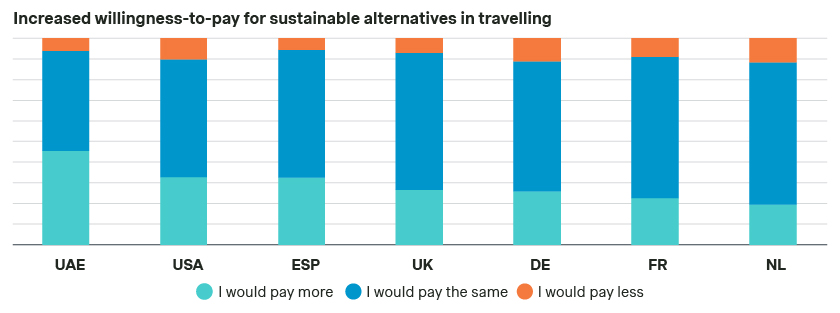
In the pursuit of sustainability within the travel sector, companies are strategically reshaping their business models around three pivotal pillars. First, the adoption of Green Practices is exemplified by EcoCamp Patagonia, an eco-friendly accommodation in Chile's Torres del Paine National Park. With green building techniques, renewable energy use, and robust waste management, EcoCamp Patagonia aligns with eco-conscious traveler preferences, showcasing the concrete benefits of integrating sustainability into business operations (EcoCamp Patagonia).
In the airline business we see companies like Air France-KLM taking a leadership role in Carbon Offsetting and Reduction, committing to sustainable aviation and carbon offset initiatives. This proactive approach signifies a dedication to reducing the carbon footprint associated with air travel and sets a precedent for the industry, emphasizing the significance of offset initiat ives. Furthermore, Lufthansa has introduced Green Fares, offering more sustainable air travel options. These fares reduce individual flight-related CO₂ emissions using sustainable aviation fuels and offset the remaining emissions through contributions to climate protection projects (Air France-KLM, Lufthansa).
Additionally, the transition to Renewable Energy Sources is evident in TUI Group's investment in sustainable operations, notably demonstrated by TUI Cruises' introduction of the world's first hybrid cruise ship powered by liquefied natural gas (LNG) and battery technology. This move reflects a commitment to reducing reliance on traditional energy sources, aligning with broader sustainability goals and positioning TUI Group as a pioneer in sustainable tourism (TUI Group).
These examples underscore how companies can integrate sustainability into their LTT business models, contributing to a more responsible and resilient future for the industry.
4. Conclusion
In conclusion, as we embark on the journey of 2024, the leisure, travel and tourism industry stand at the crossroads of change and innovation. By safeguarding margins, navigating uncertainties, and futureproofing through AI and sustainability, businesses can pave the way for sustained success in the years to come. Now is the time to chart a course toward excellence in the ever-evolving landscape of travel.
Ready to chart a course to success in the ever-evolving travel industry? For personalized insights and expert guidance, reach out to our seasoned industry experts at Simon-Kucher. Connect with Jos Eeland or Nout van Zon to navigate challenges, optimize pricing strategies, and future-proof your business. Don't miss the opportunity to stay ahead in 2024 and beyond. Contact us today for a consultation tailored to elevate your position in the Leisure, Travel, and Tourism sector.
We wish to thank Ranice Janssen (Senior Consultant) for her contribution as a co-author to this article.
Related Insights

Monetizing AI: 3 Keys to Success

Consumer Retail Businesses Shouldn’t Beat the Drum

Growing shareholder value for industrial companies

Manage for profit

Setting the right prices when the customers do not know them

Driving a successful product launch amidst strong market presence

Mastering tender excellence for contractors

Generative AI in banking: A roadmap for growth
Our experts are always happy to discuss your issue. Reach out, and we’ll connect you with a member of our team.
- Global | EN
- Global | DE
- Global | FR
- Global | CN
- Global | JA
120 Leisure Activities Examples
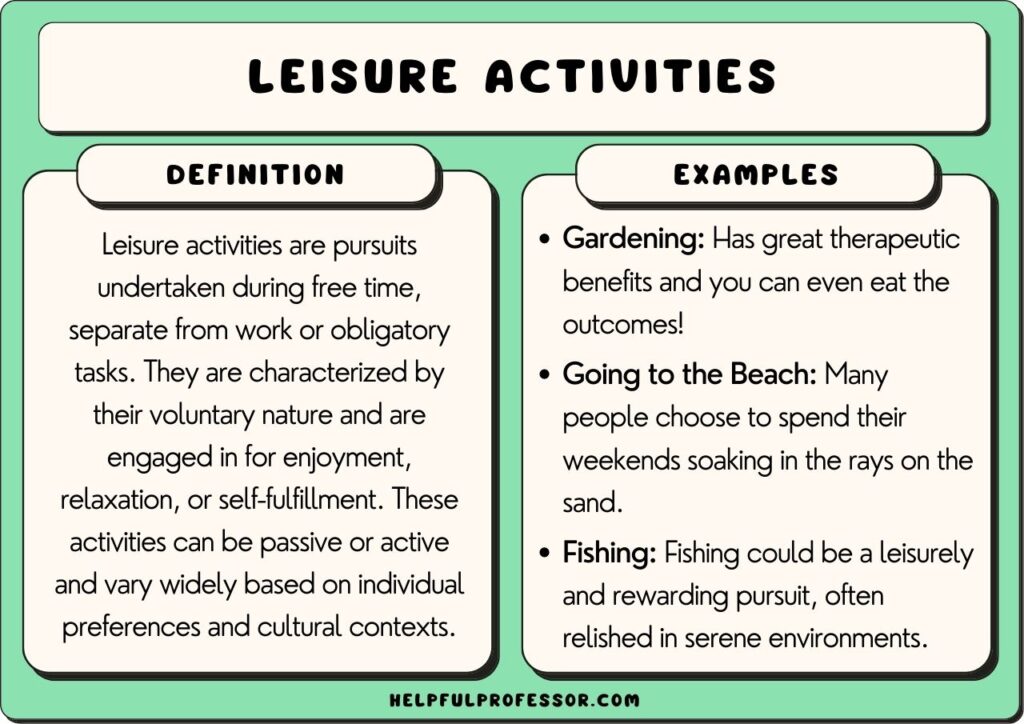
Leisure activities are any activities that people engage in during their free time, away from their work and other obligations.
We might also call them recreational activities or hobbies .
We’ve got examples from physical, travel, cultural, arts and crafts, and just about any other category you can think of. Explore them all below.
Leisure Activities Examples
Physical pursuits.
1. Walking: Walking provides a gentle yet effective form of cardiovascular exercise. Its simplicity and accessibility make it an ideal leisure activity for people of all ages as it can be enjoyed conveniently around local neighborhoods or in parks.
2. Jogging: Jogging can serve as a tranquil escape from daily life stressors, especially when performed in picturesque locations such as a city park. Regular jogging is proven to enhance cardiovascular fitness and mood.
3. Yoga: Incorporating a series of postures and controlled breathing exercises, Yoga is perfect for enhancing flexibility and balance. Regular practice could also promote mental wellness, with locations of practice varying from local community centers to peaceful home environments.
4. Swimming: Swimming is a low-impact leisure activity that serves as a full-body workout to improve muscle tone. Many find the rhythmicity of strokes and breaths meditative.
5. Cycling: Leisure cycling could be a delightful way to explore new landscapes on two wheels. The physical exertion benefits cardiovascular health, too.
6. Hiking: Hiking is a magnificent pursuit that combines physical exercise with the opportunity to appreciate natural beauty (like the breath-taking view atop a hill). The activity helps in toning muscles and improving cardio-respiratory fitness.
7. Dancing: Dancing serves dual benefits – it’s a platform for creative expression and a full-body cardiovascular workout. Various forms exist, ranging from ballroom dancing to hip-hop classes.
8. Kickboxing: Kickboxing is an intense fitness regime that not only helps improve strength, agility, and coordination, but the practice can also be empowering (e.g., classes taken at a local gym).
9. Tennis: Tennis is a competitive sport that involves two players (or doubles), giving one a full-body workout while engaging strategic thinking skills . Local clubs or park courts often provide a friendly community atmosphere.
10. Skateboarding: Skateboarding, a fusion of sport and art, develops balance and agility. Urban parks or custom-built skate parks provide the perfect venues.
11. Gardening: Gardening, although less strenuous, is a rewarding physical activity that combines creativity with moderate exertion. Establishing and caring for a home garden can create tangible, beautiful results.
12. Rock Climbing: Rock climbing is an adrenaline-pumping exercise that demands strength, endurance, and problem-solving skills . Both outdoor climbs or indoor climbing gyms offer unique challenges and experiences.
13. Basketball: Basketball is both a team sport and a stalwart leisure activity. It not only serves as a workout improving endurance and hand-eye coordination, but also nurtures team spirit.
14. Sailing: Sailing in the calm waters can be an exhilarating experience that combines the tranquility of the sea with the joy of steering a vessel. Proficiency in sailing demands understanding wind patterns and the mechanics of the boat.
15. Fishing: Fishing could be a leisurely and rewarding pursuit, often relished in serene environments. While the activity requires patience, the catch of the day provides a tangible reward for the time spent.
16. Aqua Aerobics: Aqua aerobics uses the resistance of water to provide a challenging cardiovascular workout. Classes held in local swimming pools offer a refreshing, low-impact alternative to land-based exercises.
17. Horseback Riding: Horseback riding is an engaging leisure activity that provides an opportunity to appreciate nature while also learning to communicate with the animal. Equestrian clubs often provide lessons, trails, and events for enthusiasts.
18. Pilates: Focusing on core strength, pilates combines elements of Yoga, martial arts, and Western forms of exercise. Regular practice in home settings or Pilates studios aids in flexibility, balance, and overall muscle strength.
19. Zumba: Zumba combines aerobics with dance movements inspired by various styles like salsa, samba, and hip-hop. Attending Zumba classes in local gyms serves as a fun way to break a sweat and learn new dance moves.
20. Beach Volleyball: Playing beach volleyball is a fantastic way to enjoy the sun and sand while getting a vigorous workout. Besides physical benefits, the team play nature of the game also offers an excellent platform for social interaction.
Cultural Activities
21. Museum Visits: A leisurely visit to a museum provides a window into historical, scientific, or artistic facets of our world. This activity allows for intellectual enrichment and an appreciation for different cultures or epochs.
22. Theater Performances: Watching a live theater performance, be it a dramatic play, musical, or dance recital, offers an engaging cultural experience. The energy of live performances often makes for a memorable outing.
23. Concerts: Concerts provide a unique platform to appreciate music in its most raw and powerful form. From symphony orchestras to local bands, these events cater to varied music tastes.
24. Cultural Festivals: Attending cultural festivals broadens one’s understanding of diverse traditions, often involving music, dance, and food. Many cities host such festivals, allowing attendees a chance to explore various cultures in their own locale.
25. Film Festivals: Visiting film festivals exposes one to cinema from around the world, often showcasing movies that are not found in mainstream theaters. Here, one can appreciate different storytelling styles or experimental filmmaking.
26. Art Galleries: An art gallery visit allows an individual to view and appreciate artistic expressions in various forms (such as paintings, sculptures, or installations). Such visits inspire creativity, spark conversations, and offer fresh perspectives on life.
27. Book Clubs: Book clubs provide an opportunity for literature enthusiasts to read and discuss various works. These gatherings can inspire philosophical discussions, personal insights, and foster a sense of community.
28. Poetry Readings: Poetry readings offer an intimate experience of listening to poets perform their work, often in small, cozy venues. Such events can stir emotions, resonate with personal experiences, or simply offer an appreciation of language’s beauty and power.
29. Language Exchange Groups: Language exchange groups, often found in larger cities or online platforms, allow native speakers to teach others their language while learning a new one themselves. These meetups foster understanding and appreciation for other cultures while forming new friendships.
30. Cooking Classes: Enrolling in cooking classes allows you to learn about diverse culinary practices, ingredients, and flavors. Such classes let you appreciate global gastronomy, often focusing on specific regional cuisine (like Italian pasta-making or Japanese sushi preparation).
31. Historical Reenactments: These events offer insights into life in different time periods, recreating historical moments or lifestyles. Participating or watching these awaken an understanding of history, not found in the pages of books.
32. Architecture Tours: These tours, focusing on cityscapes or specific architectural styles, provide in-depth knowledge about design, history, and cultural significance. Such tours can illuminate the relationships between people, places, and space around them.
33. Wine Tastings: At wine tastings, typically in vineyards, one can learn about wine production process while sampling different varieties. This leisure activity combines education, appreciation, and sensory indulgence.
34. Origami Workshops: By learning origami, the Japanese art of paper folding, one experiences a unique blend of creativity, patience, and precision. Such workshops often foster relaxation and impress upon the philosophies of minimalism and transformation.
35. Charity Work: Volunteering for charity work creates a direct impact on community welfare, bringing change and joy to others. Working in soup kitchens, animal shelters, or mentorship programs instills a sense of contribution and compassion.
36. Astronomy Clubs: Joining astronomy clubs and attending stargazing events offer opportunities to learn about celestial bodies and view astronomical phenomena like meteor showers. The activity combines science, nature, and wonderment of our universe.
37. Film Club: In film clubs, members watch and discuss various films, analyze cinematic techniques, and share perspectives. Through this, they delve into diverse narratives, explore different cultures, and appreciate the art of filmmaking.
38. Choirs: Joining a choir provides an outlet for those who enjoy singing, harmonizing with a group, and learning about musical arrangements. Besides improving vocal skills, it contributes to personal satisfaction and a sense of community.
39. Art Workshops: Art Workshops offer hands-on experience in various artistic disciplines like painting, sculpture, or pottery. These workshops serve as meditative spaces, encouraging creativity, experimentation, and personal expression.
40. Public Speaking Clubs: Enrolling in public speaking clubs, like Toastmasters, helps improve communication skills , boosts confidence, and fosters leadership qualities. These clubs provide a supportive environment for personal and professional development.
See More Cultural Activities Here
Hobbies and Arts
41. Photography: Amateurs and professionals alike appreciate photography for its ability to capture and express life’s moments. Engagement with this art form, whether using a traditional camera or a smartphone, allows for creative expression and visual storytelling.
42. Painting: Through painting, individuals can express emotions and ideas visually, utilizing various mediums like oils, watercolors, or acrylics. This creative process often brings relaxation and personal satisfaction.
43. Knitting or Crocheting: Knitting or crocheting offers a rewarding way to create various items like scarves, blankets, or sweaters. Apart from producing tangible objects, these hobbies foster relaxation, mindfulness, and patience.
44. Sculpting: Sculpting, through mediums such as clay or stone, allows people to shape three-dimensional works of art. It offers a unique ability to express creativity, test patience, and develop an understanding of form and structure.
45. Origami: The art of origami involves transforming a flat piece of paper into a sculptural form through intricate folding patterns. Mastering this unique art form provides a sense of achievement and mental relaxation.
46. Pottery: Crafting pottery involves shaping clay forms on a wheel, then firing them to hardness. It’s a fantastic way to create functional and decorative pieces, which instill a sense of accomplishment and aesthetic satisfaction.
47. Magic and Illusion: Practices of magic and illusion not just entertain but also stimulate the mind, requiring learning how to perform tricks that astonish audiences. This hobby enhances dexterity, observation skills and overall confidence.
48. Musical Instruments: Playing a musical instrument like the guitar, piano, violin or drums, can be deeply rewarding. The practice and mastery of an instrument can promote discipline, relieve stress, and provide personal satisfaction.
49. Writing Fiction: Writing fiction or poetry allows one to weave stories or express deep-seated emotions creatively. This pursuit provides an emotional outlet and may even lead to publication.
50. Stamping and Card Making: Stamping and card-making hobbies involve creating custom greeting cards for any occasion. The creativity involved in designing, stamping, and decorating these cards makes it an enjoyable hobby.
51. Model Building: Building models, like ships, planes, or miniature landscapes, require focus, patience, and attention to detail. It’s a hobby that results in a tangible, often fascinating finished product.
52. Bird Watching: Bird Watching or “birding” often involves venturing into nature to observe birds in their natural habitat, procuring both knowledge and appreciation for nature.
53. Gardening: Gardening at home involves growing flowers, vegetables, or herbs, enhancing the aesthetic appeal of living spaces while serving a functional purpose. Cultivating and caring for plants can offer a sense of accomplishment and tranquility.
54. Woodworking: Woodworking involves creating objects (like furniture or decorative pieces) out of wood. This hobby lets you work with your hands, develop problem-solving skills, and enjoy the satisfaction of creating something from scratch.
55. Baking: Baking as a hobby can be both creative and rewarding, with the bonus of delicious, homemade goodies at the end. Baking challenges can range from elaborate cakes to artisan bread, providing endless exploration.
56. Drawing: Drawing, whether with pencils, charcoal or digital mediums, allows the exploration of visual ideas and the expression of creativity. The hobby offers a means to relax, process emotions, and develop observation skills.
57. Comic Book Collection: Collecting comic books allows hobbyists to indulge in diverse narratives and appreciate distinctive graphic styles. Some collectors cultivate deep knowledge of specific characters, creators, or epochs in comic book history, often forming extensive collections.
58. Astronomy: Stargazing as a hobby can expand knowledge of celestial bodies and produce awe for the universe. With a simple telescope at hand, one can observe planets, constellations, and celestial events like meteor showers right from their backyard.
59. Dressmaking and Design: Dressmaking allows for customization of one’s style and fit of garments. The creative process stimulates imagination, improves problem-solving skills, and boosts self-confidence.
60. Magic Tricks: Performing magic tricks is a hobby that combines manual dexterity, quick thinking, and entertainment skills. It’s a fun way to bring joy and curiosity to people of all ages.
Travel and Relaxation
61. Road Trips: Road trips offer the freedom to explore various locations at your own pace. Sightseeing along the way and visiting local attractions make these journeys a memorable adventure.
62. Camping: Camping allows one to immerse in nature while honing survival skills. It can provide serenity, away from the hustle and bustle of daily life.
63. Meditation: Practicing meditation cultivates mindfulness and emotional well-being. Regular practice reduces stress and improves concentration through various techniques like focusing on breath, a word, or an object.
64. Spa Days: Visiting a spa provides a relaxing escape, helping to rejuvenate mind and body. Treatments like massages, facials, and body wraps can relieve stress and promote wellness.
65. Guided Tours: Guided tours, arranged by travel companies or independent guides, offer in-depth knowledge about historical sites, cities, or natural attractions. These tours often provide fascinating insights and trivia that enrich the travel experience.
66. Beach Getaways: A visit to the beach provides both leisure and thrill. Enjoying the sun, sand, and sea can be an elixir for the soul, while watersports offer an adrenaline boost.
67. Nature Walks: Nature walks serve as an opportunity to admire the beauty and tranquility of the natural world. Whether in a city park or a forest trail, these walks often offer relaxation and a deeper understanding of nature.
68. Cruises: Cruise trips offer an all-inclusive travel experience with activities, meals, and entertainment onboard. Visits to various ports allow a snapshot of diverse cultures and landmarks.
69. Tea Tasting: Attending tea tasting sessions enables understanding different tea types, brewing methods, and cultural traditions associated with tea. Tea estates often offer these sessions, providing a calm, aromatic ambiance.
70. Bird Watching Expeditions: Traveling to different habitats to observe birds in their natural environment expands knowledge of avian species. These expeditions often instill a deeper appreciation for biodiversity and conservation efforts.
71. Yoga Retreats: Yoga retreats provide an immersive experience of yoga practice, often in serene locations. These retreats combine physical exercise, meditation, and wellness workshops, promoting wellbeing and self-discovery.
72. Music Festivals: Attending music festivals offers an opportunity to watch various artists and bands perform live, often spread over a few days. These events also provide a platform to meet fellow music lovers and enjoy a shared community experience.
73. Theme Parks: Visiting theme or amusement parks offers a fun-filled day of rides, games, and entertainment. Such activities offer a break from routine and spark joy and excitement.
74. Food Festivals: Food festivals allow one to taste a variety of cuisines, discover new dishes, and indulge in gastronomic delight. Often these festivals also host cooking demonstrations or competitions, enhancing the culinary experience.
75. Wildlife Safaris: Wildlife safaris provide a rare and thrilling opportunity to observe animals in their natural habitat. Responsible safari experiences also contribute to conservation efforts and promote respect for native fauna.
76. Mountain Climbing: Mountain climbing offers a physically challenging yet rewarding experience. Reaching a summit, one not only experiences the grandeur of nature but also a sense of personal accomplishment.
77. Scuba Diving: Scuba diving opens a gateway to explore the underwater world, teeming with eclectic marine life and colorful corals. It’s a fascinating leisure activity that combines exploration, athleticism, and serene beauty.
78. City Tours: Taking city tours provides insights into a city’s history, culture, and landmarks. These tours often involve walking, cycling, or bus rides and can be a great starting point for exploring a new city.
79. Visiting National Parks: National parks offer a vast expanse of unspoiled natural beauty and diverse ecosystems. Visiting these parks offers recreational activities like hiking or bird-watching and fosters an appreciation for natural preservation.
80. Hot Air Balloon Rides: Experiencing a hot air balloon ride provides a unique perspective of landscapes from above. It’s a serene yet exhilarating experience, often remembered for a lifetime.
81. Video Gaming: Whether on a console or computer, video gaming is a popular leisure activity. Games span various genres, including action, strategy, role-playing, and simulation, offering entertainment and occasionally building problem-solving skills.
82. Blogging: Blogging serves as a platform to communicate thoughts, experiences, or knowledge about a specific interest. It can enhance writing skills , foster connections with readers, and establish oneself as a thought leader in a specific field.
83. Building Computers: Building or modifying computers offers a hands-on understanding of computer hardware. This hobby can create a custom machine that caters to individual needs while providing a sense of accomplishment upon completion.
84. Podcasting: Podcasting enables sharing ideas, narratives, or expert commentary around specific subjects. Creating or tuning into podcasts fosters knowledge-sharing and serves as an engaging leisure activity.
85. Virtual Reality (VR) Experiences: VR technology offers immersive experiences, ranging from games to virtual tours of far-off places. The interactive nature of VR provides a unique way to relax and explore.
86. Coding: Learning to code languages like Python or JavaScript can not only enhance problem-solving skills but also enable creating websites or apps. Coding as a hobby can lead to personal projects or potential career paths.
87. Drone Flying: Flying drones as a leisure activity provides unique perspectives of landscapes. For enthusiasts, this could also include drone racing or capturing spectacular aerial photography.
88. 3D Printing: 3D printing allows the creation of physical objects from digital designs. The process opens avenues for creativity, innovation, and the satisfaction of bringing designs to life.
89. Digital Art: Creating digital art, using tools like Adobe Photoshop or Illustrator, offers unique possibilities for creating designs or illustrations. This hobby allows for creative expression and can also be a stepping stone to professional work.
90. Online Chess: Digital platforms have made chess widely accessible, enabling games with opponents across the globe. Playing online chess can challenge the mind, improve strategic thinking, and provide a sense of achievement.
91. Mobile Photography: Leveraging the capabilities of smartphone cameras, mobile photography enables capturing high-quality photos. This hobby allows creative expression and can be coupled with mobile editing apps to further enhance the images.
92. Virtual Volunteering: Virtual volunteering activities, like digital mentoring or online fundraising, enable contributing to causes from home. This digital engagement offers a sense of fulfillment by helping others.
93. Social Media Content Creation: Creating content for social media platforms (like Instagram, YouTube, and TikTok) is an increasingly popular pastime. It pushes for creativity, allows sharing aspects of one’s life, and fosters a sense of community with followers.
94. E-reading: E-readers have made thousands of books available at one’s fingertips. They allow book lovers to carry their entire library wherever they go, facilitating reading anytime and anywhere.
95. Video Editing: Video editing, using software like Adobe Premiere or Final Cut Pro, allows one to craft compelling narratives or visual effects. This activity requires creativity and technical skills , often resulting in personal or shared video projects.
96. Augmented Reality (AR) Games: AR games like Pokémon Go blend digital elements with the real world, offering a unique gaming experience. Incorporating physical movement, these games offer a fun, immersive way to spend leisure time.
97. Online Trivia and Quizzes: Numerous online platforms offer trivia games and quizzes that test knowledge across a range of subjects. It’s an enjoyable and engaging way to learn new things and compete with friends or players globally.
98. Internet Radio and Music Streaming: Services like Spotify or Apple Music have revolutionized music listening, with broad and customized playlists. These platforms offer access to a vast array of artists, genres, and podcasts, making the discovery of new music an engaging activity.
99. Online Courses: Online platforms offer courses across various disciplines like coding, design, or marketing. Through this, one can explore interests, learn new skills, or further knowledge at their own pace.
100. Animation: Creating animation or cartoons using software like Blender or SketchBook can be a fascinating hobby. It can spur creativity and can lead to the creation of short films or GIFs for sharing.
101. E-commerce Selling: With platforms like eBay or Etsy, people can start selling handmade crafts, vintage items, or even unwanted stuff as a hobby. The activity not only earns extra cash but can also be fun and rewarding.
Miscellaneous
102. Magic and Illusion: Learning and performing magic tricks not only entertains but also stimulates the mind, by learning how to perform tricks and illusions that astonish audiences. This hobby enhances dexterity, observation skills, and overall confidence.
103. Metal Detecting: Metal detecting is an outdoor activity that could lead to discovering interesting and perhaps valuable objects burrowed in soils of parks, beaches, or historical sites. Apart from the thrill of finding buried treasure, metal detecting presents a chance to learn about history.
104. Homebrewing Coffee: Brewing coffee at home has grown into a sophisticated hobby. Experimenting with coffee beans, brewing methods, and techniques to produce the perfect cup can become a quest for many caffeine enthusiasts.
105. DIY Crafts: DIY crafts can include a wide array of projects, like home decor, handmade jewelry, or upcycling items. These activities allow for creativity and could also offer practical solutions or idiosyncratic styles to homes.
106. Volunteering: Volunteering time and skills to social, environmental, or community projects is a rewarding activity. It helps to create a positive impact on others’ lives and develops personal skills and experiences.
107. Stargazing: Stargazing introduces astronomy enthusiasts to celestial wonders. Observing constellations, meteor showers, and planets fosters a profound connection with the universe and an understanding of astronomical phenomena.
108. Calligraphy: Practicing calligraphy combines art and writing, providing a creative outlet that also improves handwriting. Styles ranging from the traditional to the contemporary create beautiful art pieces and personalized cards or invitations.
109. Puppetry: Art of puppetry, creating and manipulating puppets, is a unique creative pursuit that can be performed for self-enjoyment or entertainment for others. Puppet creation allows for artistic expression, while performing improves storytelling and performance skills.
110. Parkour: Parkour, also known as free-running, is an outdoor activity involving movement through urban environments with agility and speed. This hobby not only improves physical fitness but also builds mental resilience and problem-solving skills.
111. Ghost Hunting: For the brave at heart, ghost hunting can provide thrill and a rush of adrenaline. This unusual hobby often involves visiting haunted locations and can lead to interesting, spooky tales to share.
112. Astronomy: Engaging in a pursuit of knowledge about celestial objects, space, and the physical universe can be both educational and awe-inspiring. With a simple telescope, even amateur astronomers can discover the beauty of distant stars and planets from their own backyard.
113. Stand-Up Comedy: Performing stand-up comedy is a creative and challenging leisure activity. This pursuit not only serves as a platform for humor and storytelling but also boosts public speaking skills and confidence.
114. Fermenting: Fermenting foods and drinks at home, such as pickles, yoghurt or Kombucha, is a growing hobby. It can be a rewarding way to create tasty, probiotic-rich foods at home.
115. Urban Exploration: Urban exploration involves visiting and documenting abandoned and restricted areas in urban settings. This pastime requires a sense of adventure and can lead to the discovery of forgotten pieces of history.
116. Candle Making: Homemade candles not only fill homes with delightful aromas but also serve as unique decor pieces. The process allows for creative control over the scent, color, and shape of the candles and can result in personalized gifts for friends and family.
117. Soap Crafting: Crafting soap at home allows for the customization of ingredients, shapes, and scents. It’s a fun, hands-on hobby that results in practical, homemade products.
118. Genealogy: Researching genealogical history provides fascinating insights into one’s ancestry, offers a personalized way to explore history, and may lead to surprising discoveries about family heritage.
119. Antiquing: Antiquing, or the art of finding, acquiring, and appreciating old objects, can be a fulfilling pastime. Visiting antique shops and markets fosters an appreciation of history and craftsmanship that modern items often lack.
120. Tea Ceremony: Studying and performing the traditional tea ceremony can be a meditative and cultural learning experience . This pursuit provides an immersion into the historical and spiritual aspects of tea culture.
Leisure activities cater to diverse interests and provide an avenue for individuals to relax, enjoy and broaden their horizons. Remember, the key to a fulfilling leisure activity is that it should bring you joy and enhance your overall life quality. Now, how about putting down this article and enjoying your favorite leisure activity?

Chris Drew (PhD)
Dr. Chris Drew is the founder of the Helpful Professor. He holds a PhD in education and has published over 20 articles in scholarly journals. He is the former editor of the Journal of Learning Development in Higher Education. [Image Descriptor: Photo of Chris]
- Chris Drew (PhD) https://helpfulprofessor.com/author/chris-drew-phd/ What is Educational Psychology?
- Chris Drew (PhD) https://helpfulprofessor.com/author/chris-drew-phd/ What is IQ? (Intelligence Quotient)
- Chris Drew (PhD) https://helpfulprofessor.com/author/chris-drew-phd/ 5 Top Tips for Succeeding at University
- Chris Drew (PhD) https://helpfulprofessor.com/author/chris-drew-phd/ 50 Durable Goods Examples
1 thought on “120 Leisure Activities Examples”
Great list of Leisure activities. I am a Therapeutic Recreation University Student and I am looking forward to seeing how I can implement these ideas into programs or patient recommendations in the future. Thanks for sharing!
Leave a Comment Cancel Reply
Your email address will not be published. Required fields are marked *

IMAGES
COMMENTS
Travel. Leisure tourism, a popular form of travel, refers to the act of taking a trip for the purpose of relaxation, recreation, or enjoyment. It involves participating in activities typically done during one's free time, such as sightseeing, shopping, dining out, and engaging in cultural events. While leisure tourism can take many forms, it ...
Beyond the ones we listed, there are plenty of other types of tourism, such as medical tourism, religious tourism, wellness tourism, dark tourism, and more. Broadly speaking, however, we could consider leisure and business tourism to be among the two main categories based on travelers' motivation. Categories.
Leisure travel. Leisure travel generally refers to travel that is undertaken for the purpose of pleasure, enjoyment, relaxation or special interests. ... There are also other major events that people may choose to travel for. This could be, for example, the Chelsea Flower Show in London, the Day of the Dead festival in Mexico, ...
Examples of leisure travel include: Visiting friends or family: Going on vacation: Taking a cruise: Visiting a theme park: Going to a concert: Attending a sporting event: Shopping: Eating out: Sightseeing: What is Leisure Travel? Leisure travel is travel undertaken for pleasure or relaxation. It is a type of tourism that is distinct from ...
Overall, leisure and tourism have a far-reaching impact on individuals, communities, and economies. They provide opportunities for personal growth, economic development, cultural exchange, and environmental preservation. Embracing and promoting leisure and tourism is crucial for fostering well-rounded, sustainable, and inclusive societies.
2024 Trends: More Bleisure Travel, A Focus on Wellness, and Train Trips. Travelers are spending slightly more money this year than last, but not on the same things. The U.S. Travel Association's October report shows overall spending on travel is up 3.8% year-to-date, and hotel revenue was flat in September —the fifth month in a row.
This study fills in a gap in leisure tourism literature by proposing the merits of touch points in tourism experience and placing importance on conceptions of eudaimonia. ... and souvenir stores are typically provided to consumers by partners throughout the travel destination. Examples include the transportation provided by third-party car ...
The agency's last major leisure travel study was conducted in 2019, so this year's report reveals much about how leisure travelers' planning and booking behavior has altered from pre-pandemic times. Currently, some of the most impactful factors that are creating some startling changes in consumer mindsets, preferences and behavior are the ...
The Top Trends in Leisure Travel. According to a study commissioned at the end of 2022 by Radisson Hotels, the global growth of the middle class will create a tourism market of five billion ...
Travel for pleasure and tourism has not typically been included as a human universal, but visiting others has been common in history. Travel required in order to seek mates outside of one's own social group is typical. Hadza hunter-gatherers of northern Tanzania, for example, usually live in groups of about 25. While marriage sometimes occurs ...
For example, tourism, sports, and cultural pursuits are all types of leisure . Traveling to unusual environments to obtain leisure tourism experiences has gradually become a major part of leisure (Cheng, 2006). Ideally, there should be no differences in the concept of leisure tourism for sighted individuals and for visually impaired individuals.
For example, Amadeus air agency booking data shows the average length of stay from the UK (3.75 days in 2022 compared to 2.80 days in 2019) and Canada (8.17 days in 2022 compared to 7.15 days in 2019) is now longer than pre-pandemic. Such trips will require more thorough planning to meet the needs of both business and leisure travelers.
Paris has been named the best leisure destination in the world to visit 10 2020, according to the CEOWORLD magazine's list. Palermo in Italy ranked number 2 on the list, followed by Portugal's Porto (No. 3), Dubrovnik in Croatia (No. 4), and Morocco's Marrakech (No. 5). Magazine placed Tokyo in sixth on the list ahead of Melbourne, and ...
Two baths and a sauna were constructed, with ongoing work to introduce new children's play areas. Gothenburg has been ranked number one sustainable destination in the Global Destination Sustainability Index five times. This article was first published Oct 5, 2020 and updated Apr 4, 2022. Be inspired by these sustainable sights worldwide that ...
tourism, the act and process of spending time away from home in pursuit of recreation, relaxation, and pleasure, while making use of the commercial provision of services.As such, tourism is a product of modern social arrangements, beginning in western Europe in the 17th century, although it has antecedents in Classical antiquity.. Tourism is distinguished from exploration in that tourists ...
The travel industry is evolving to meet and capitalize on this experiential purchasing trend, known as experience tourism. At Regiondo, a premier provider of booking software, we can provide the experiential travel booking options that are so vital to success today. You might also like: The Rise of Bleisure Travel and How to Make the Most of it.
The work extends understanding of research into experience encounters and provides a concise overview of developments in the field using a range of leisure and tourism examples. Catheryn Khoo-Lattimore, School of Hospitality, Tourism, and Culinary Arts, Taylor University, Malaysia in Annals of Tourism Research, Vol. 38, No. 3, pp. 1206-1208 ...
A wonderful example is Ananda, a haven of holistic wellness and spiritual rejuvenation centre in the foothills of the Himalayas. Melding ancient Indian healing practices with luxury, this retreat invites guests to embark on a transformative journey of mind, body, and spirit. ... Going forward, Leisure travel trends highlight a shift towards ...
Overview. In this chapter, we discuss the concept of recreation in tourism and hospitality. Recreation can be defined as the pursuit of leisure activities during one's spare time (Tribe, 2011) and can include vastly different activities such as golfing, sport fishing, and rock climbing. Defining recreation as it pertains to tourism, however ...
Wellness tourism can be expensive — for example, a seven-day stay at the Chenot Palace Weggis health and wellness retreat starts at $5,722, and tuition at Esalen Institute varies from $540 to ...
This contribution posits that the tourism sector—as part of the leisure society—deserves a more prominent position in regional science. After a general outline of trends in modern tourism, this chapter argues that promising research angles can be found in: (a) the closer examination of the complex components of leisure time, (b) the income drivers and prosperity impacts of tourism, and (c ...
The leisure, travel, and tourism (LTT) face both uncertainties and opportunities. Find out the three pivotal pillars that will shape success in the sector. ... Consumers are demanding more sustainable travel. For example, in our Travel Trends study conducted in 2023, we saw an increasing number of people preferring to take the train over ...
65. Guided Tours: Guided tours, arranged by travel companies or independent guides, offer in-depth knowledge about historical sites, cities, or natural attractions. These tours often provide fascinating insights and trivia that enrich the travel experience. 66. Beach Getaways: A visit to the beach provides both leisure and thrill. Enjoying the ...